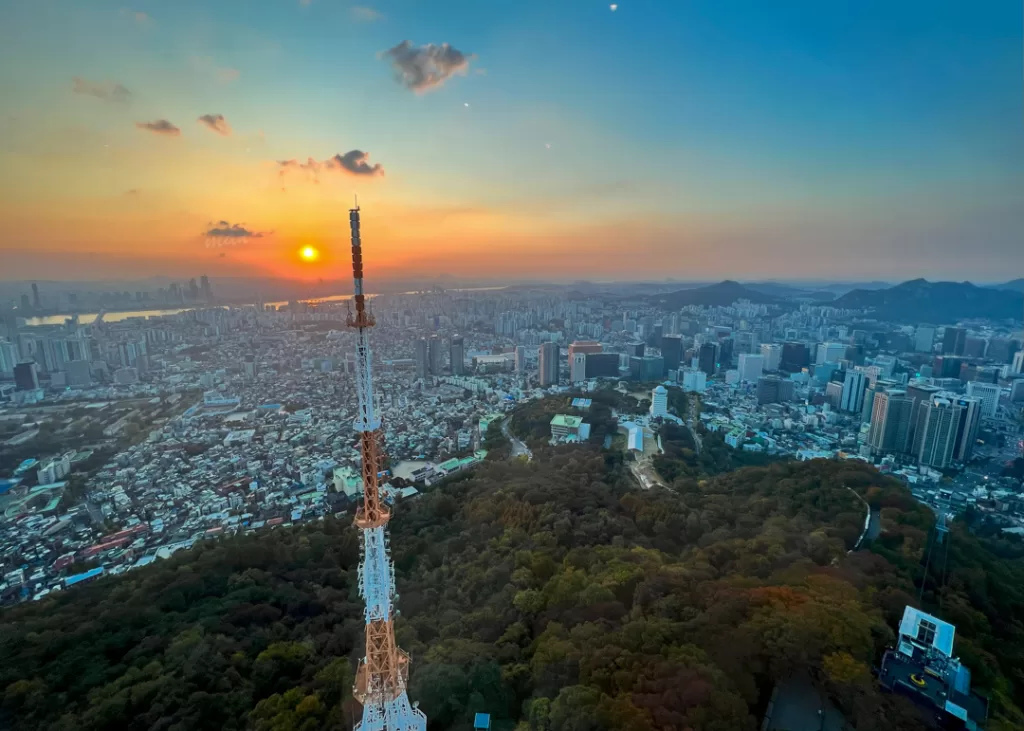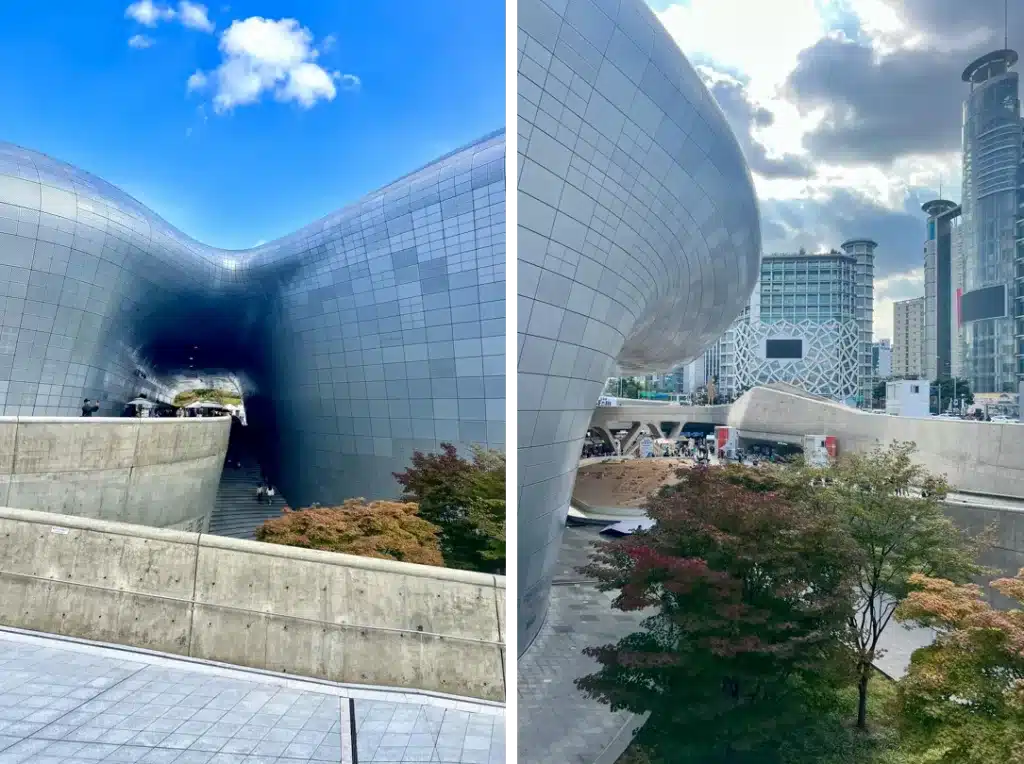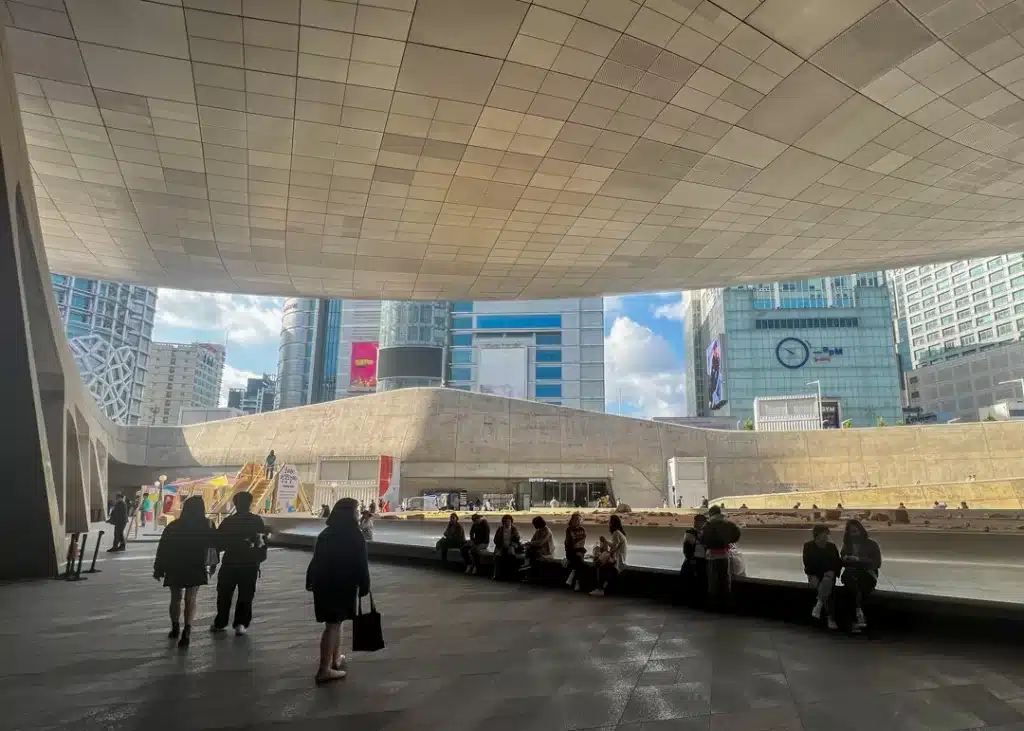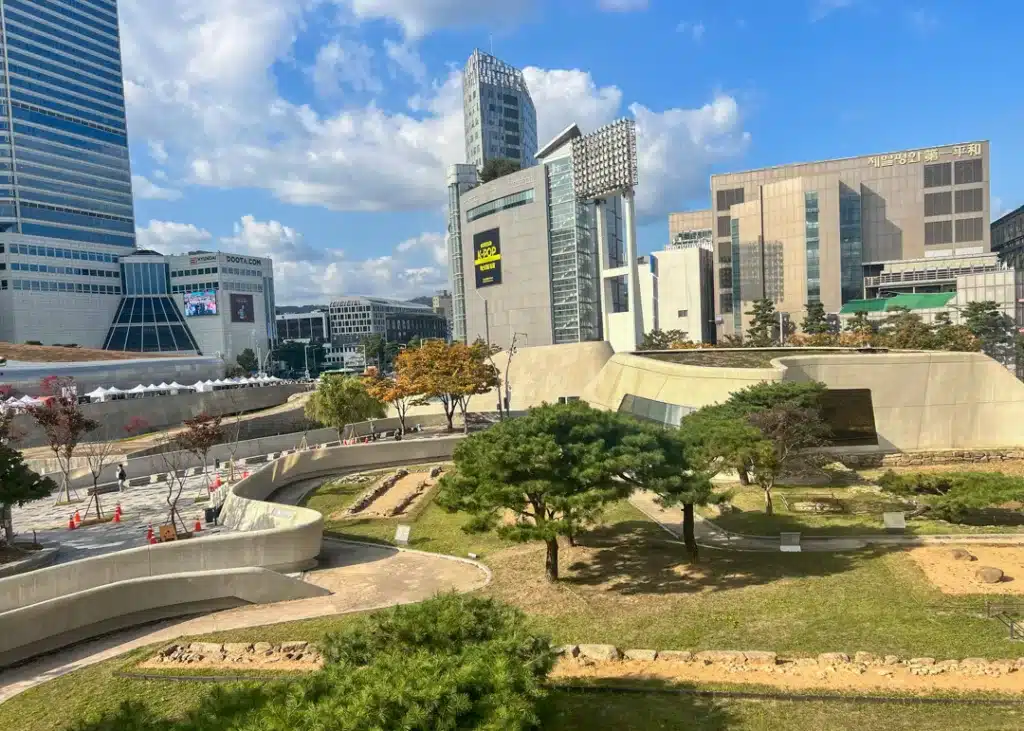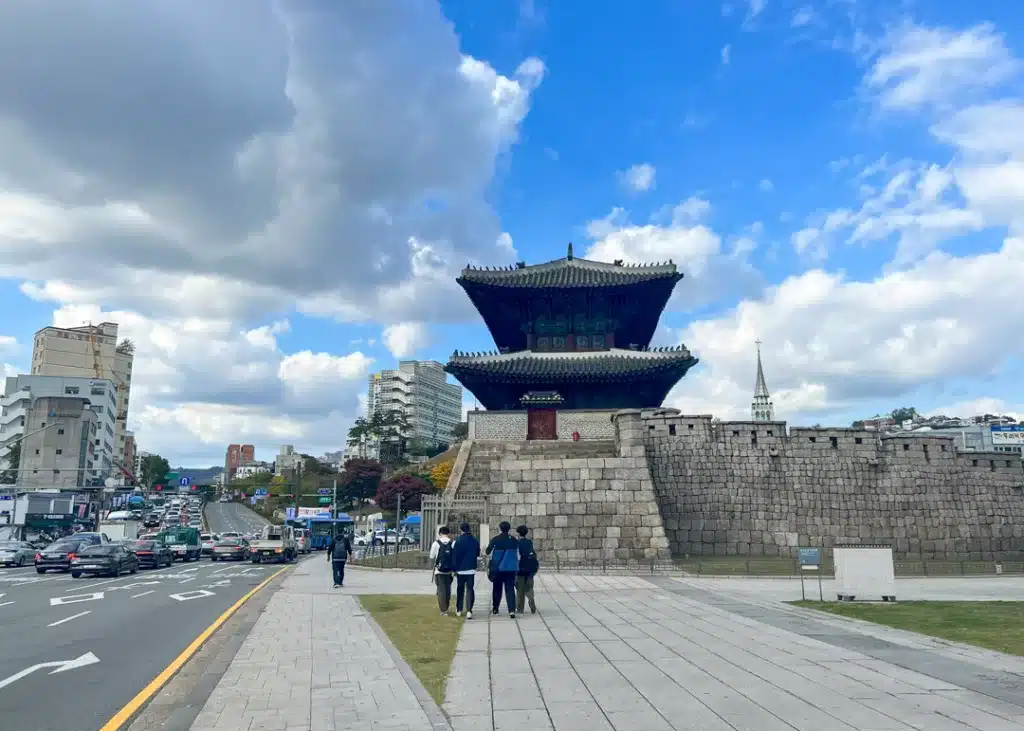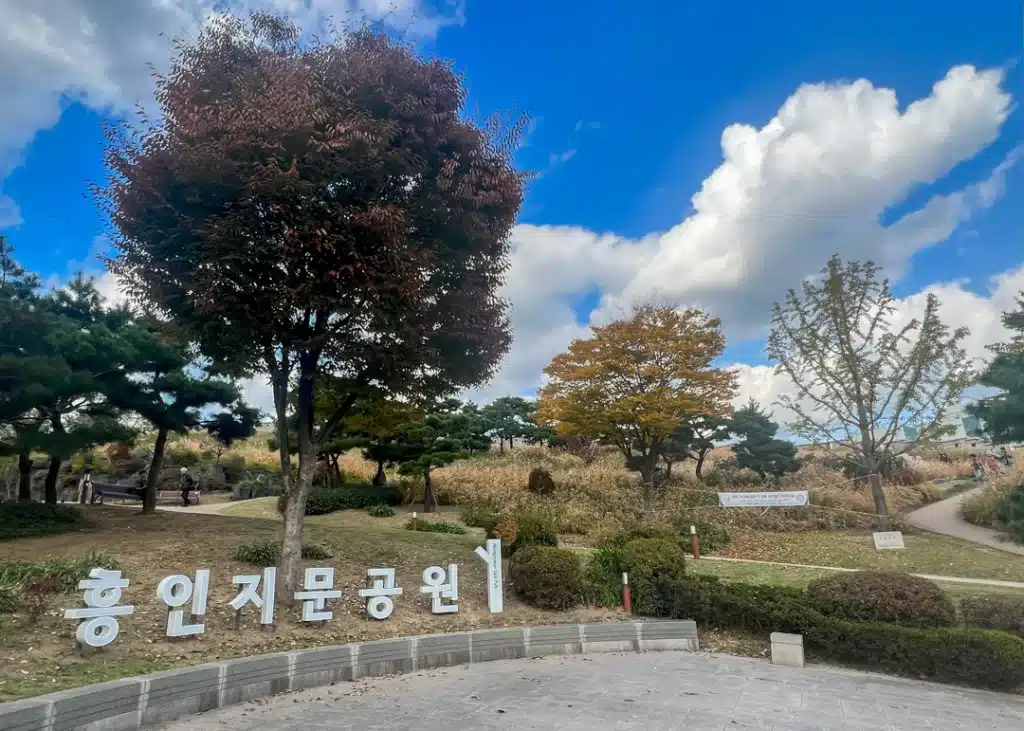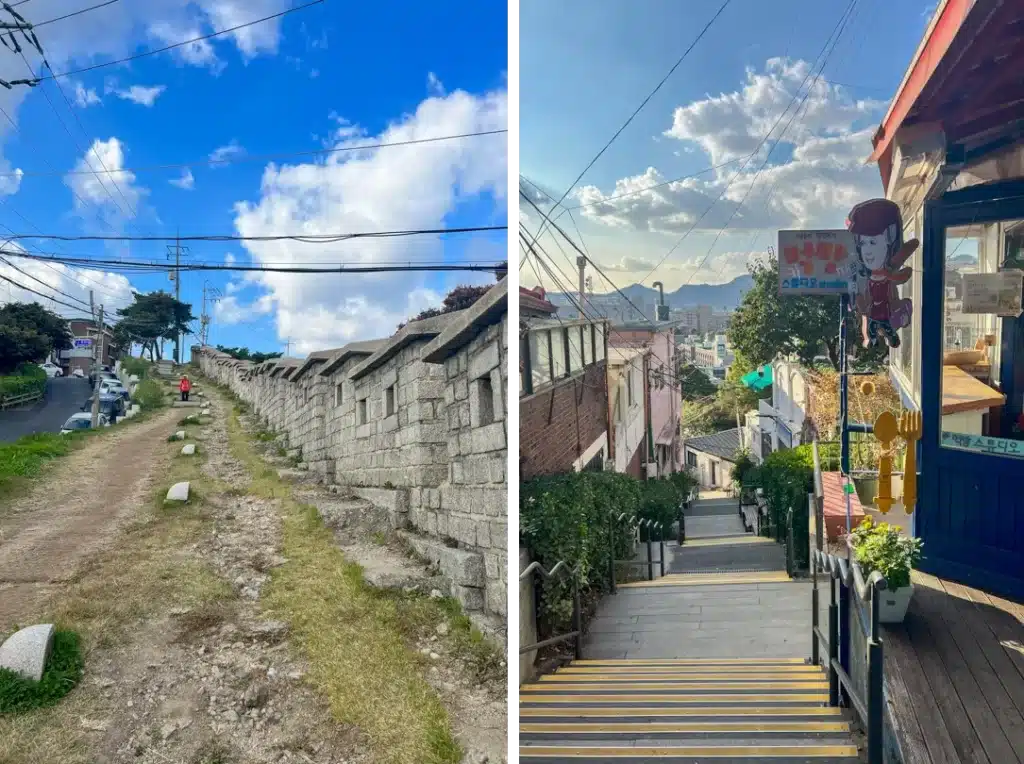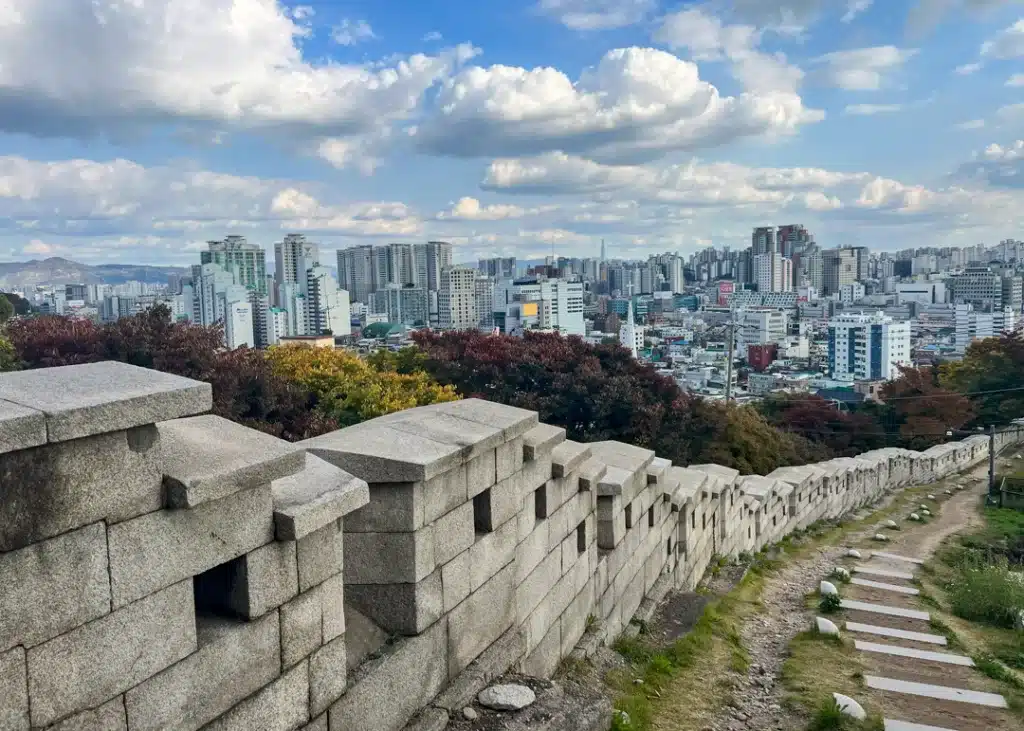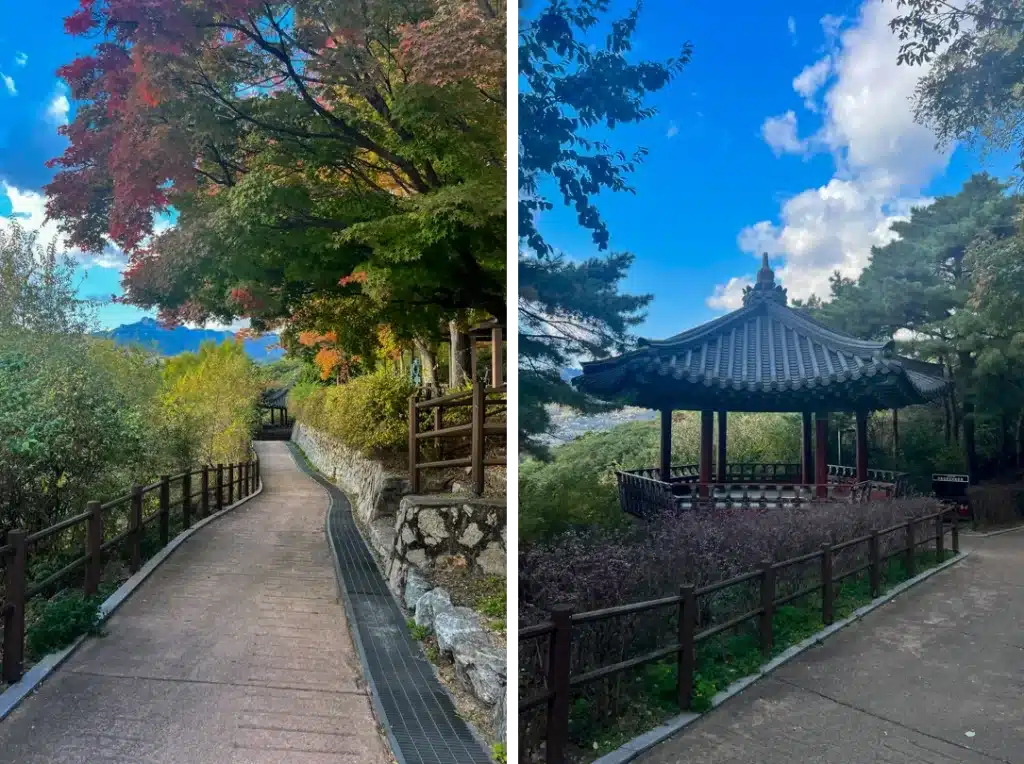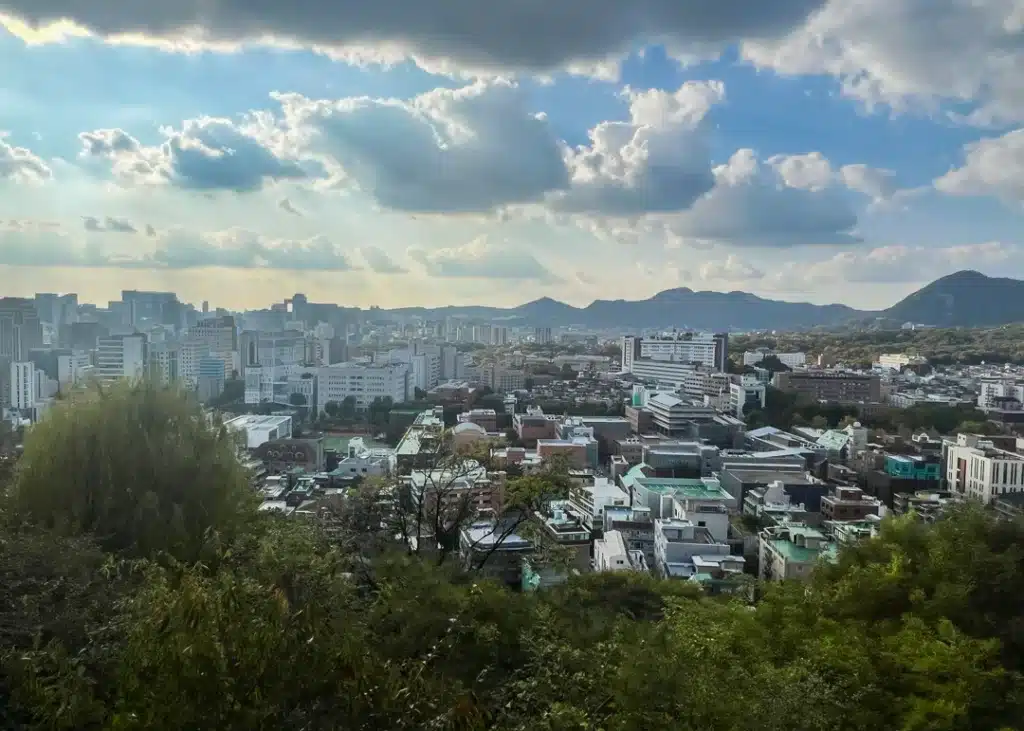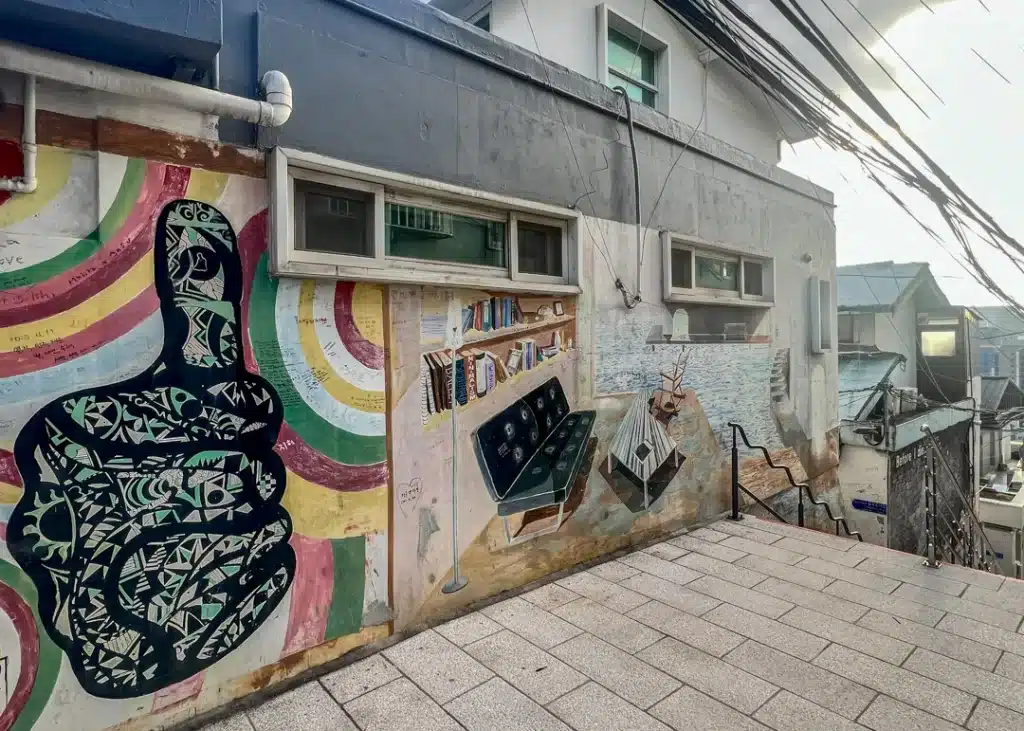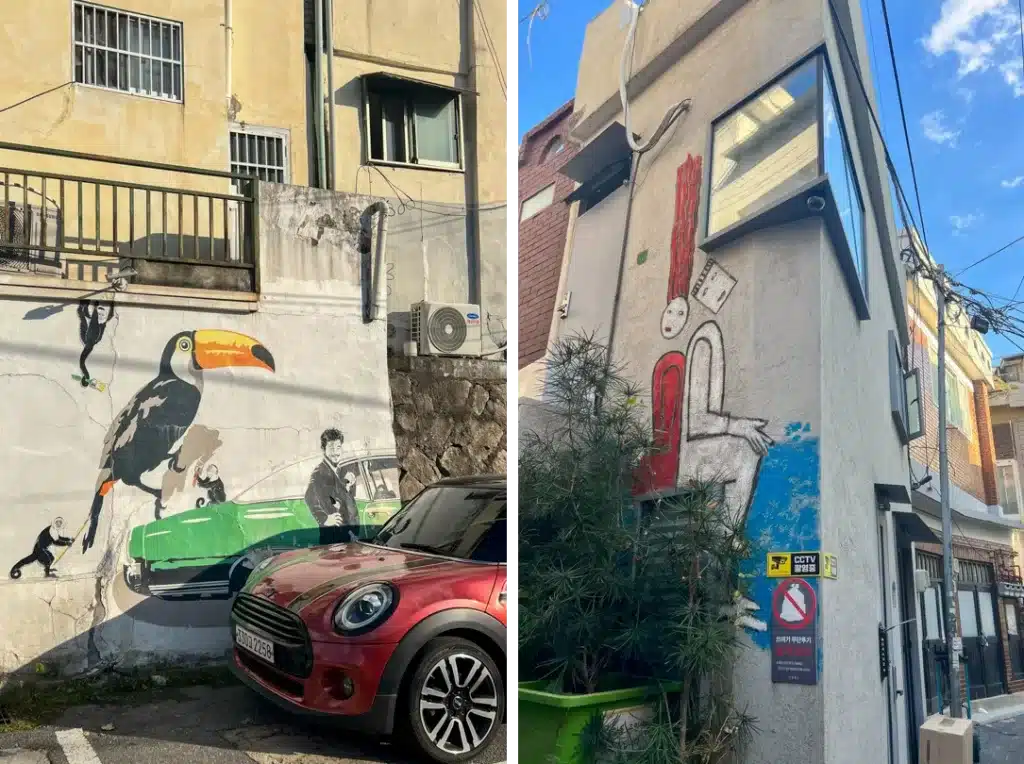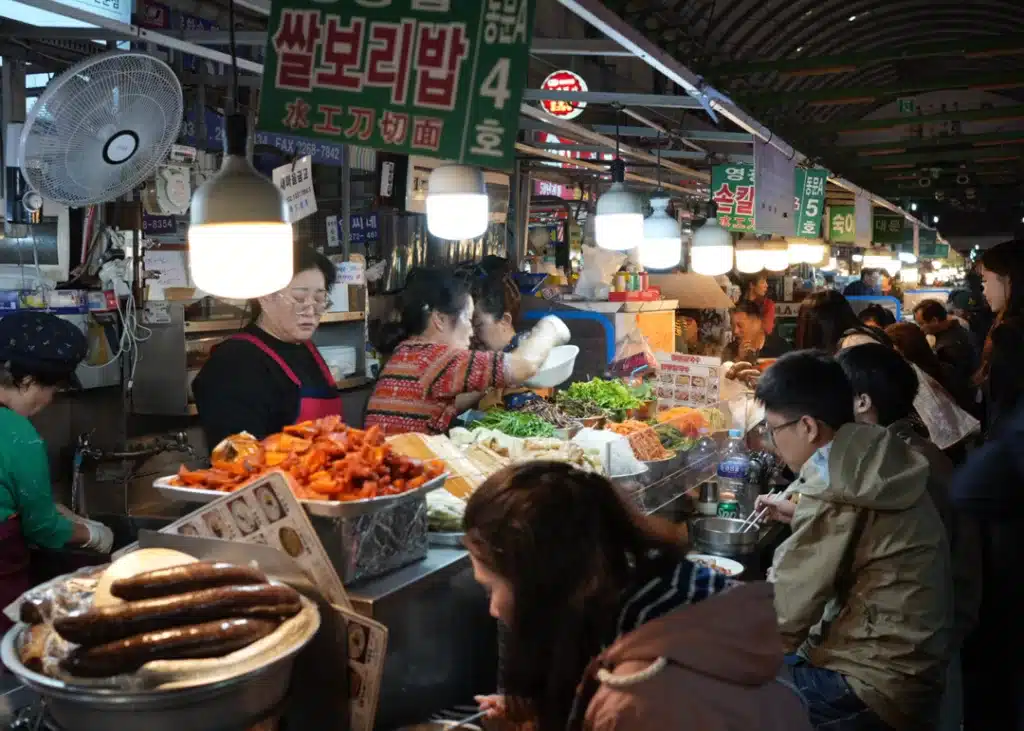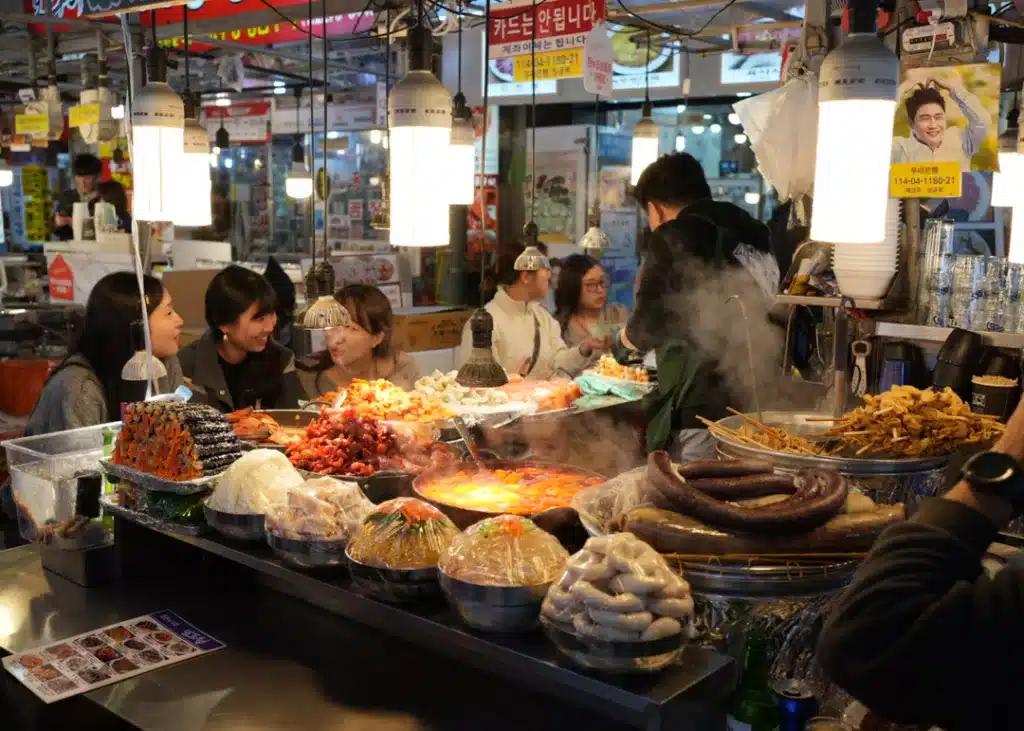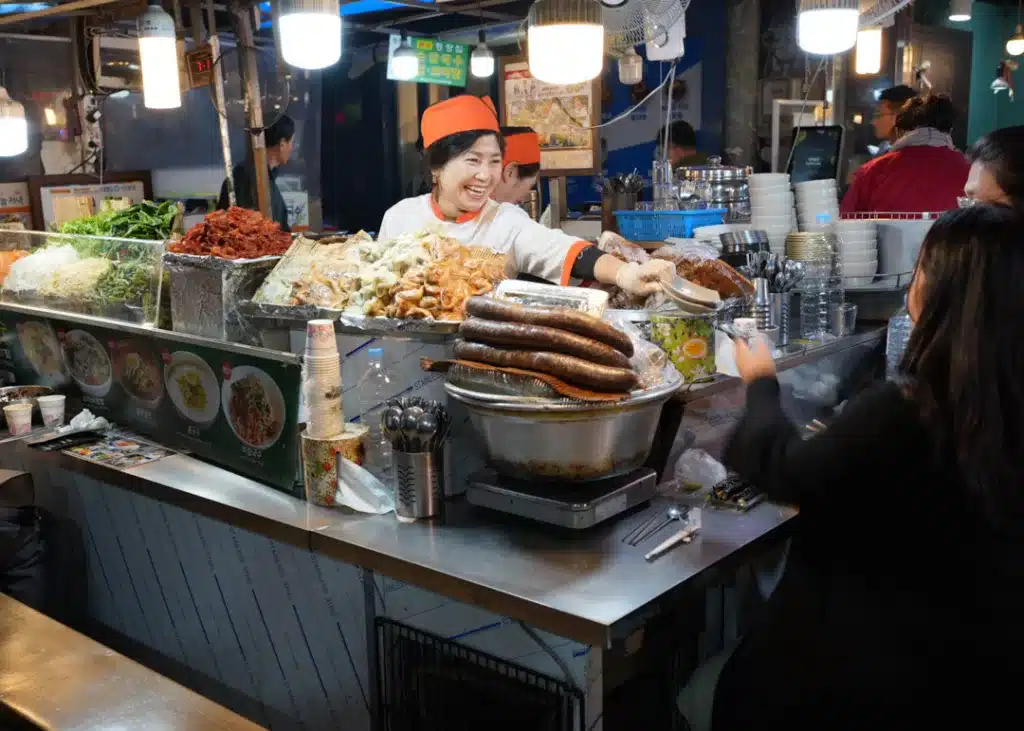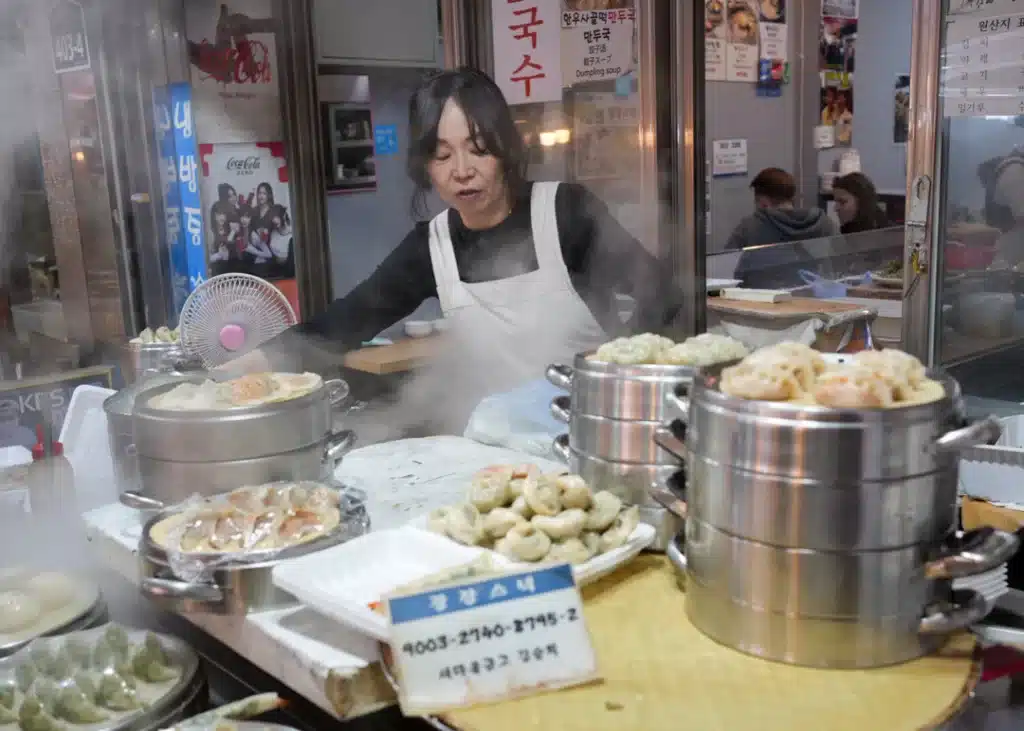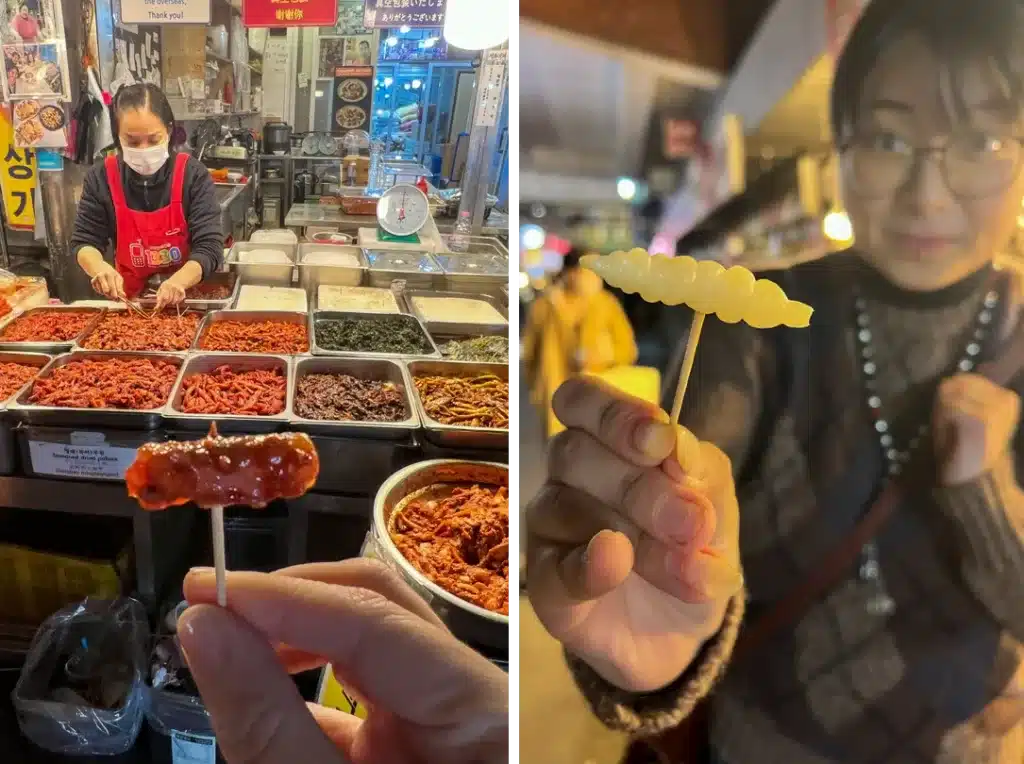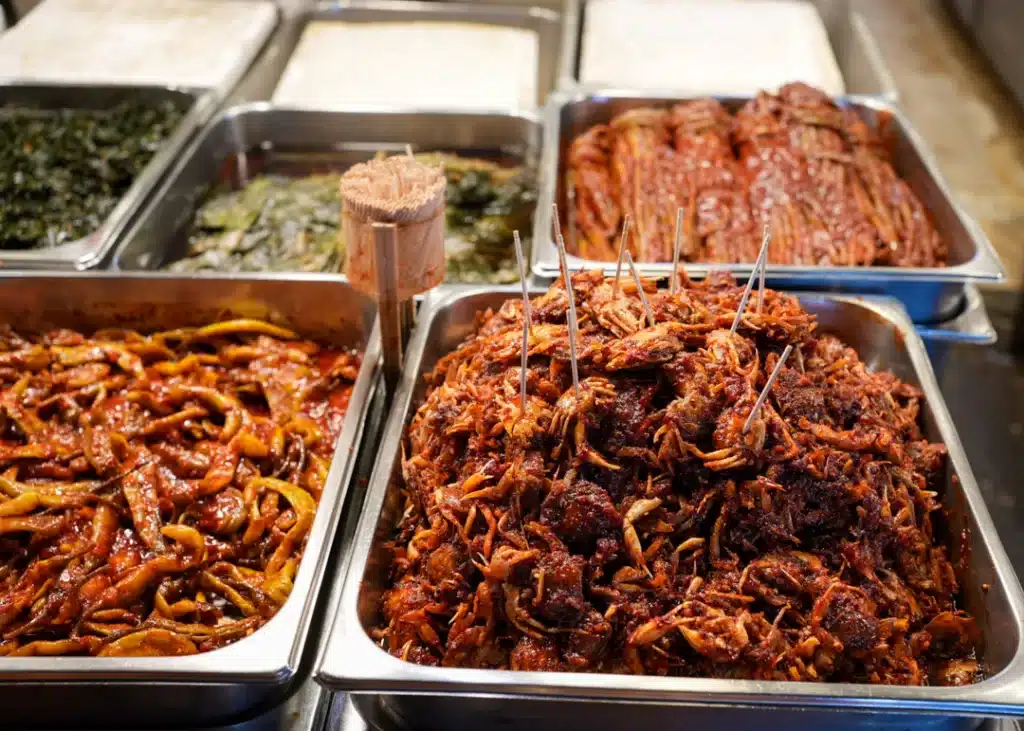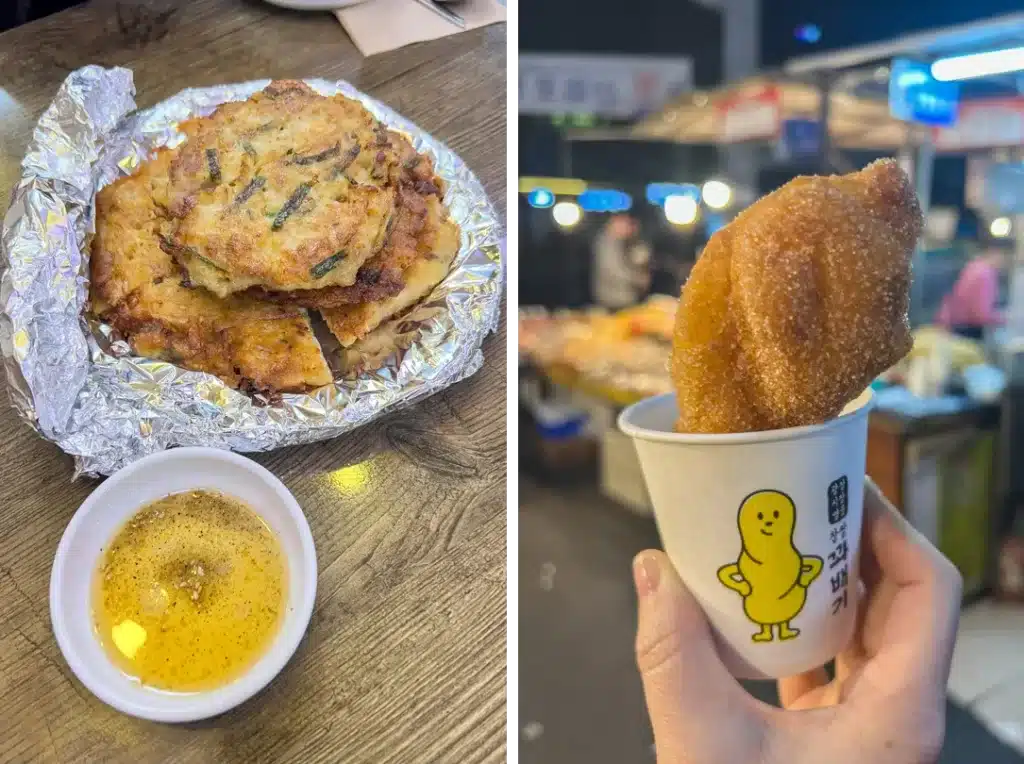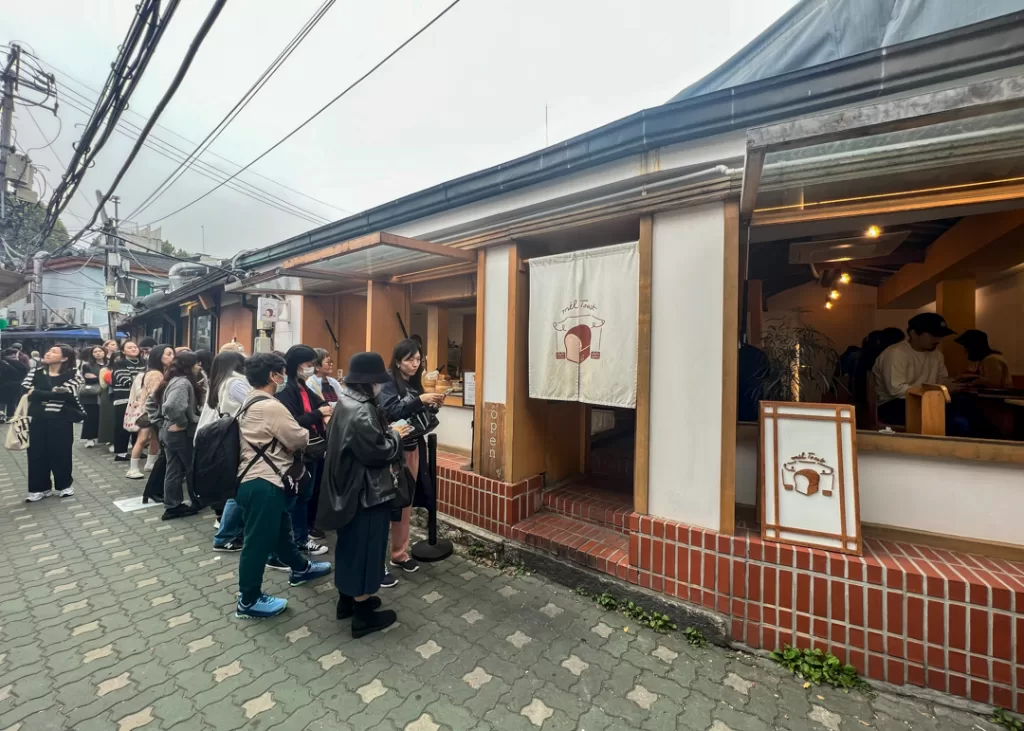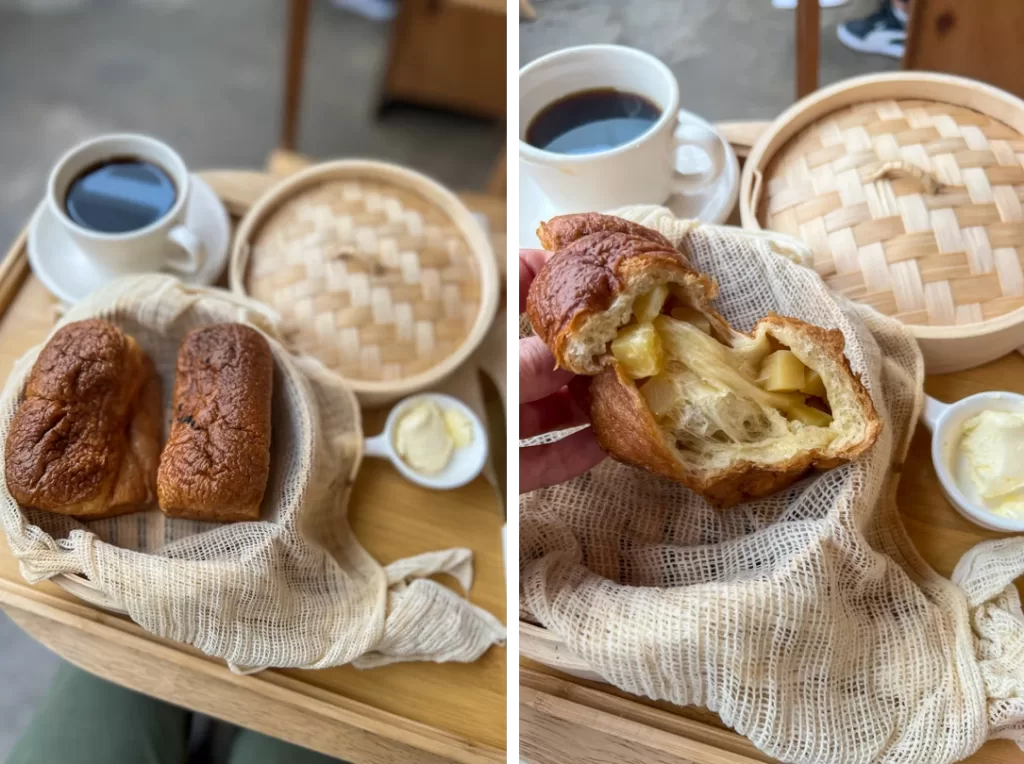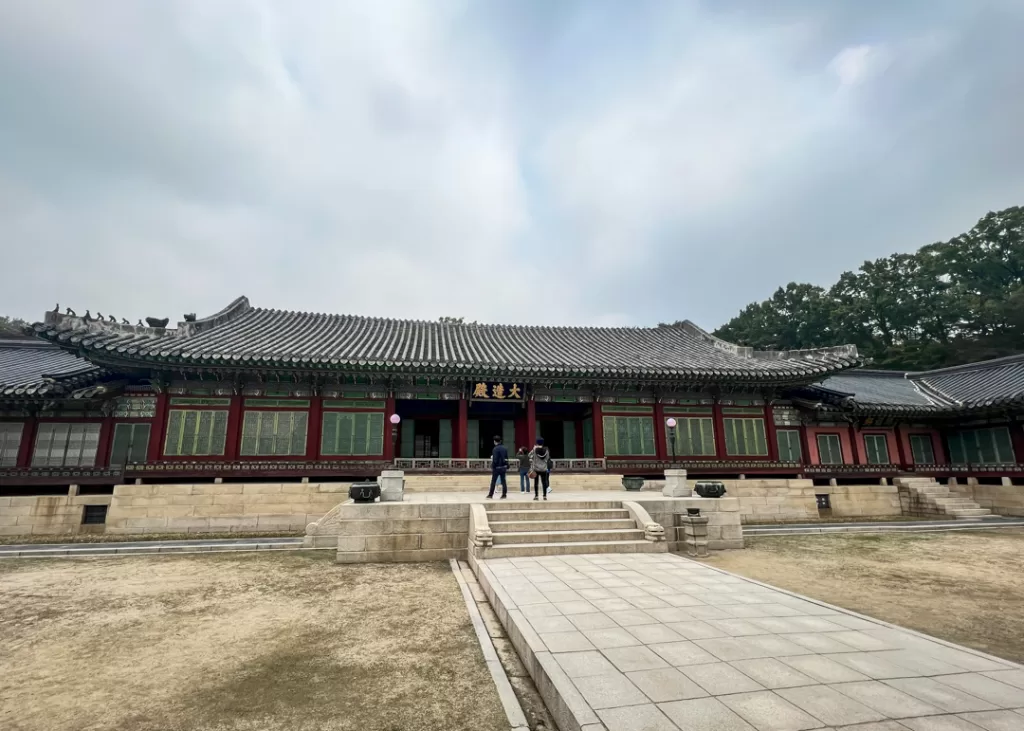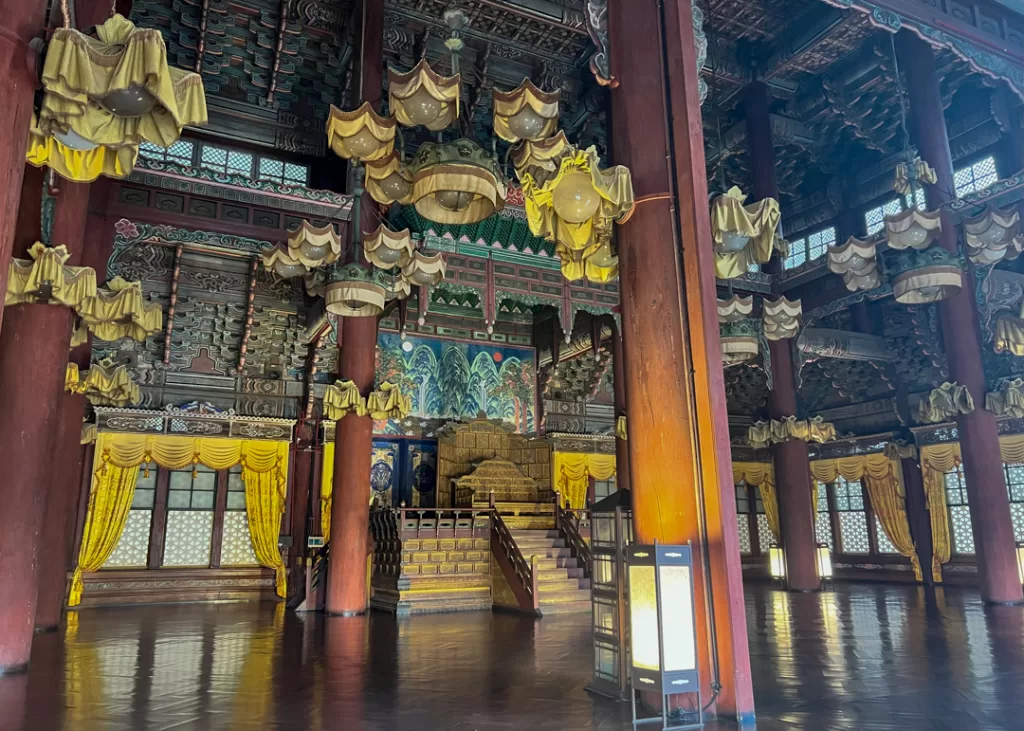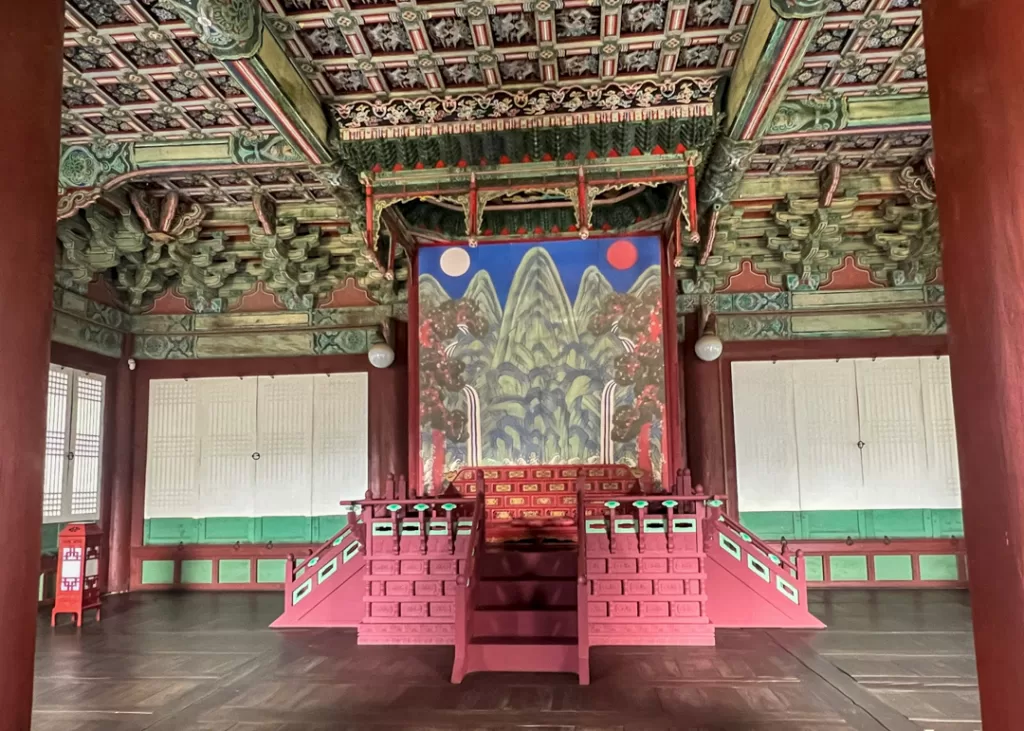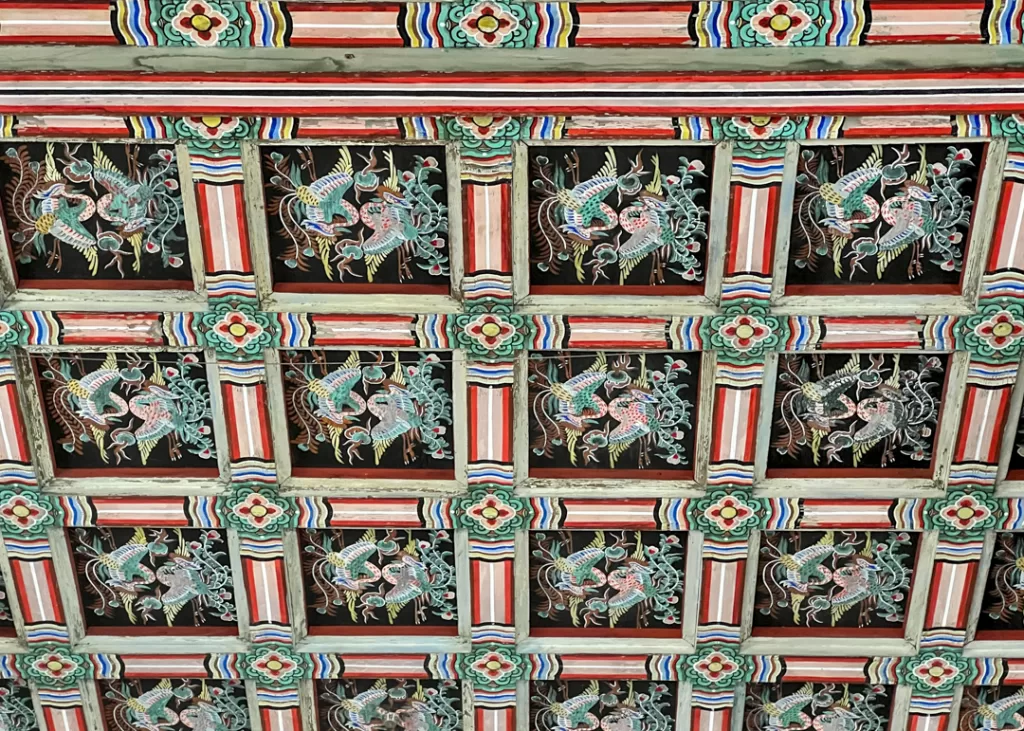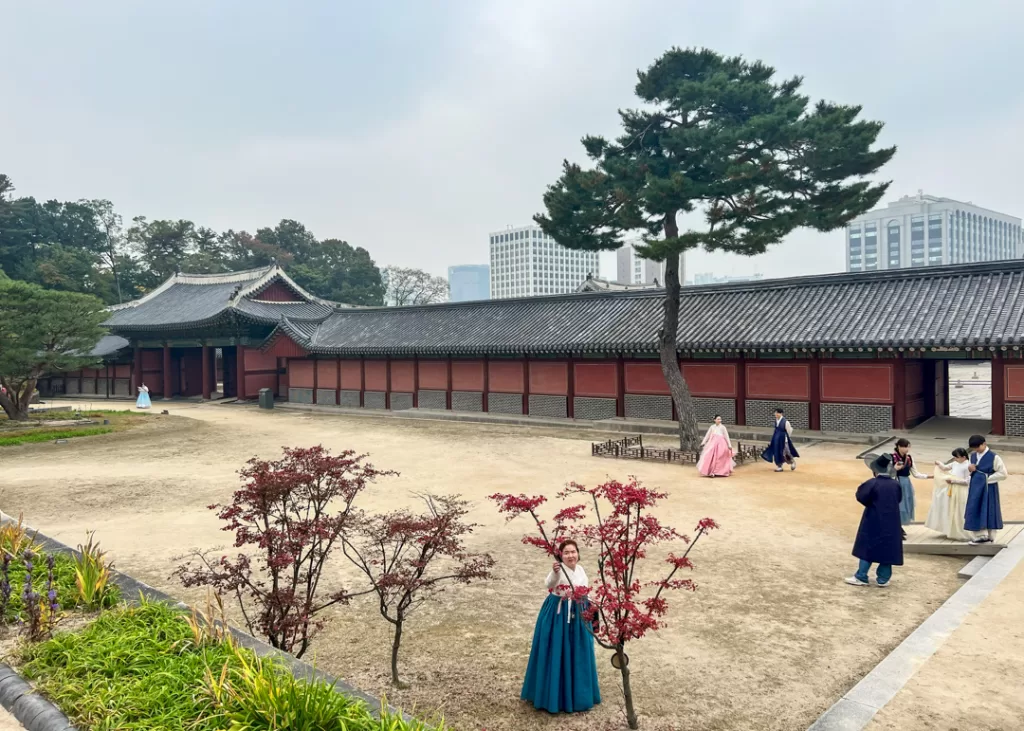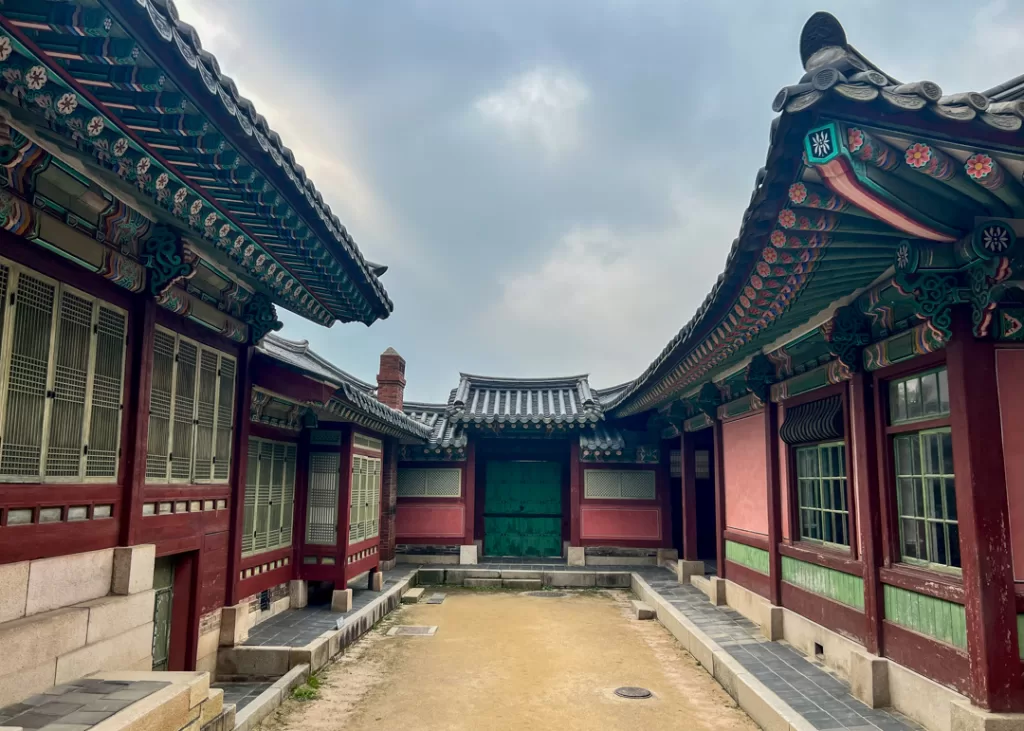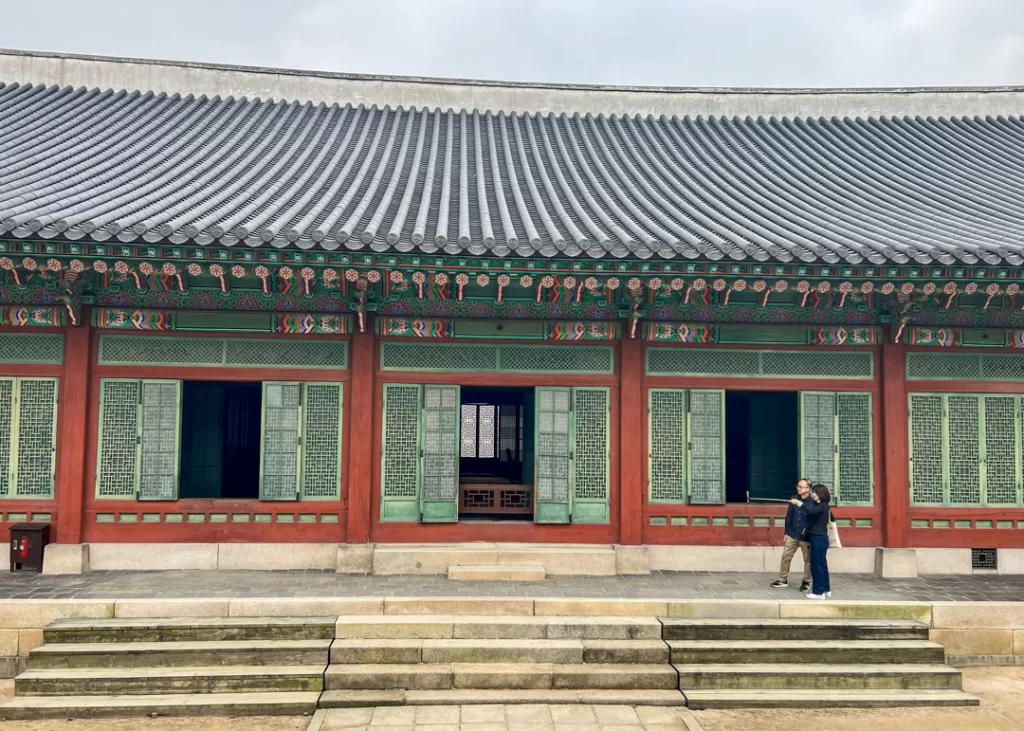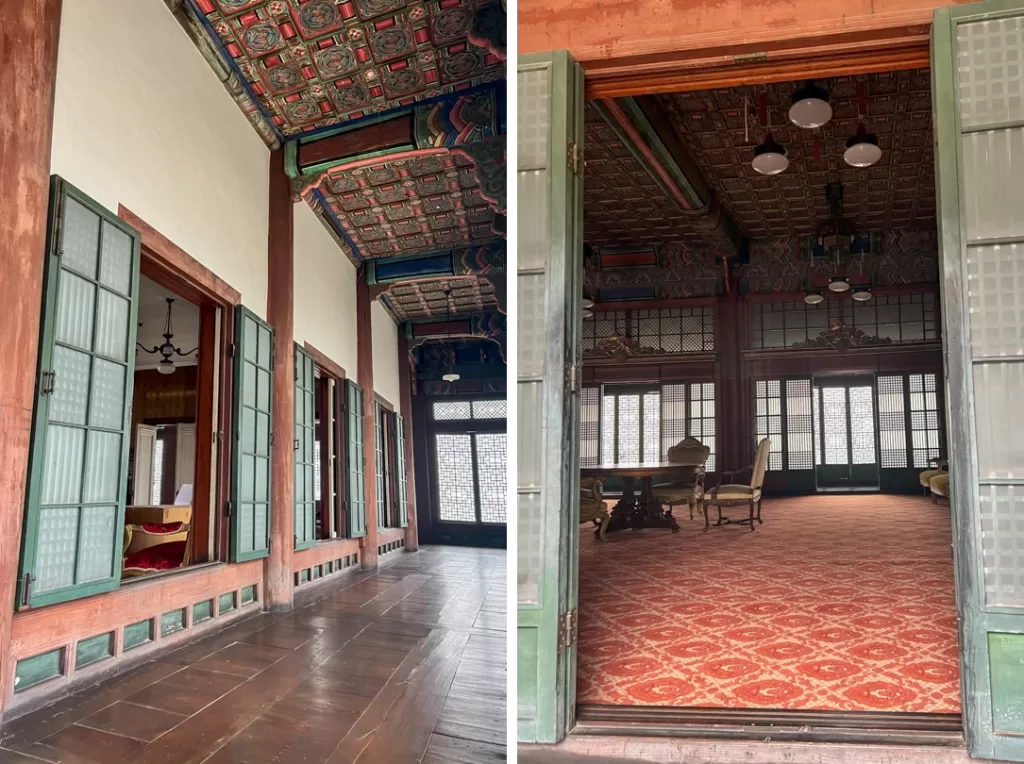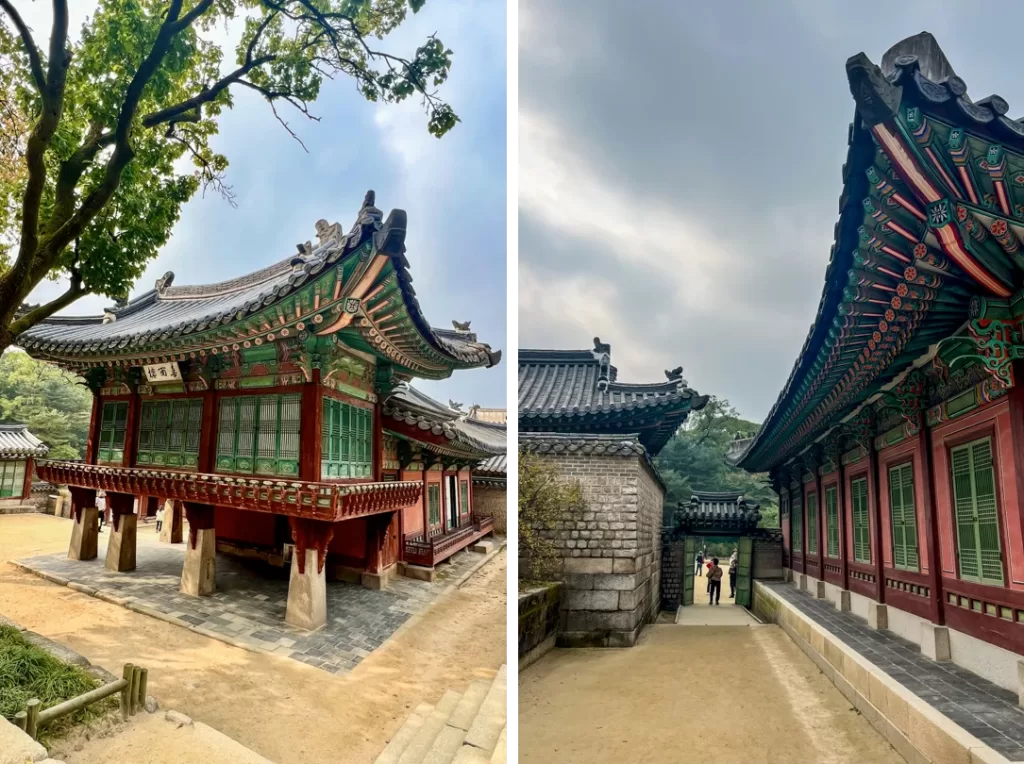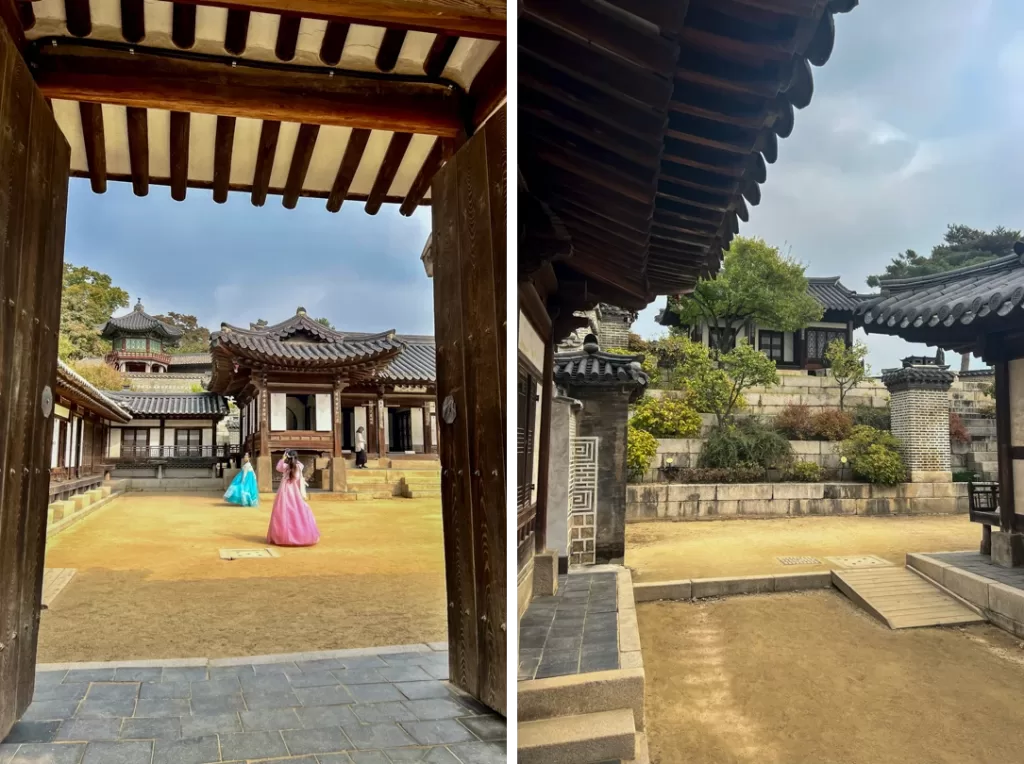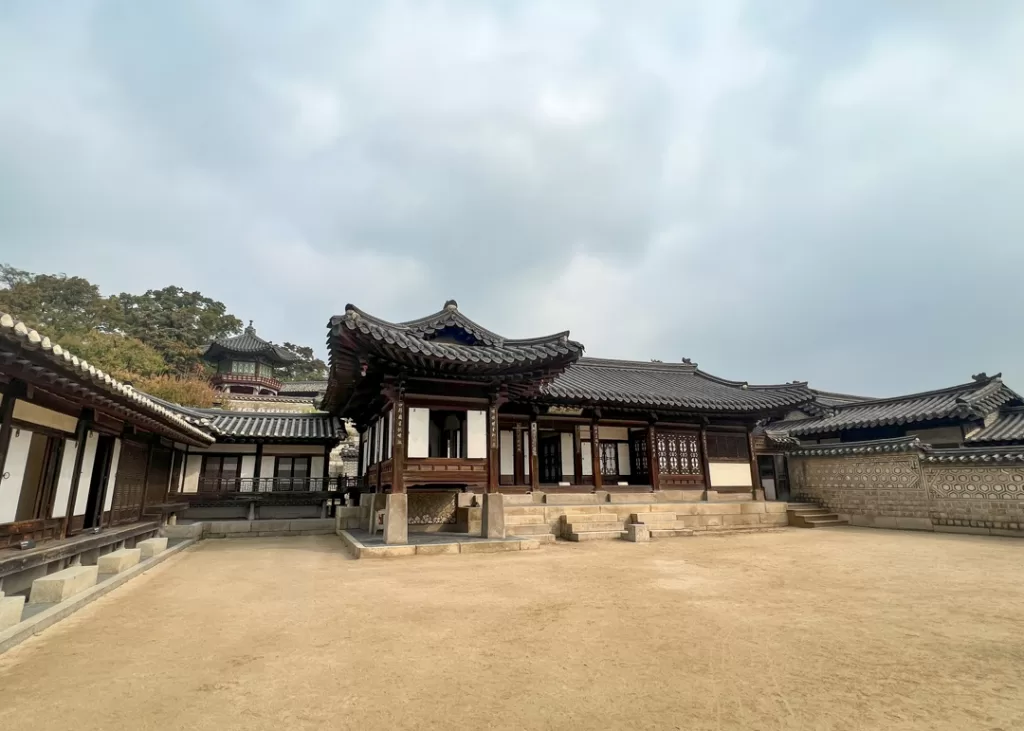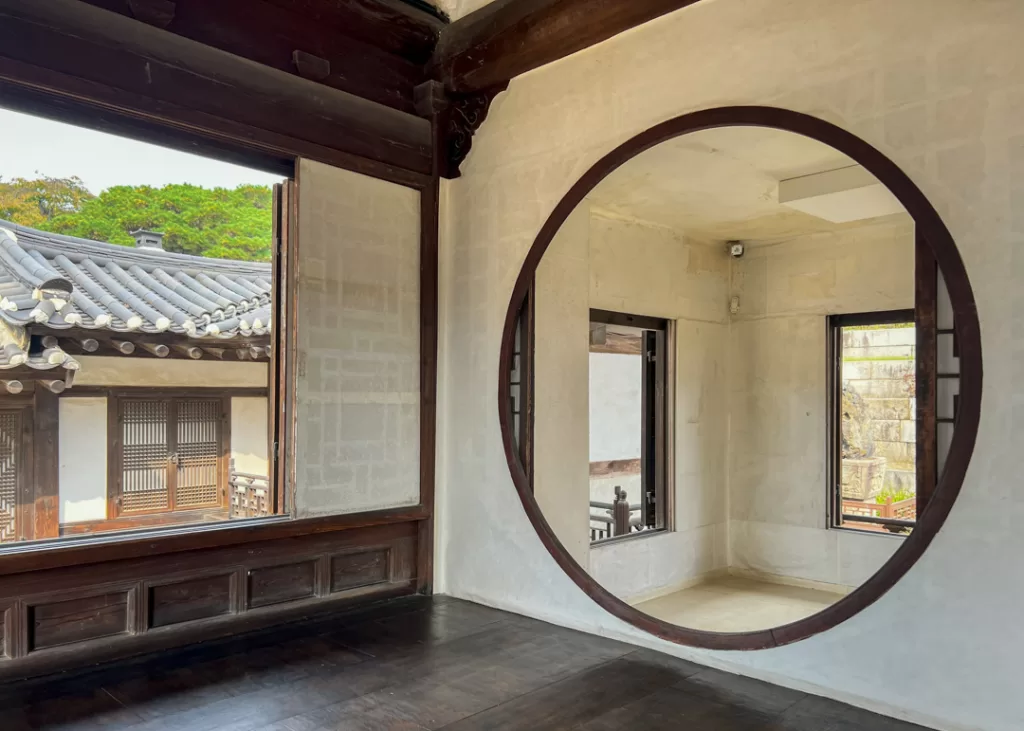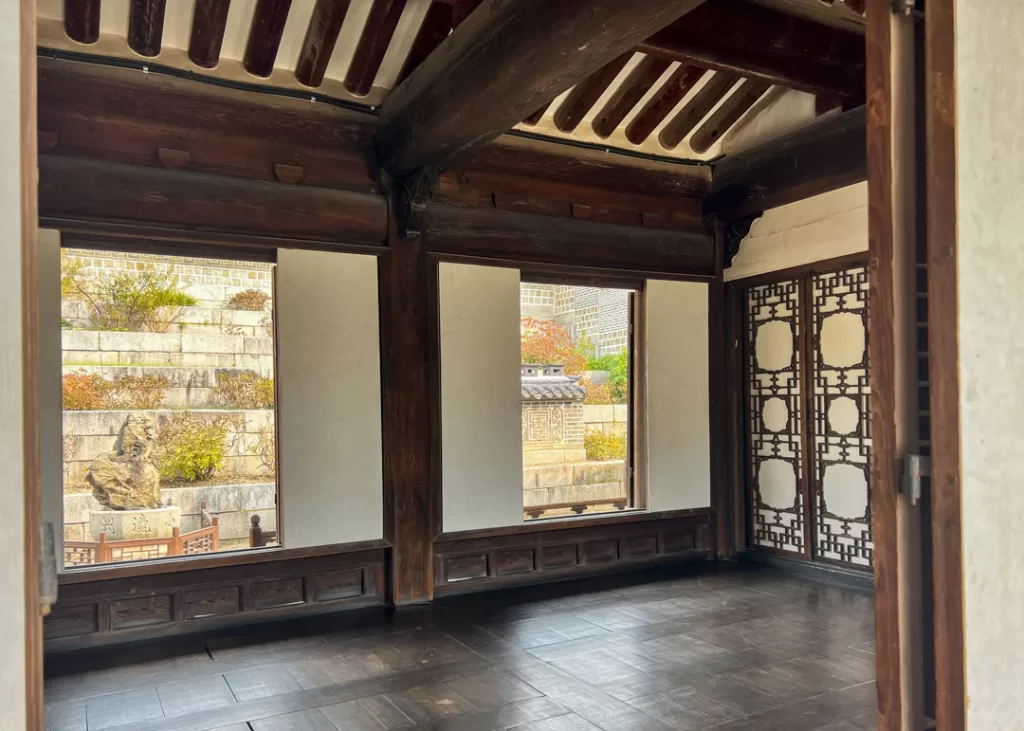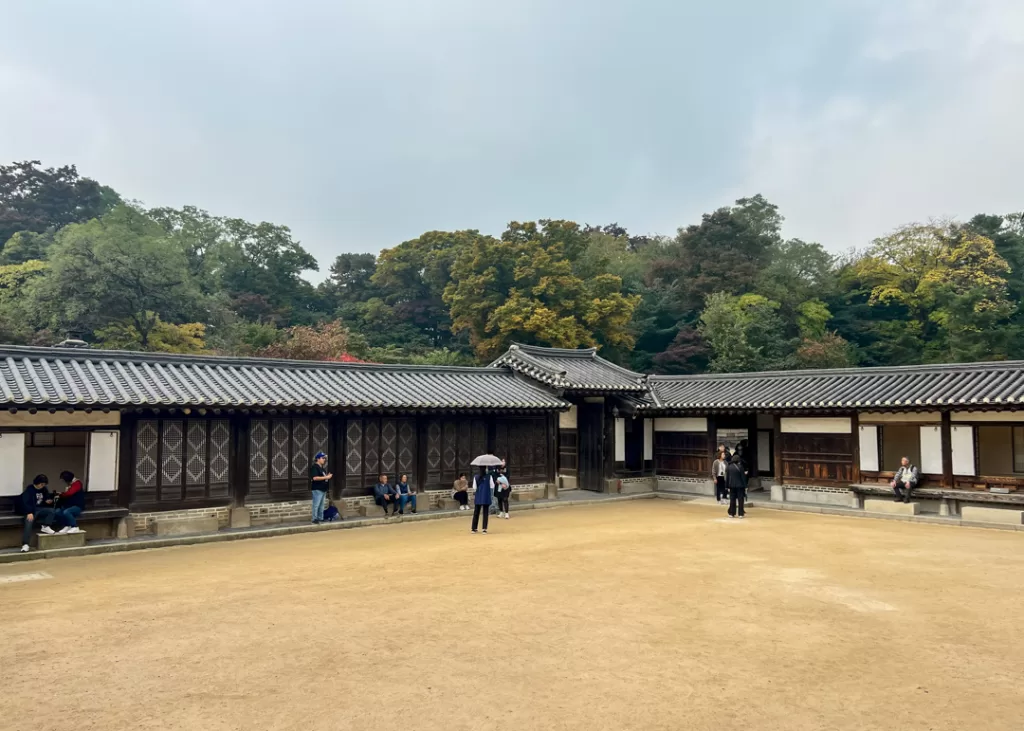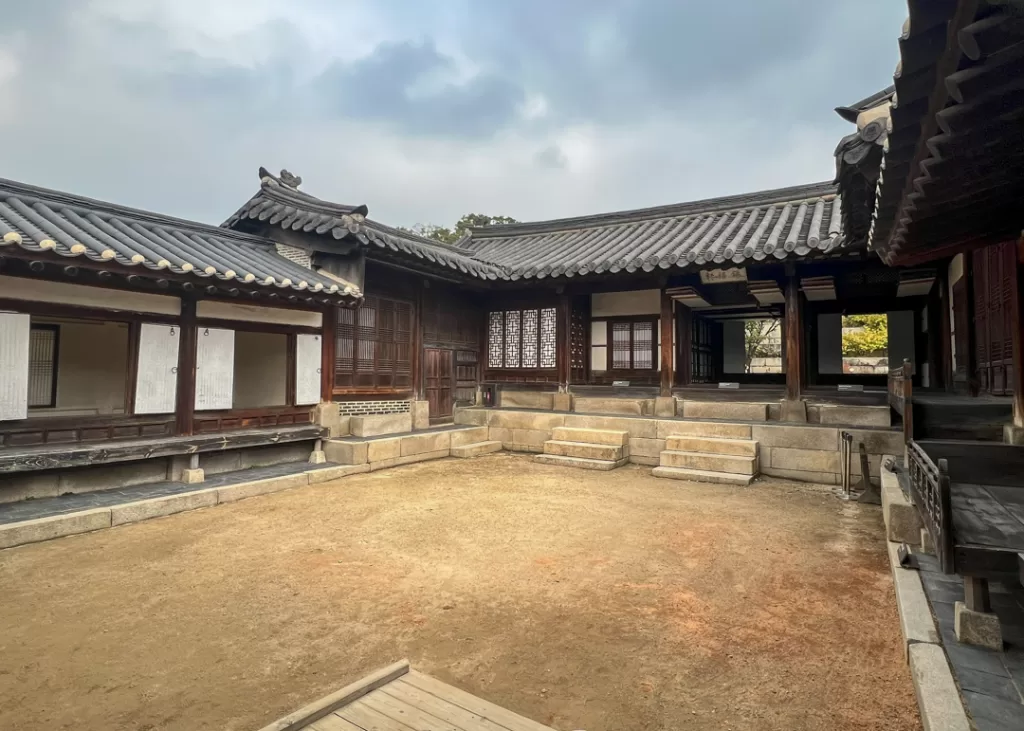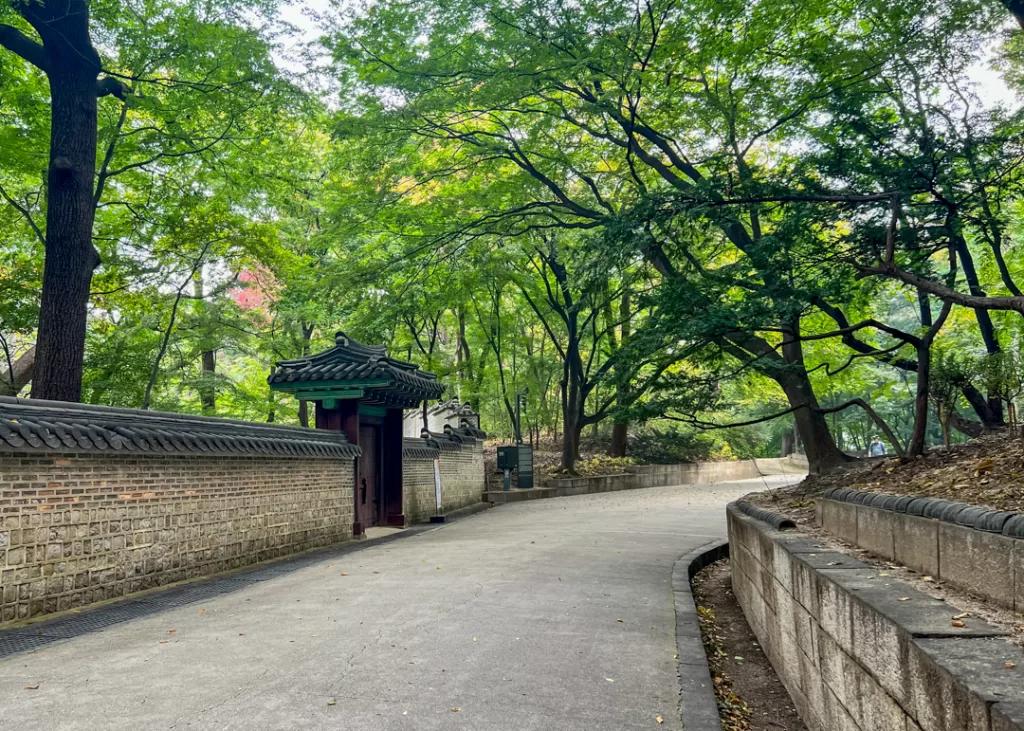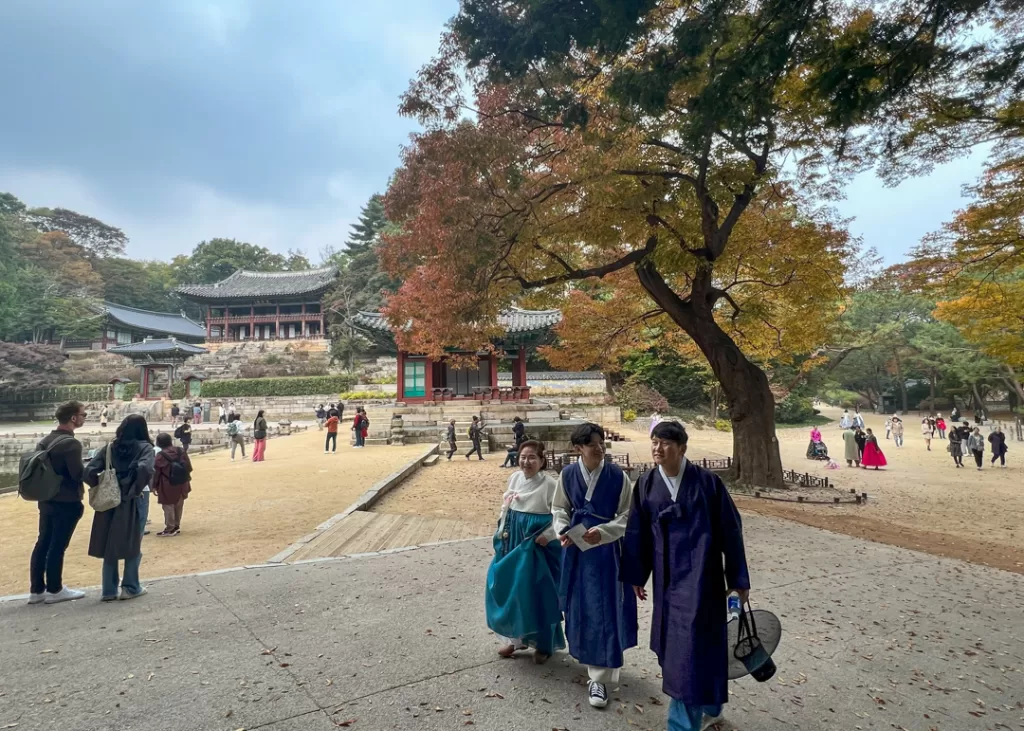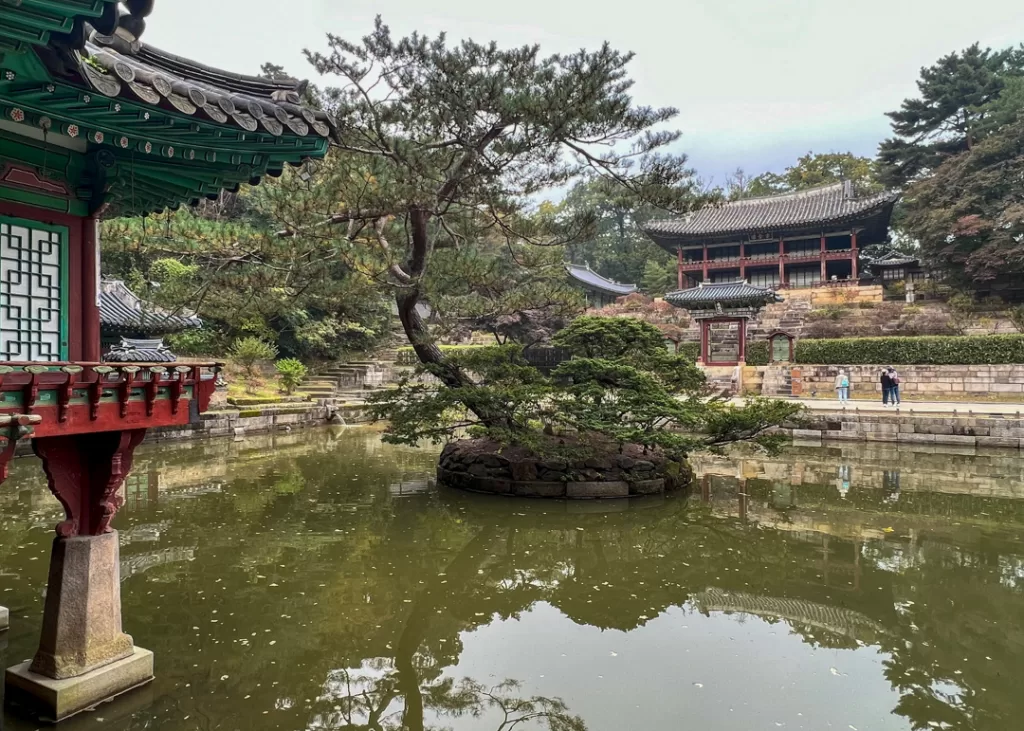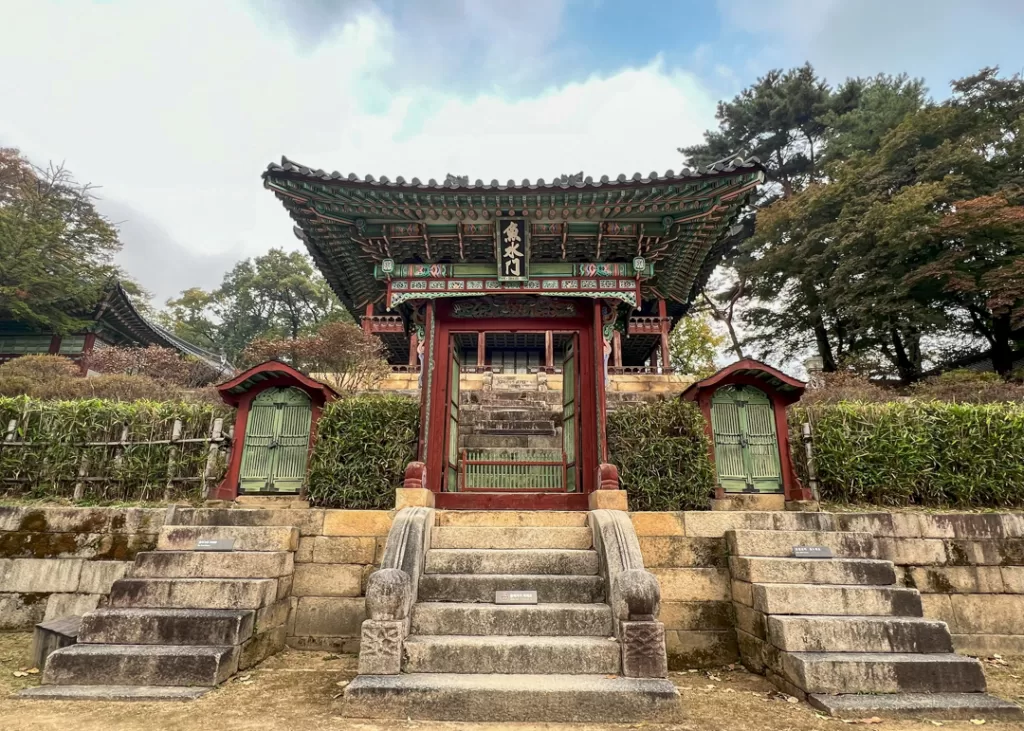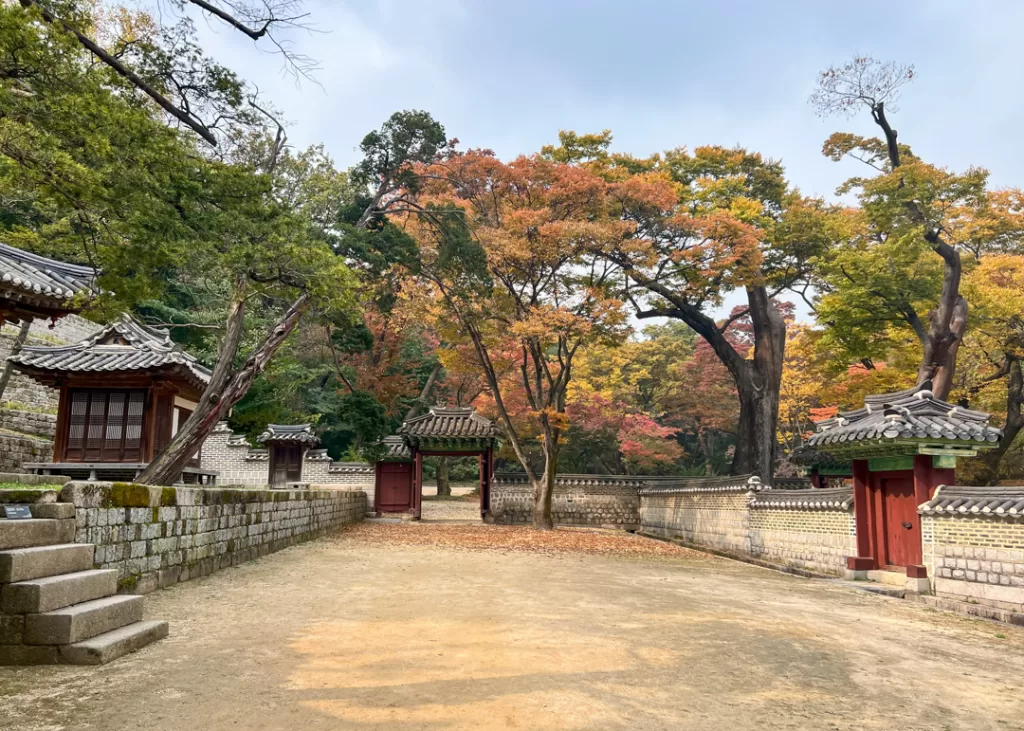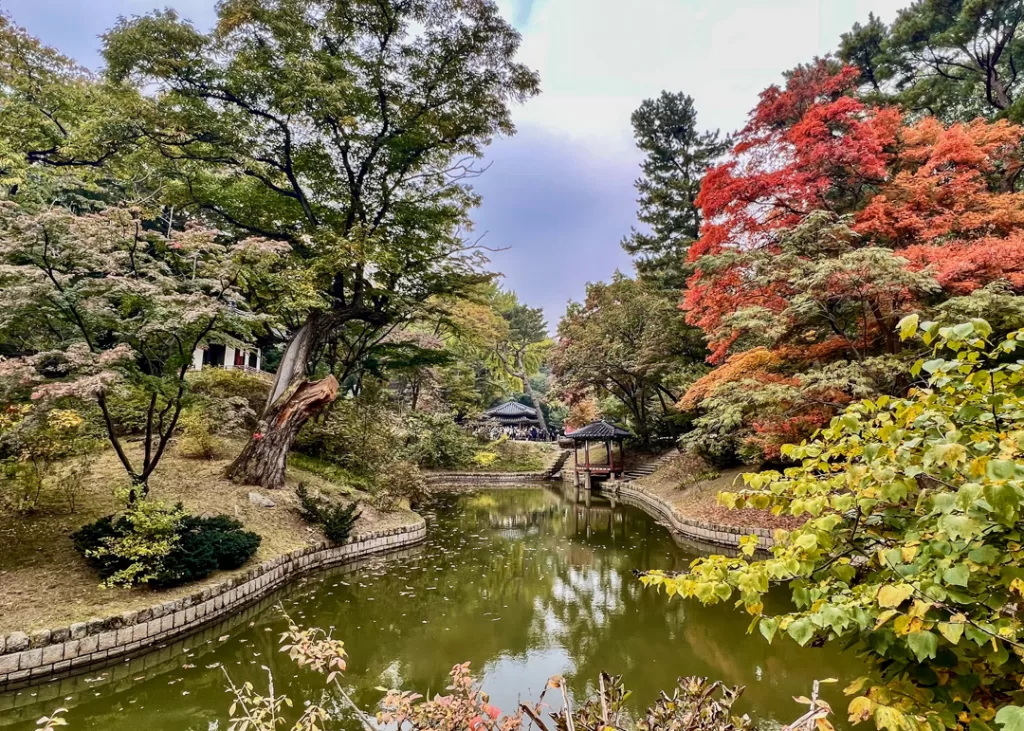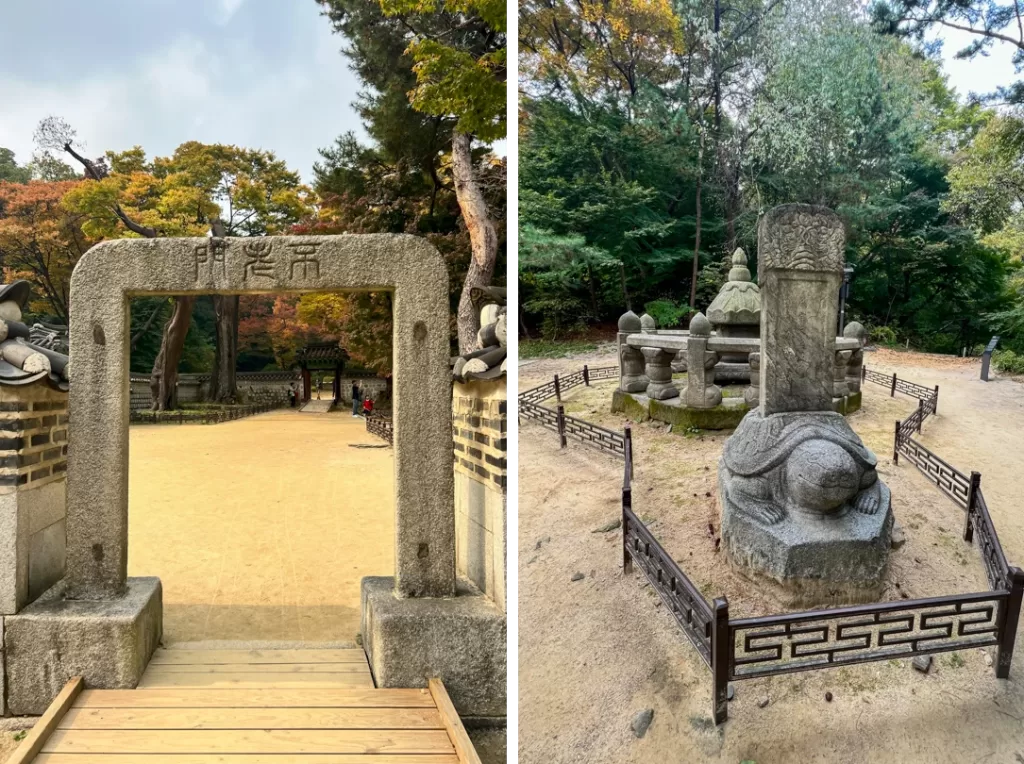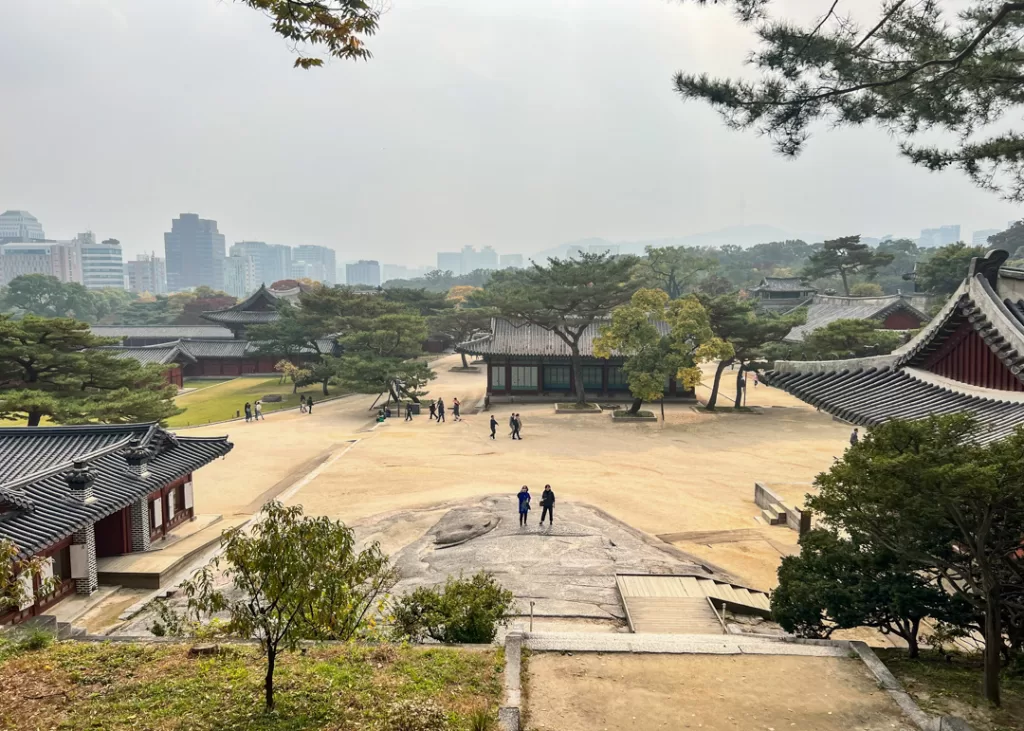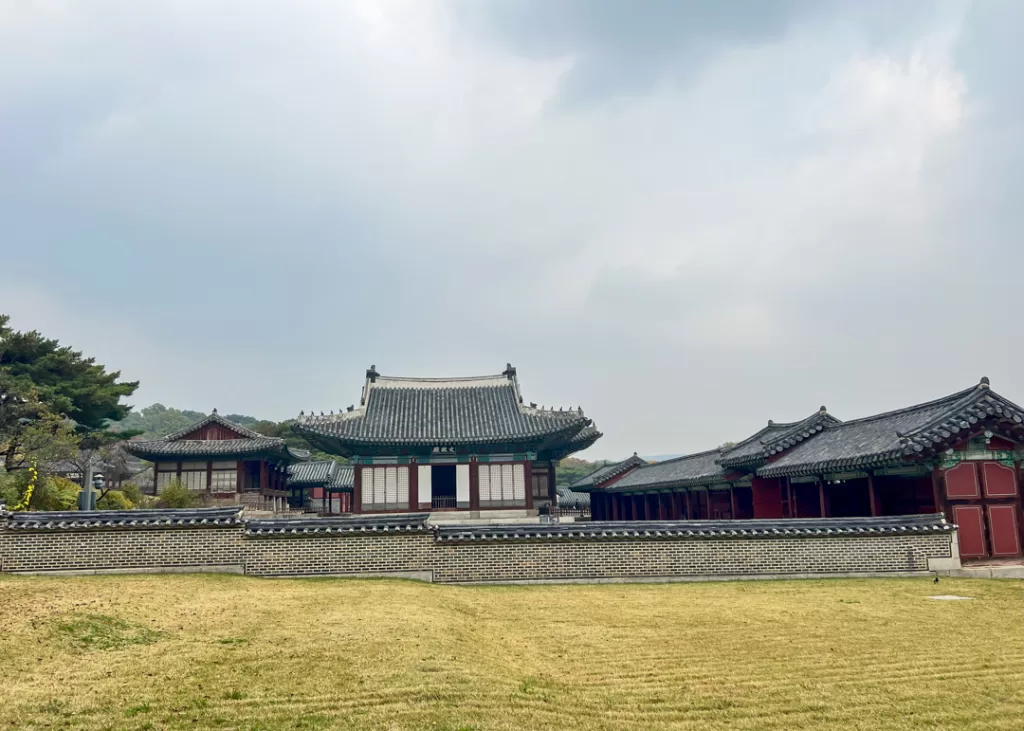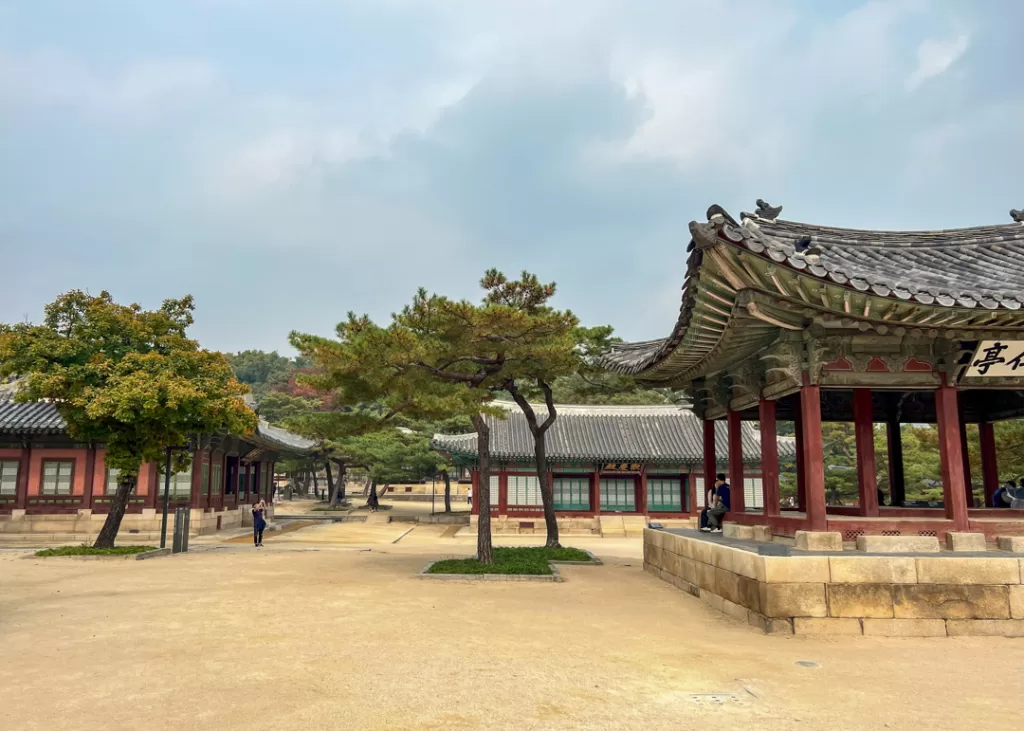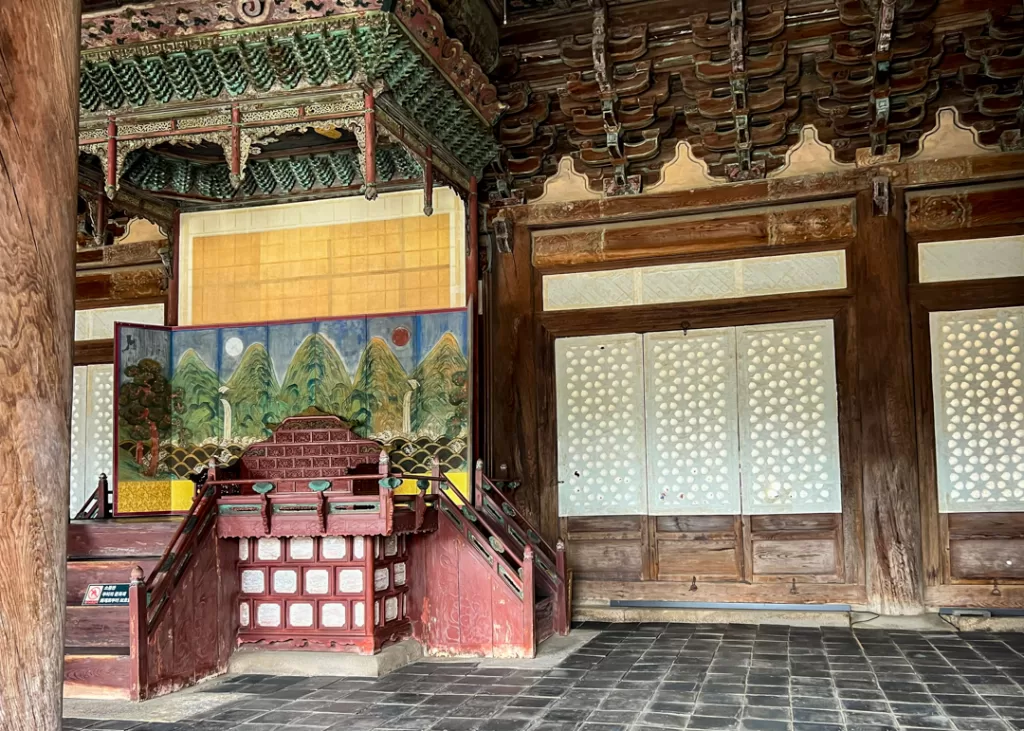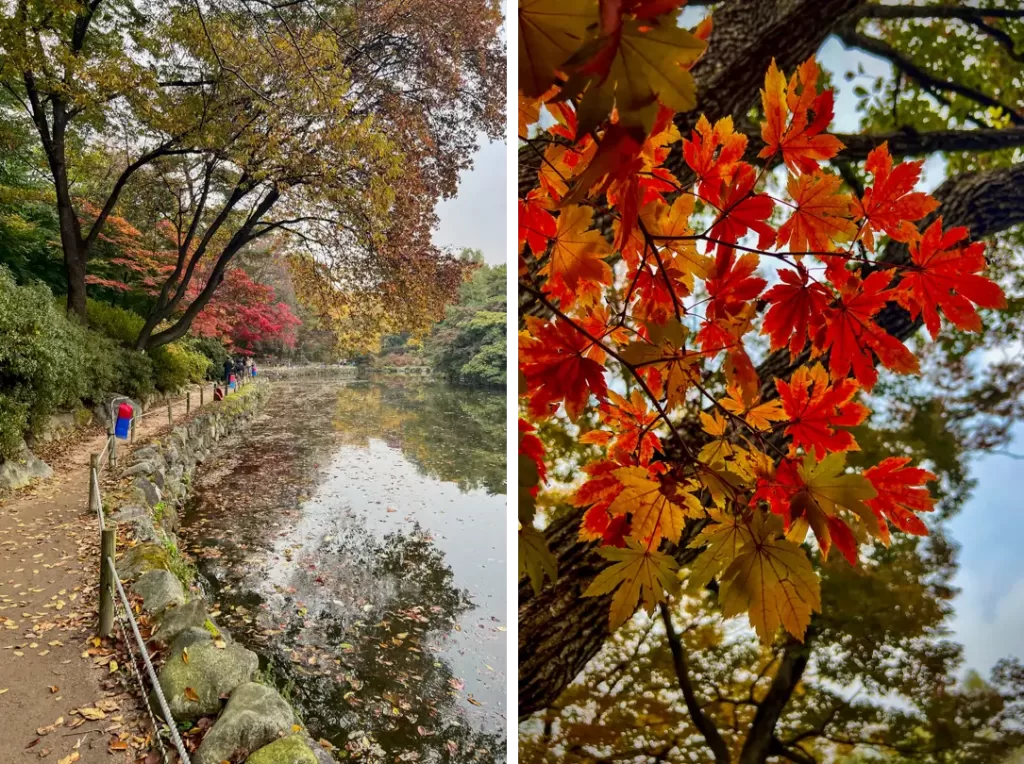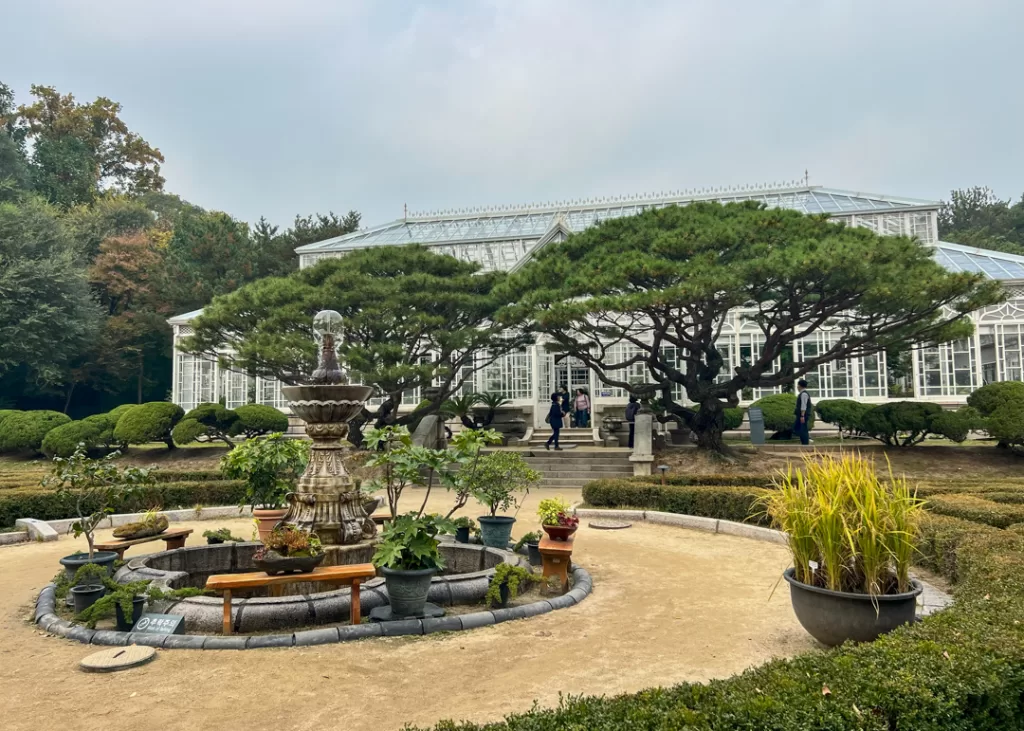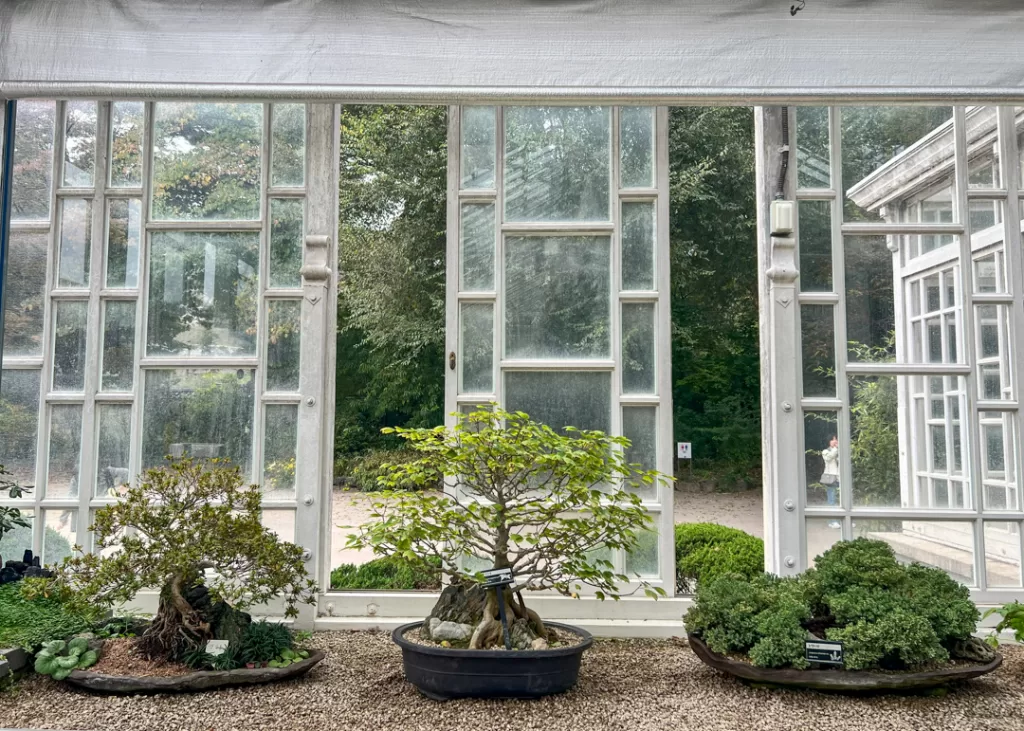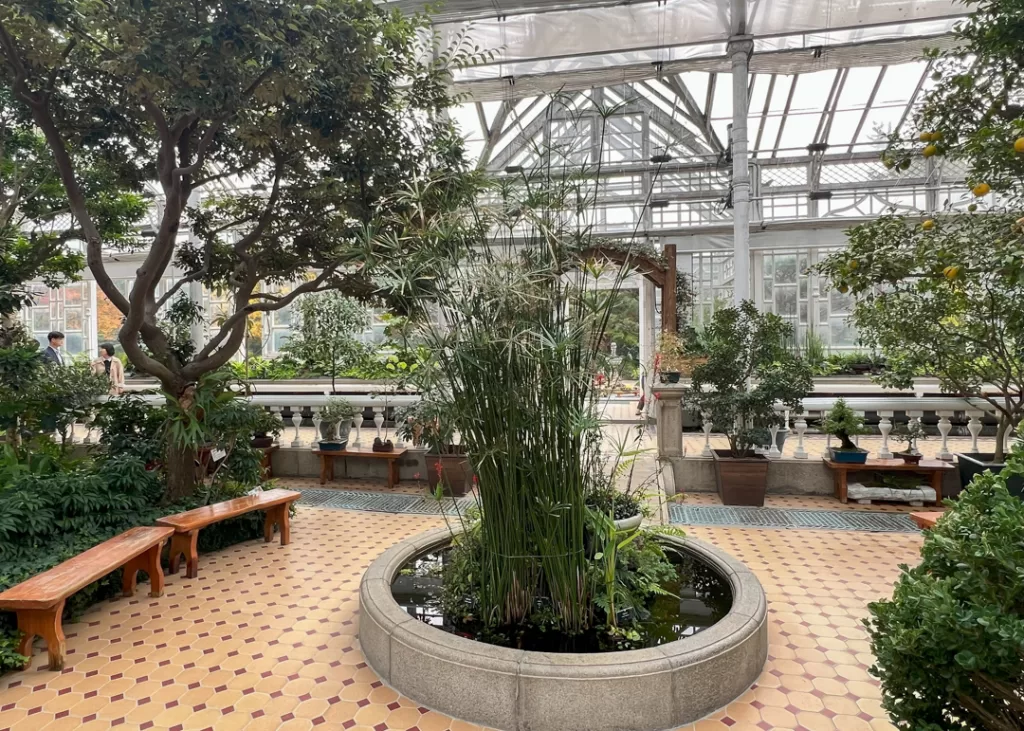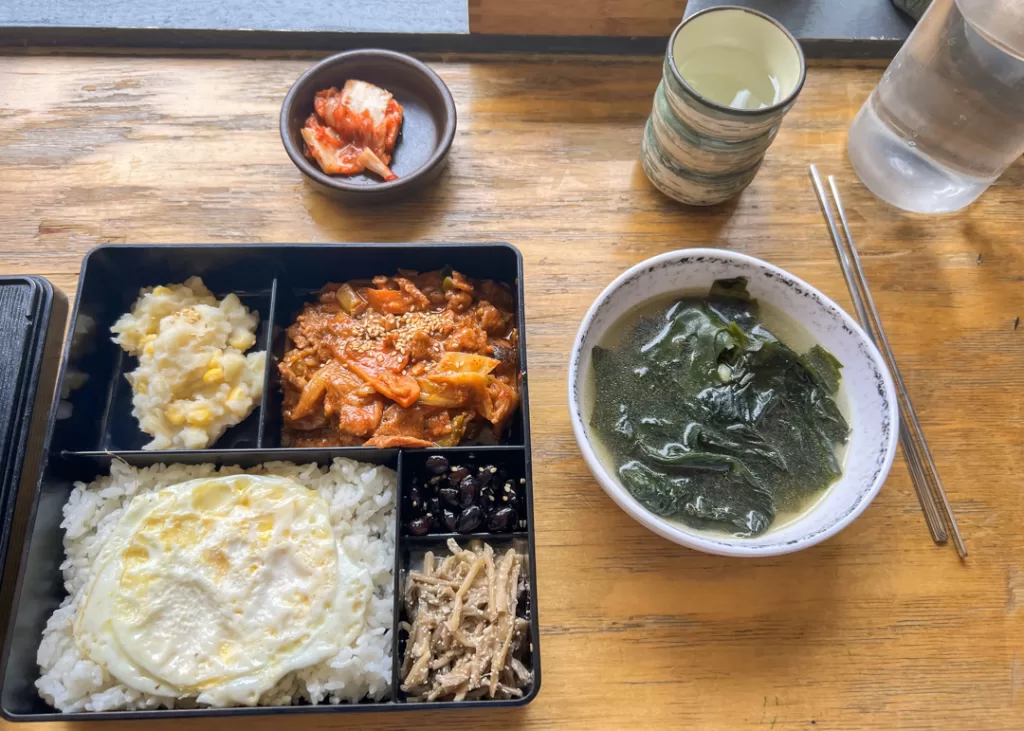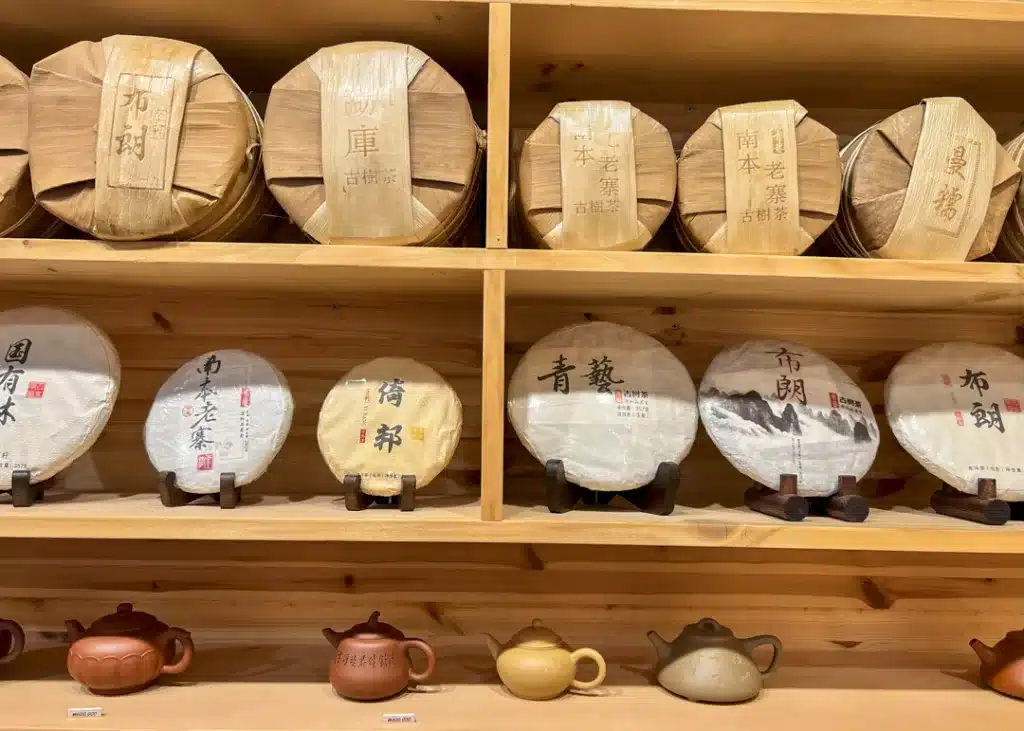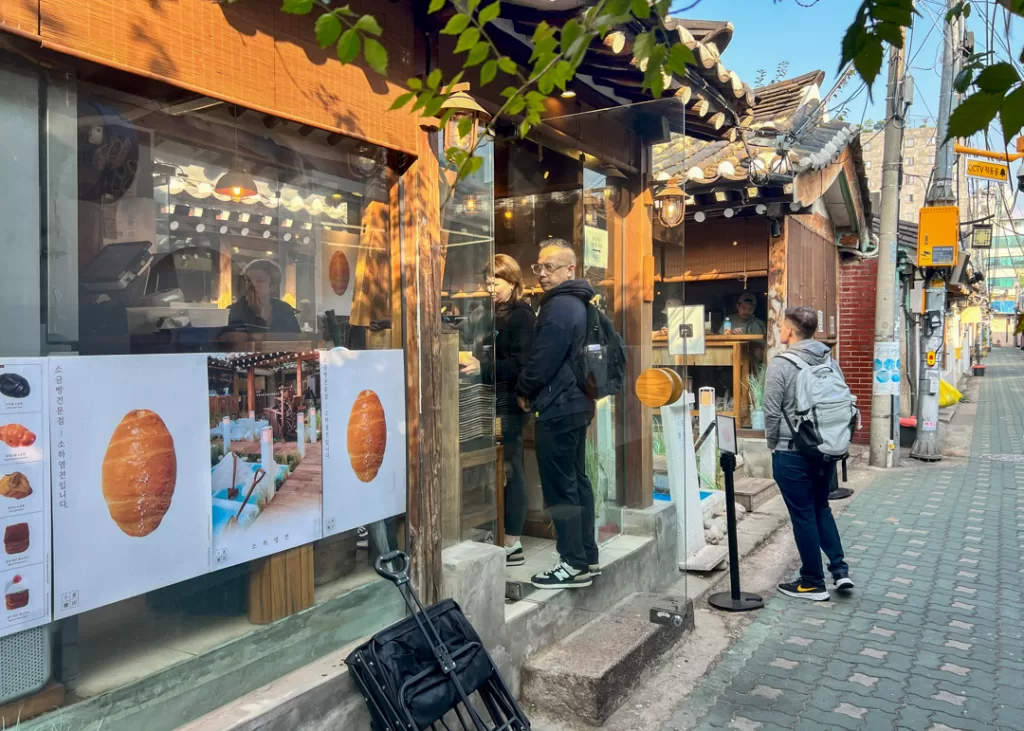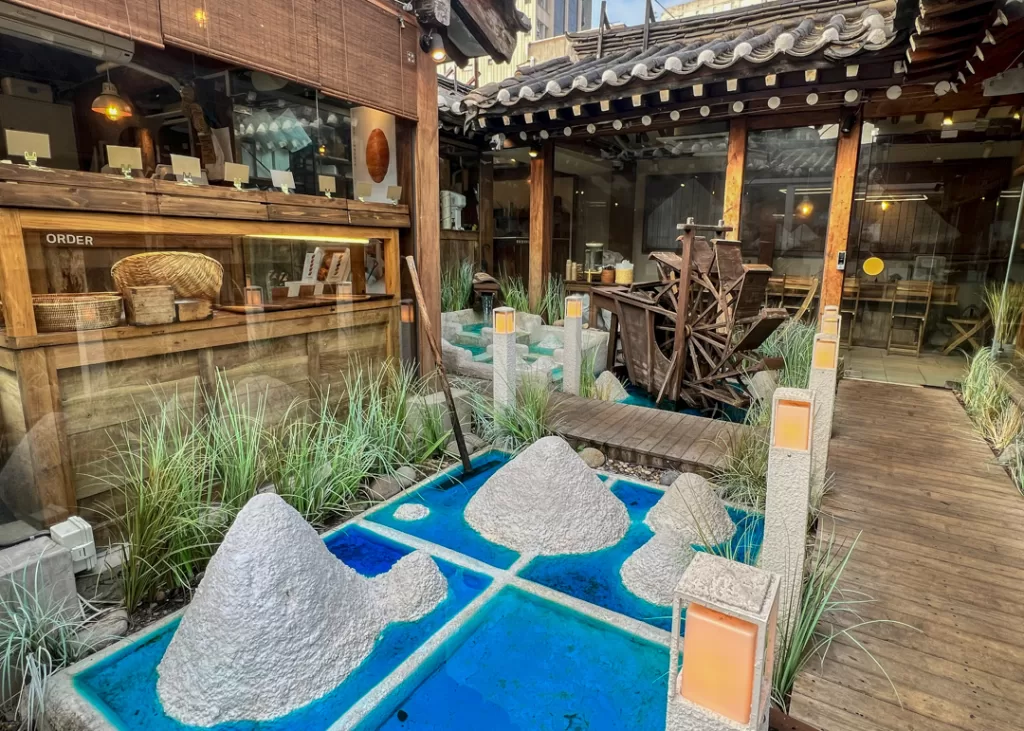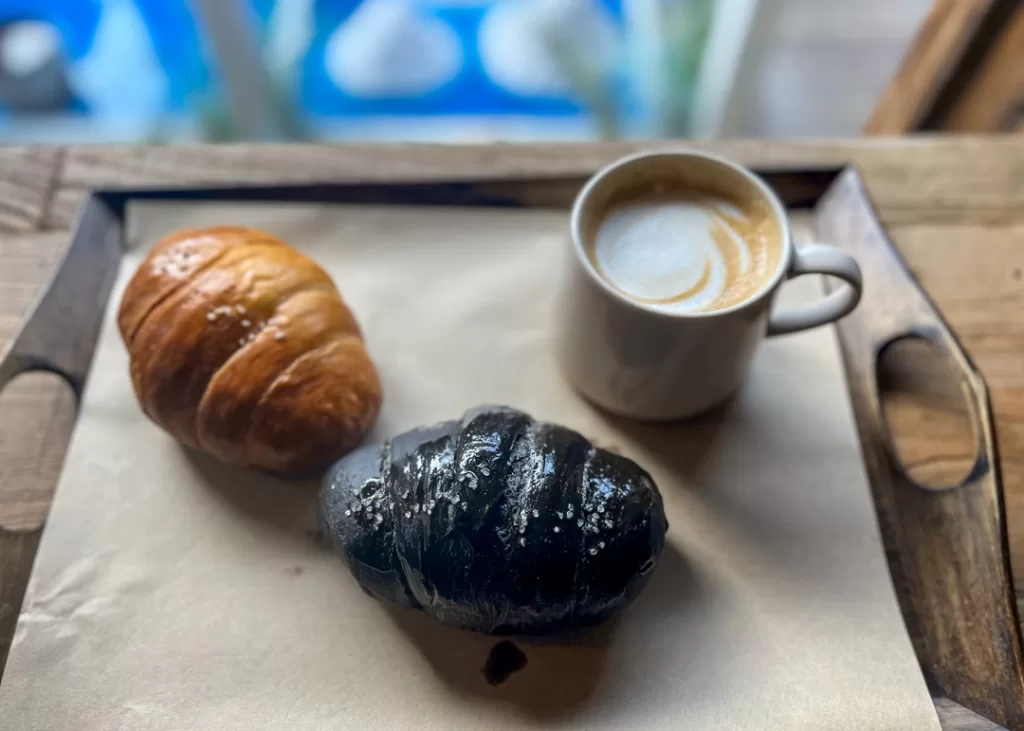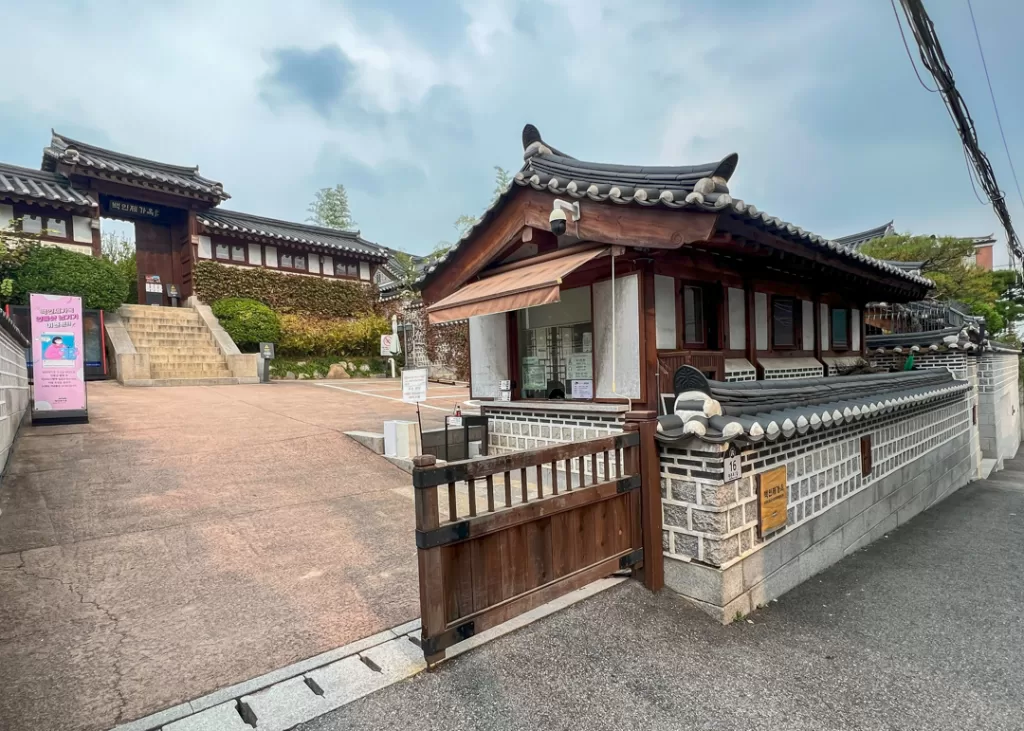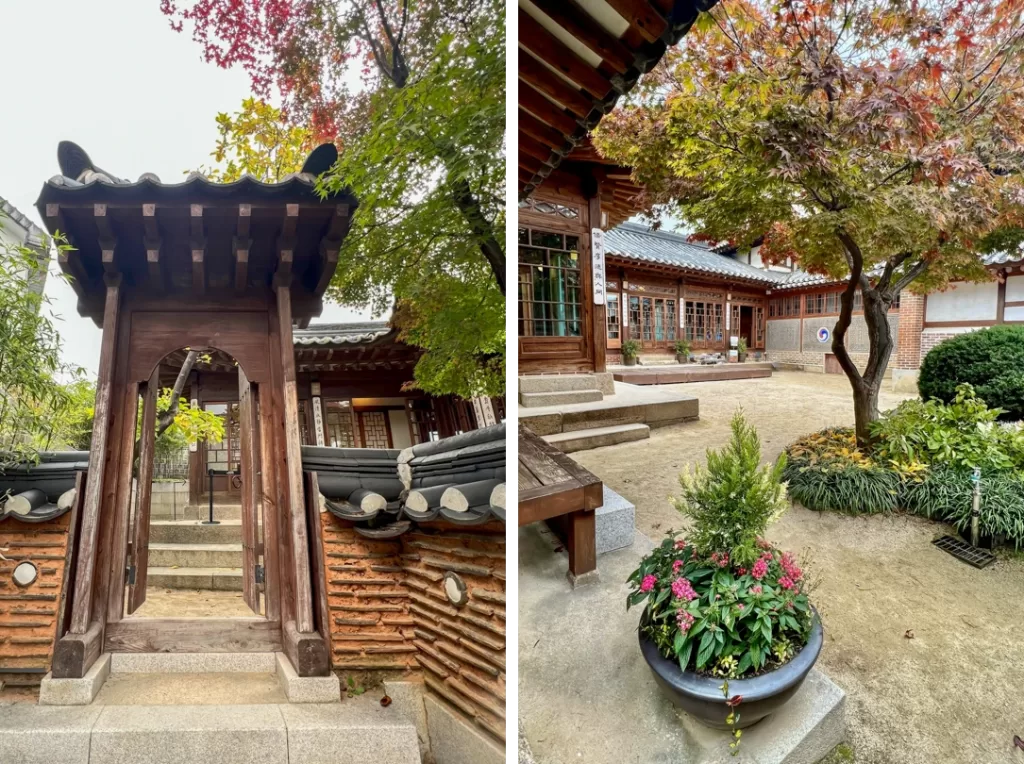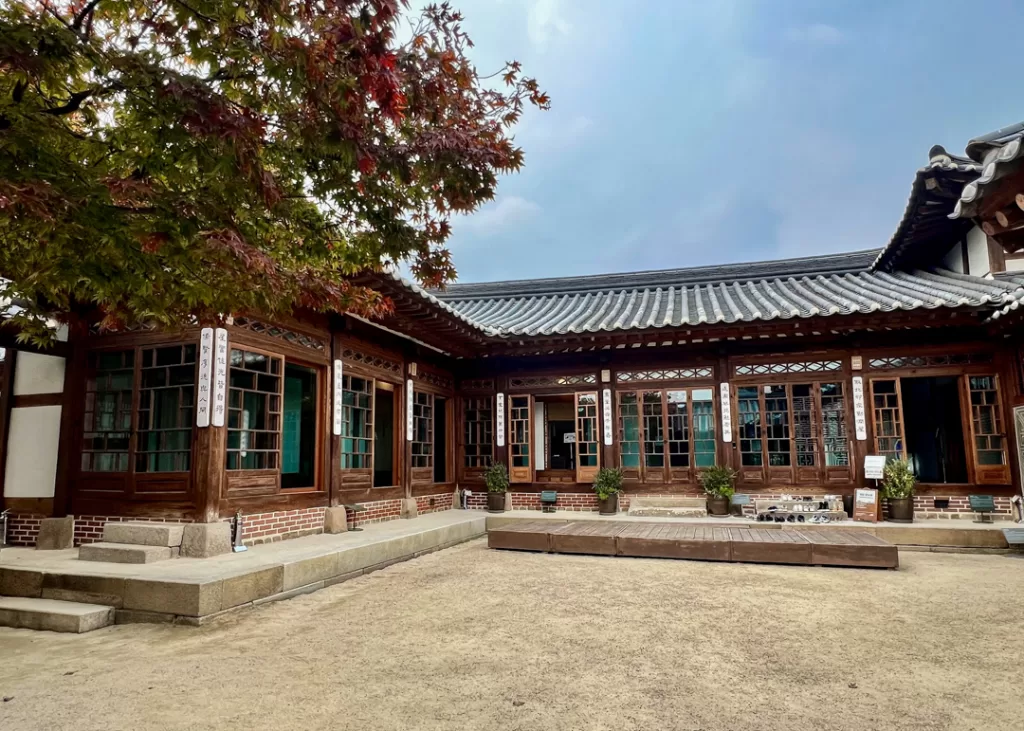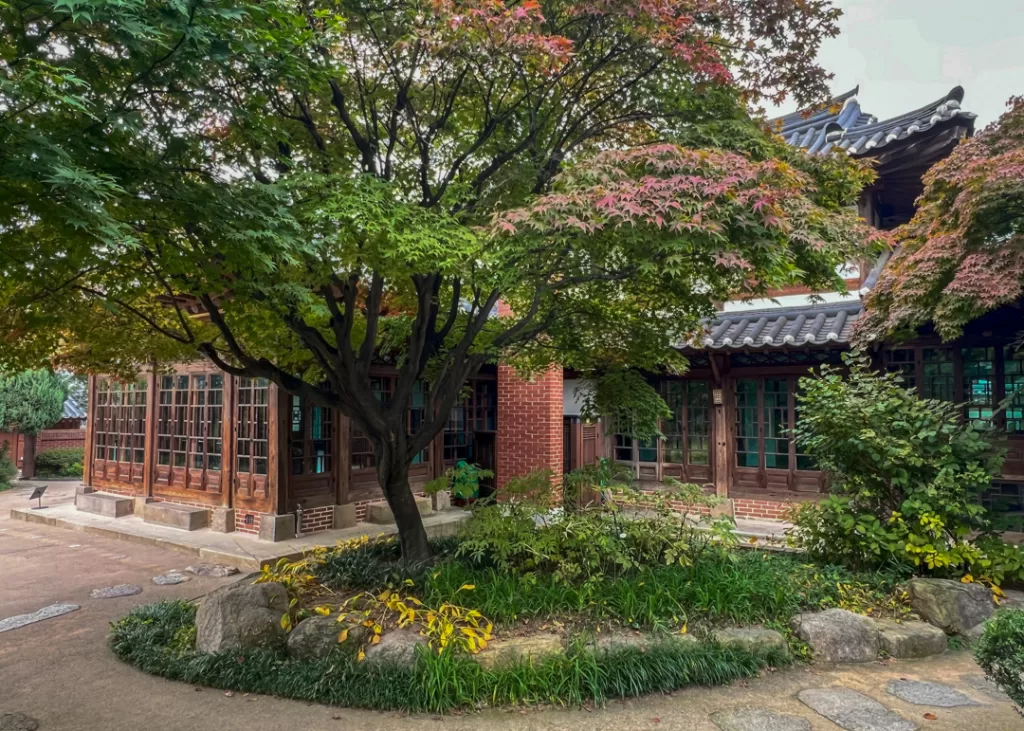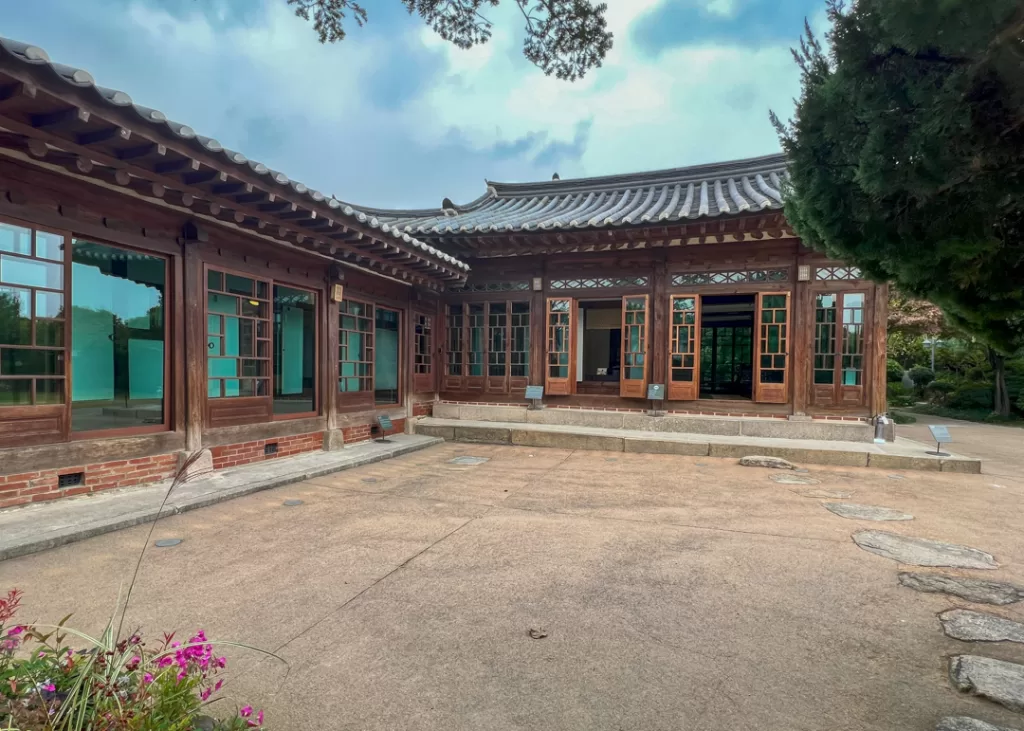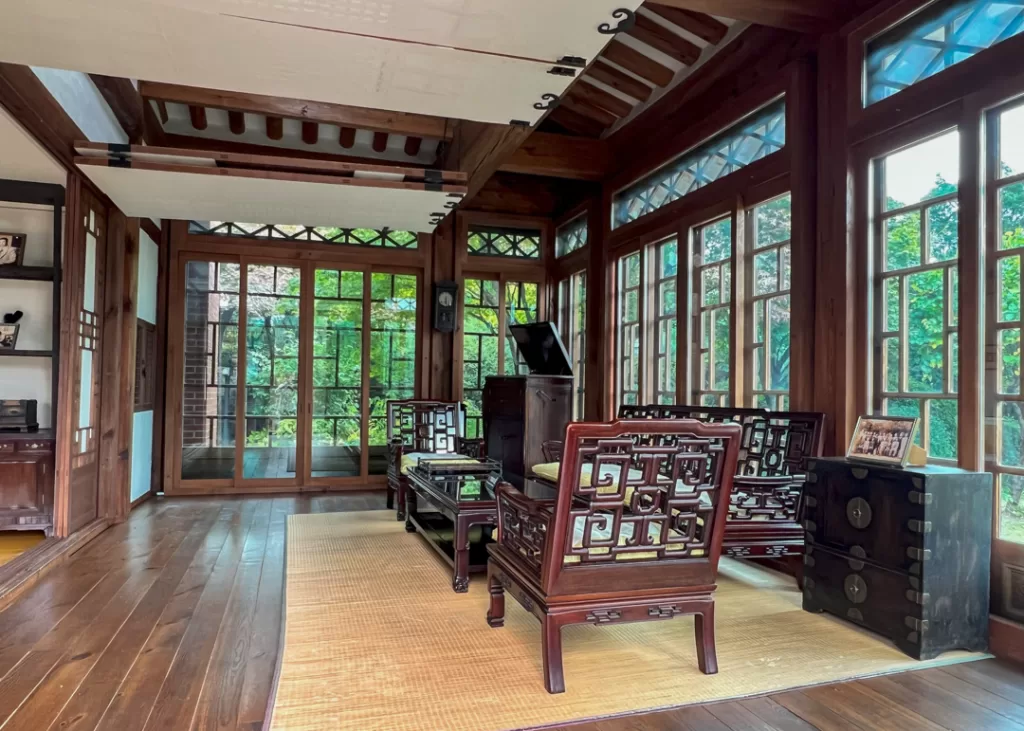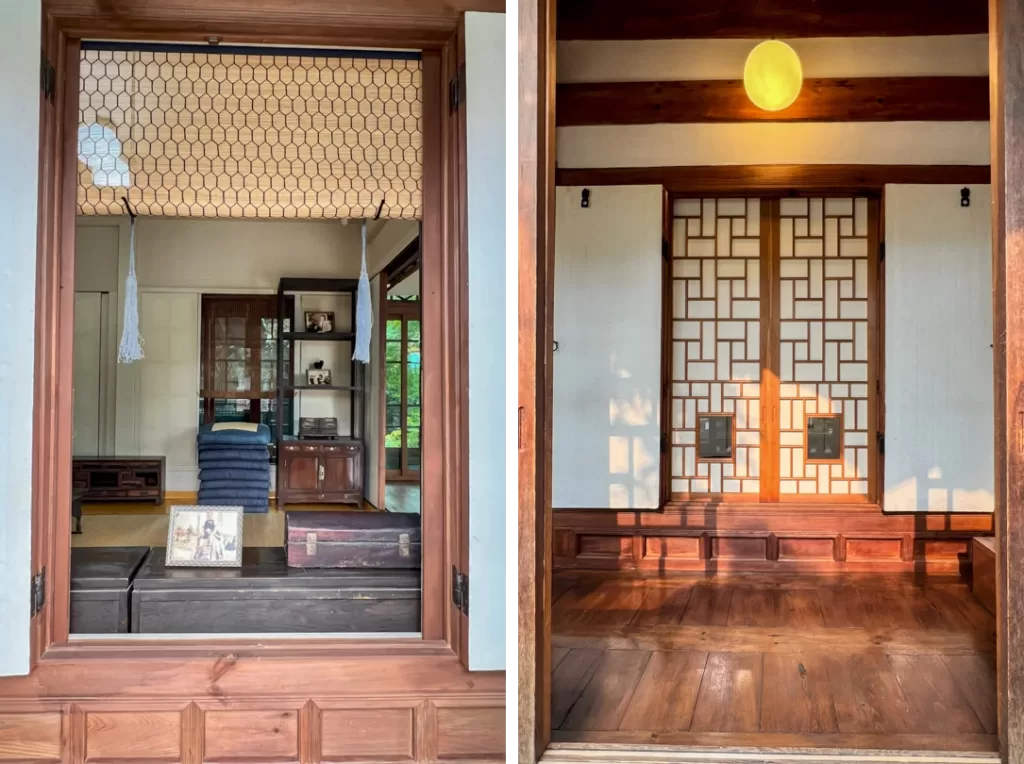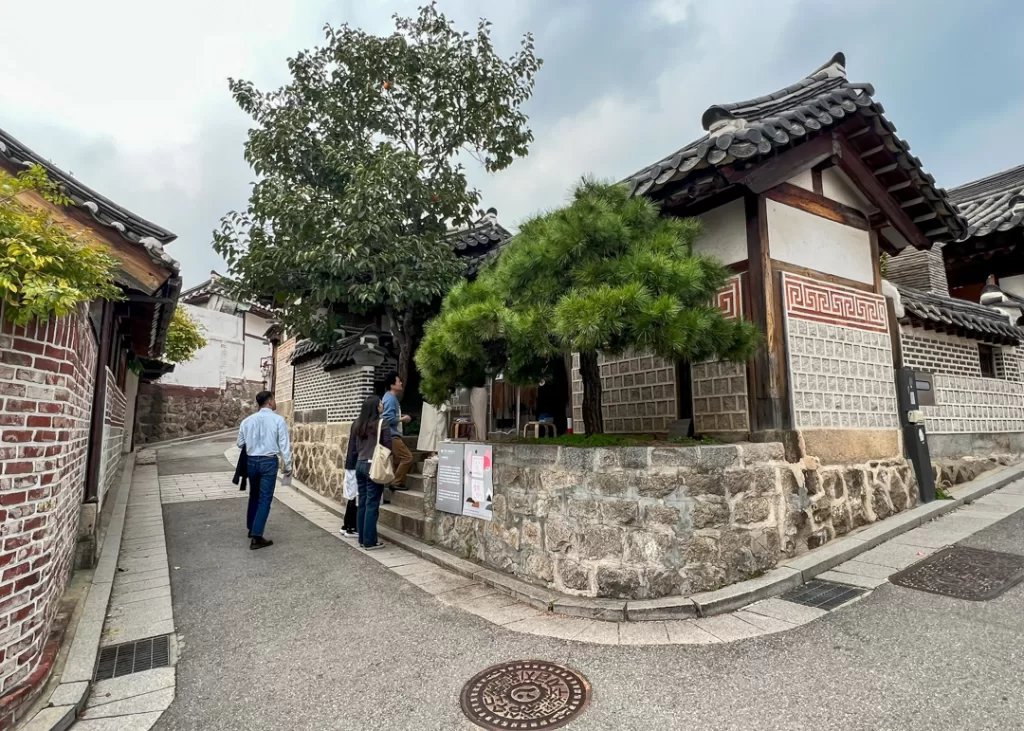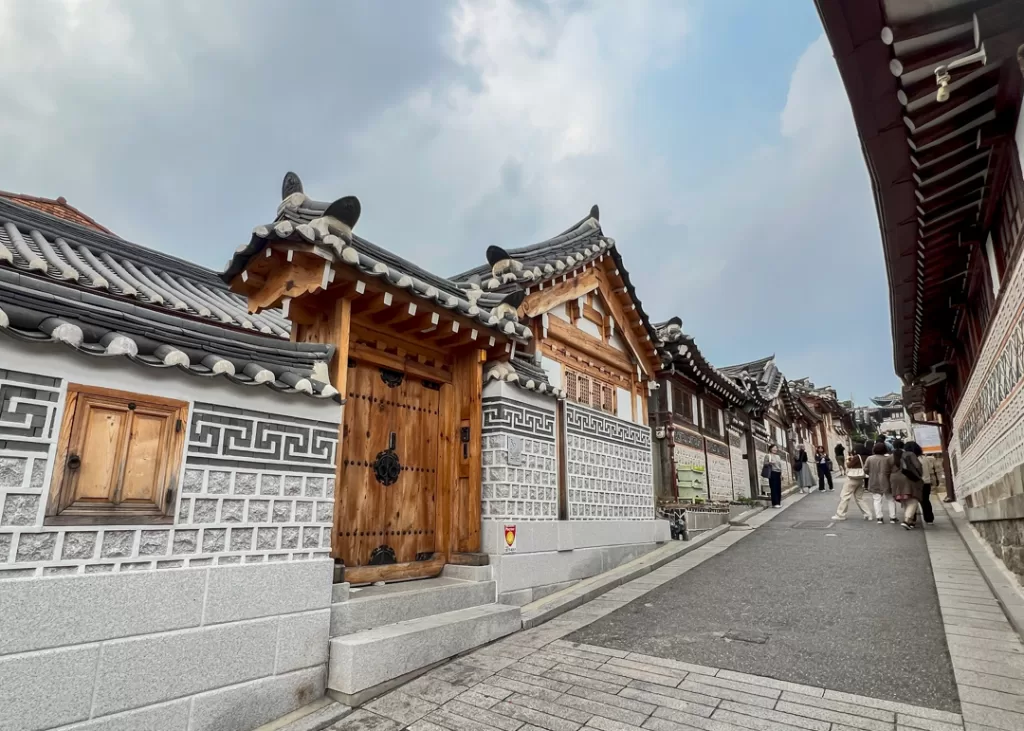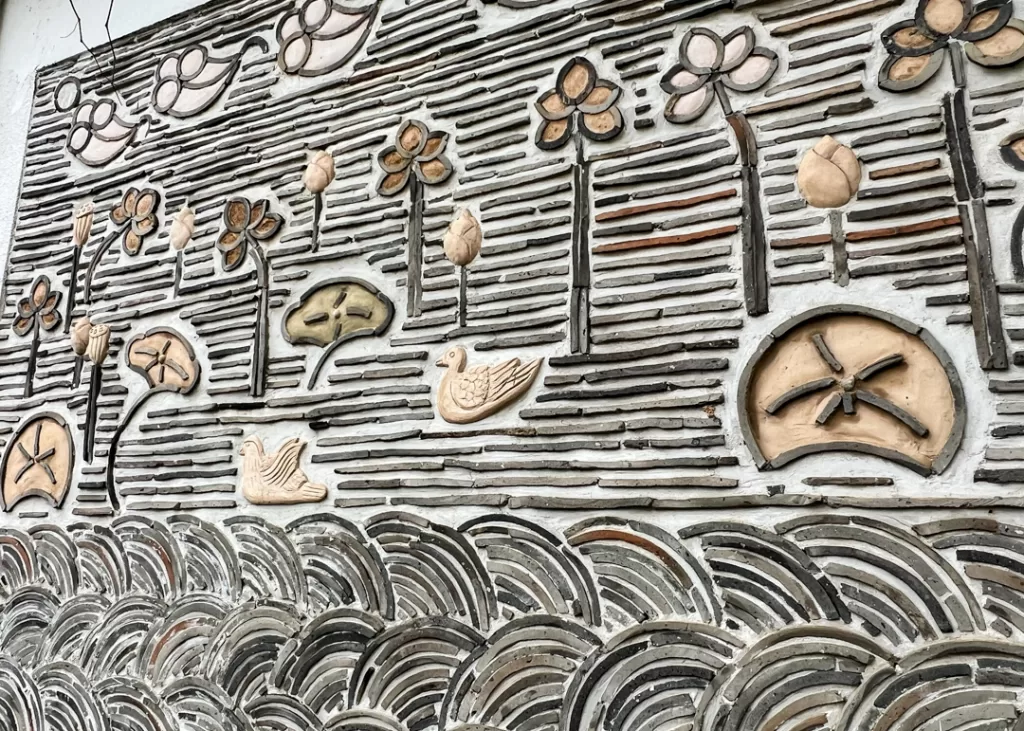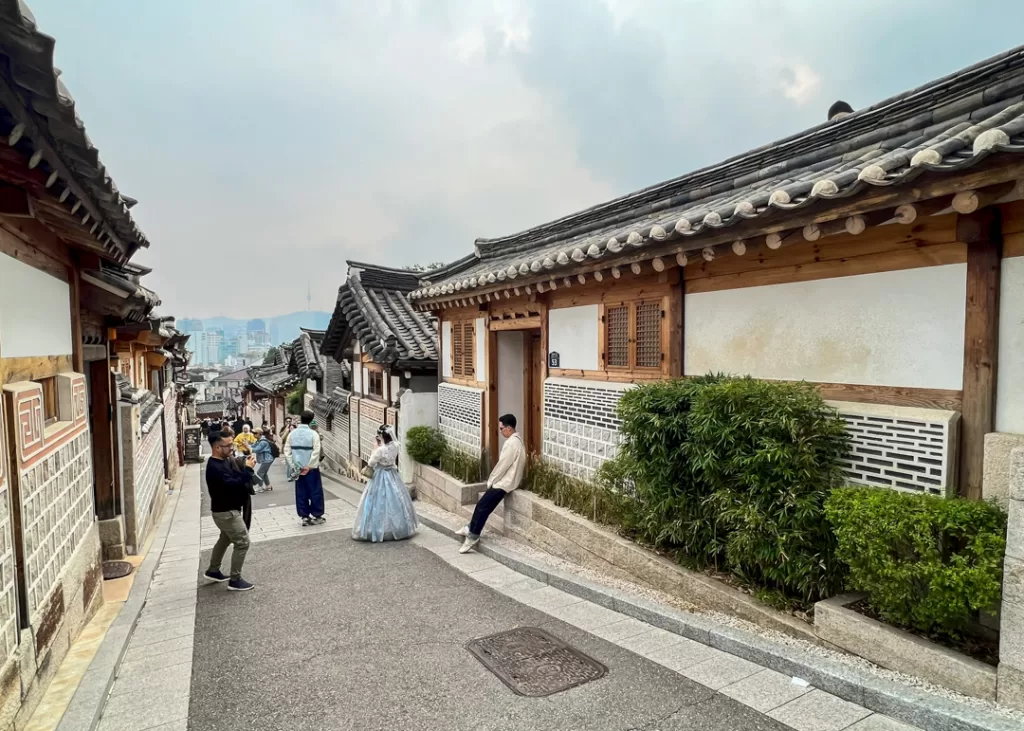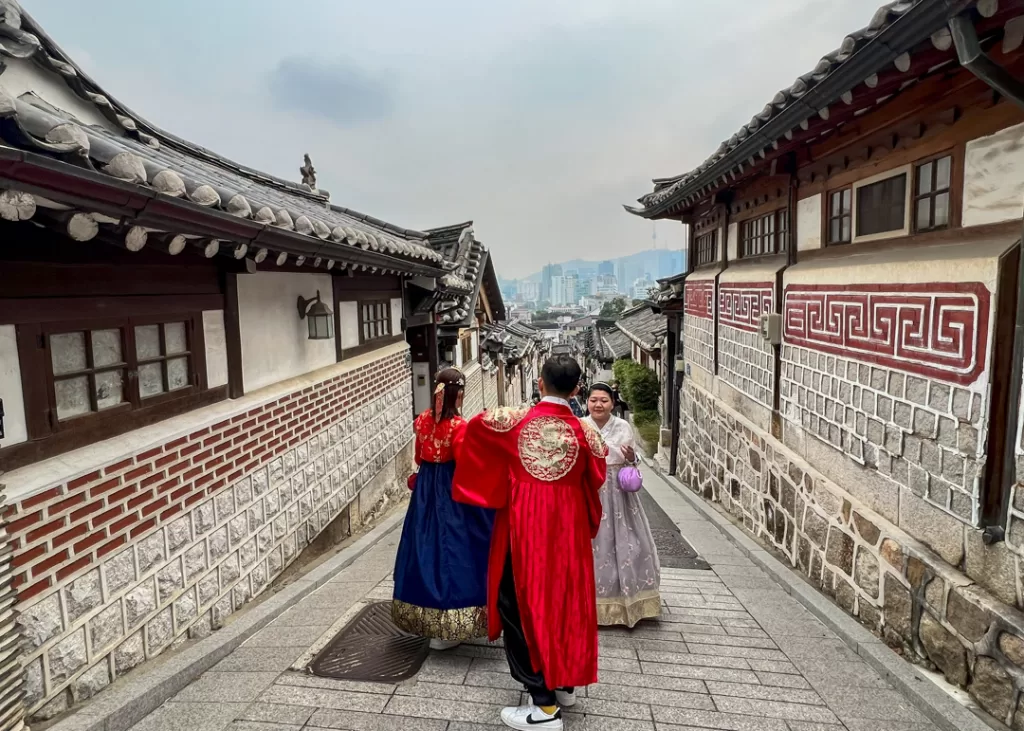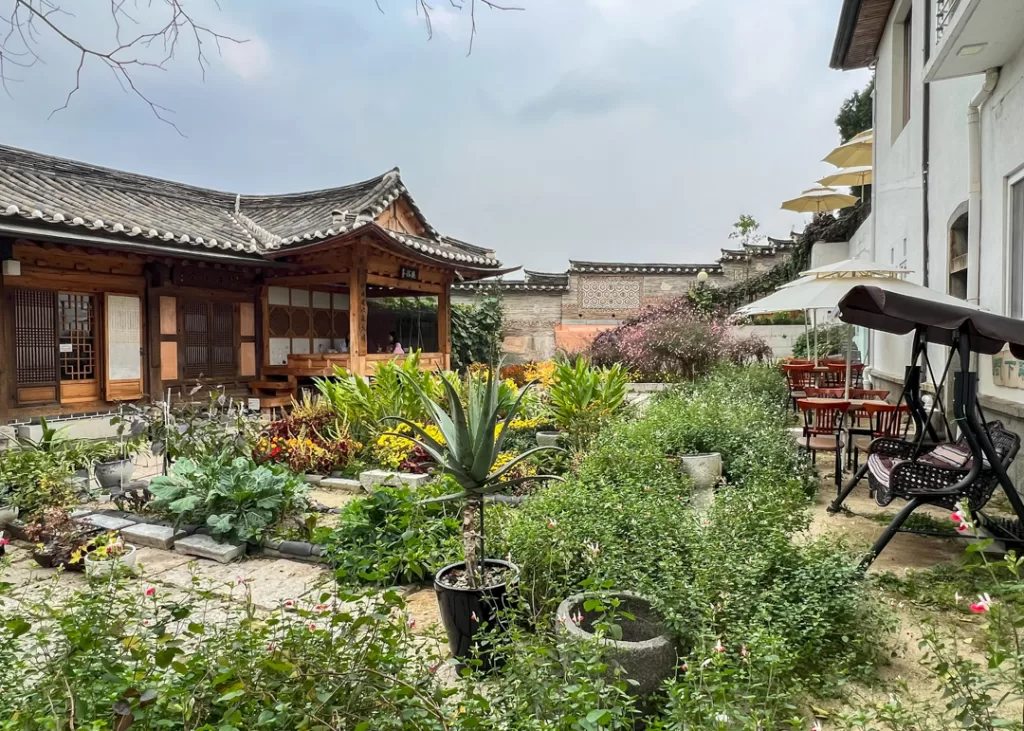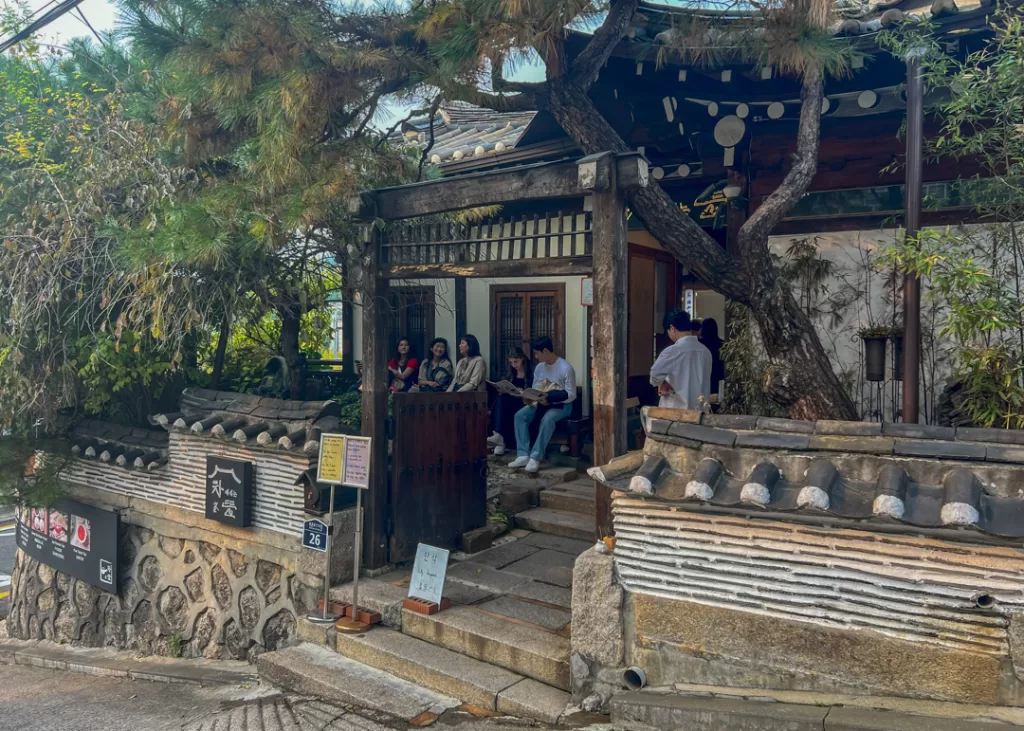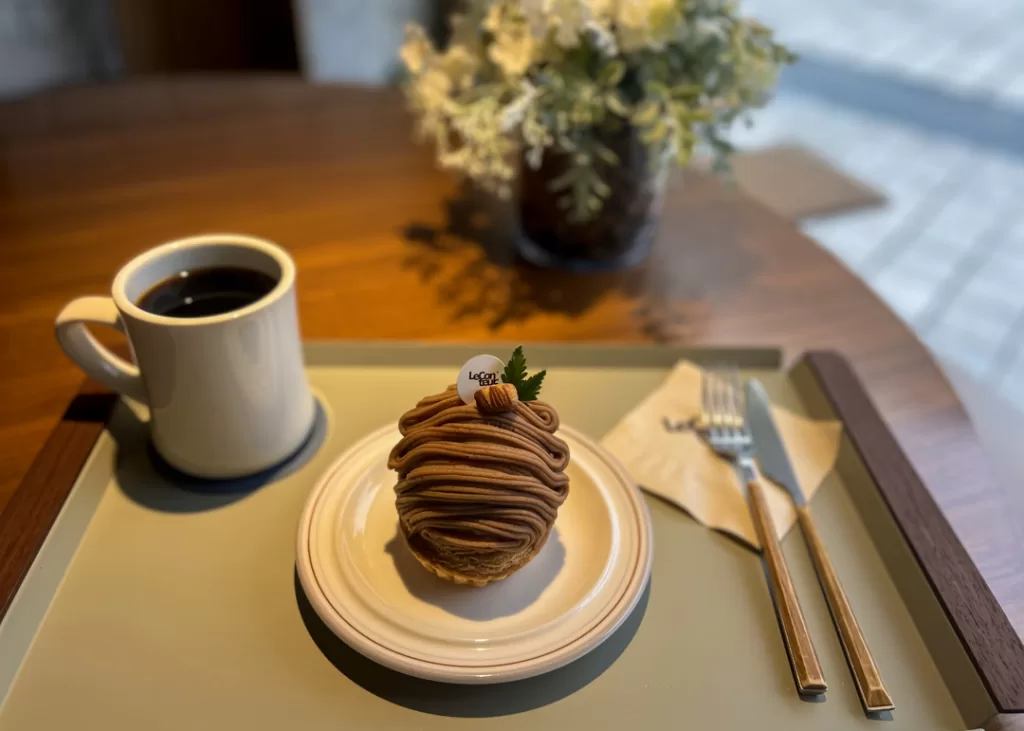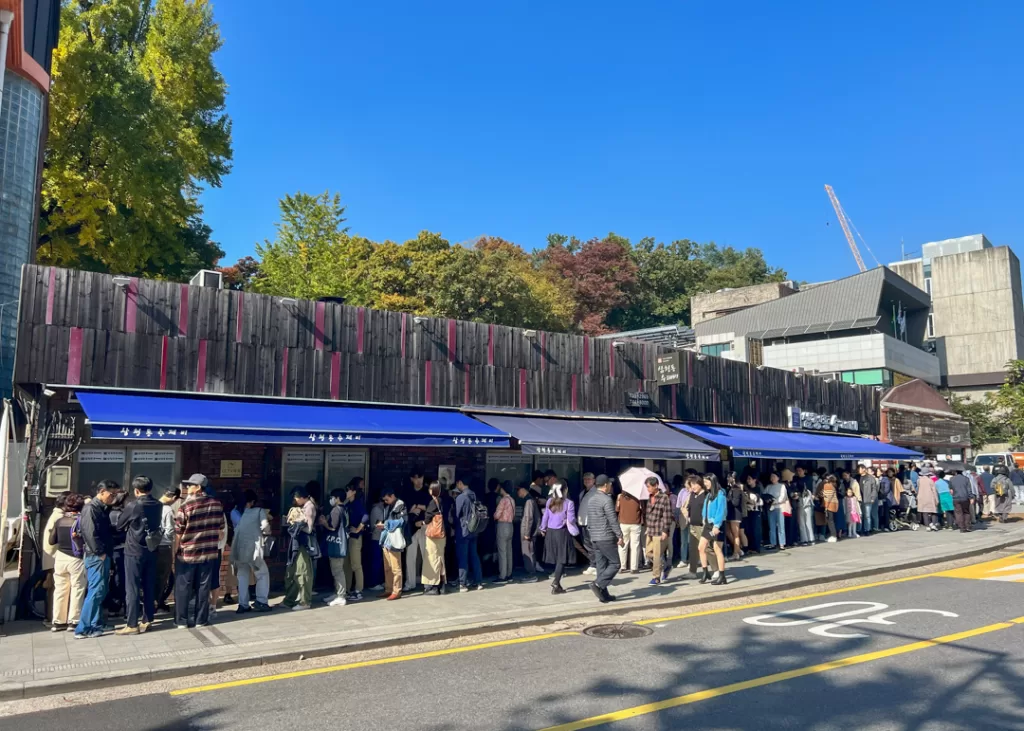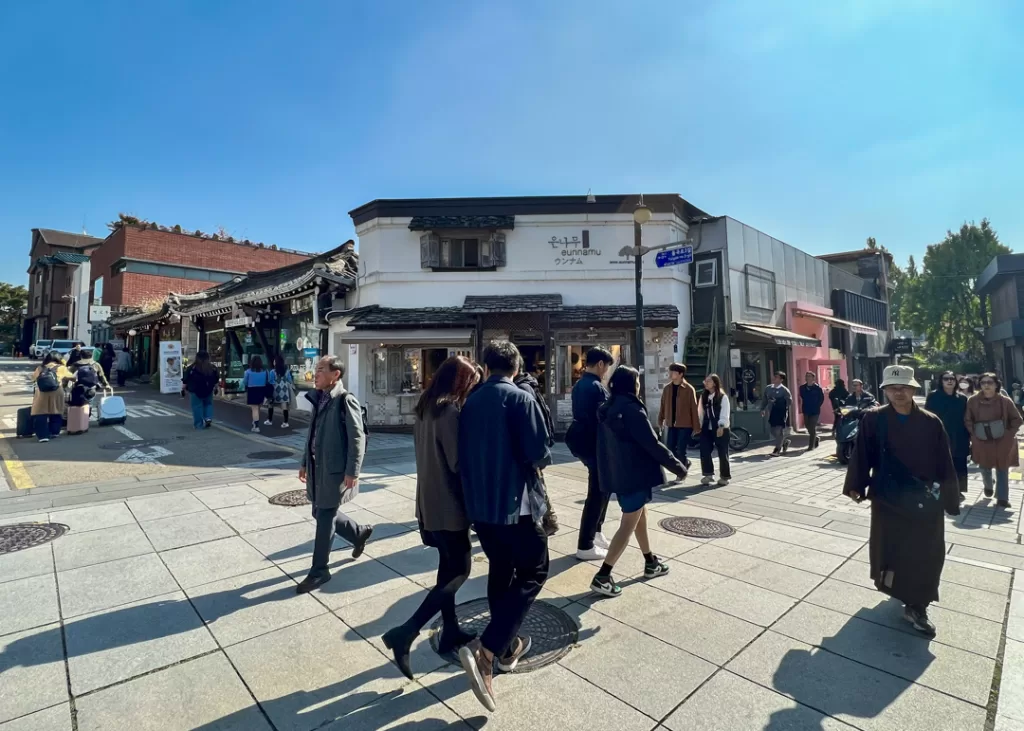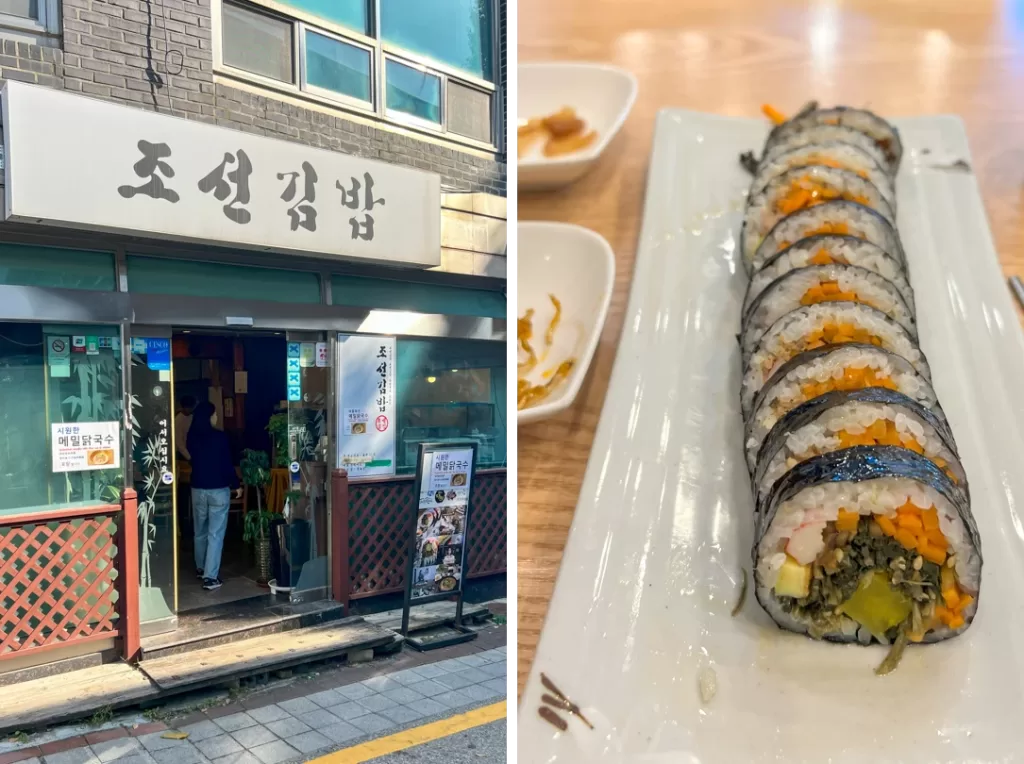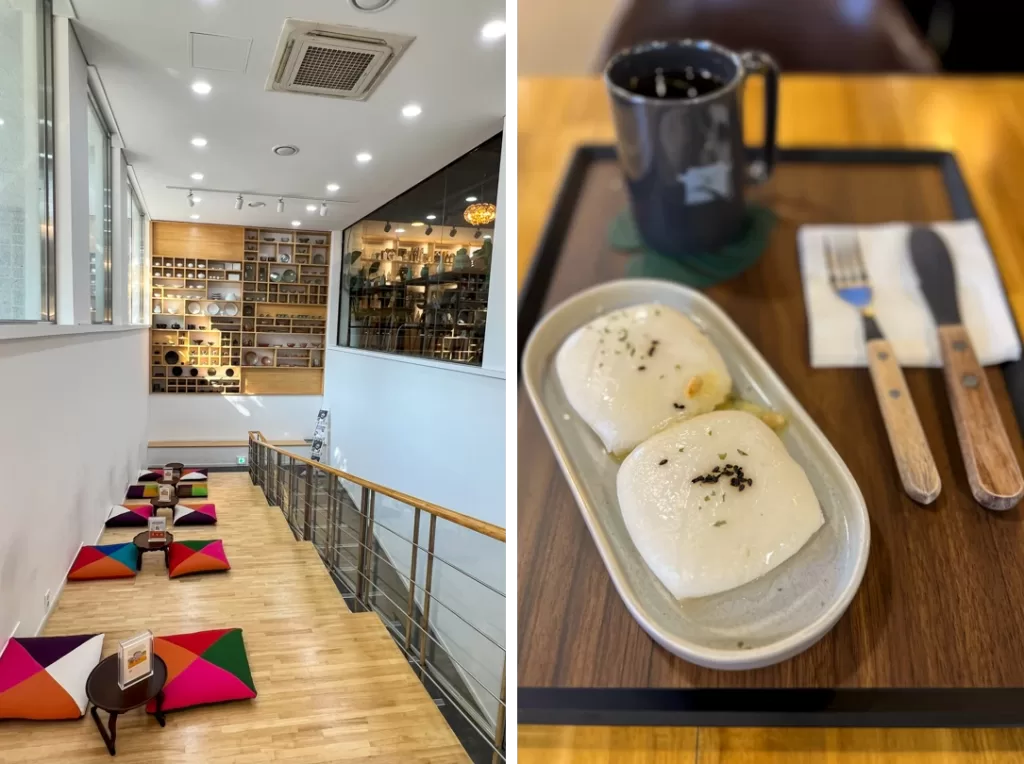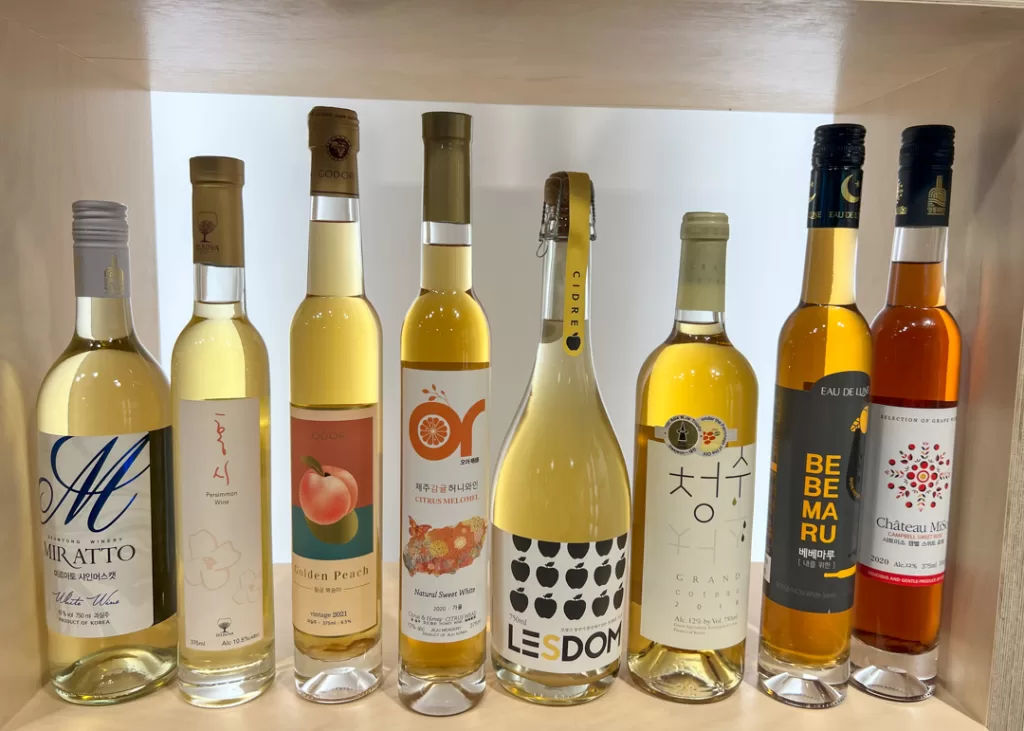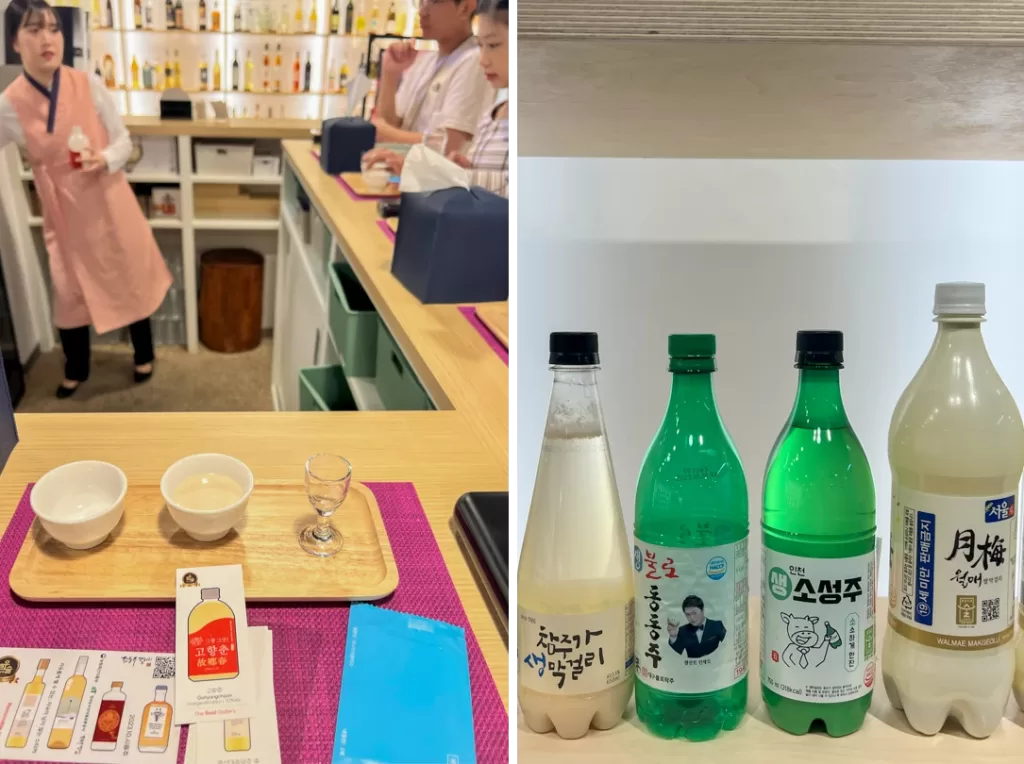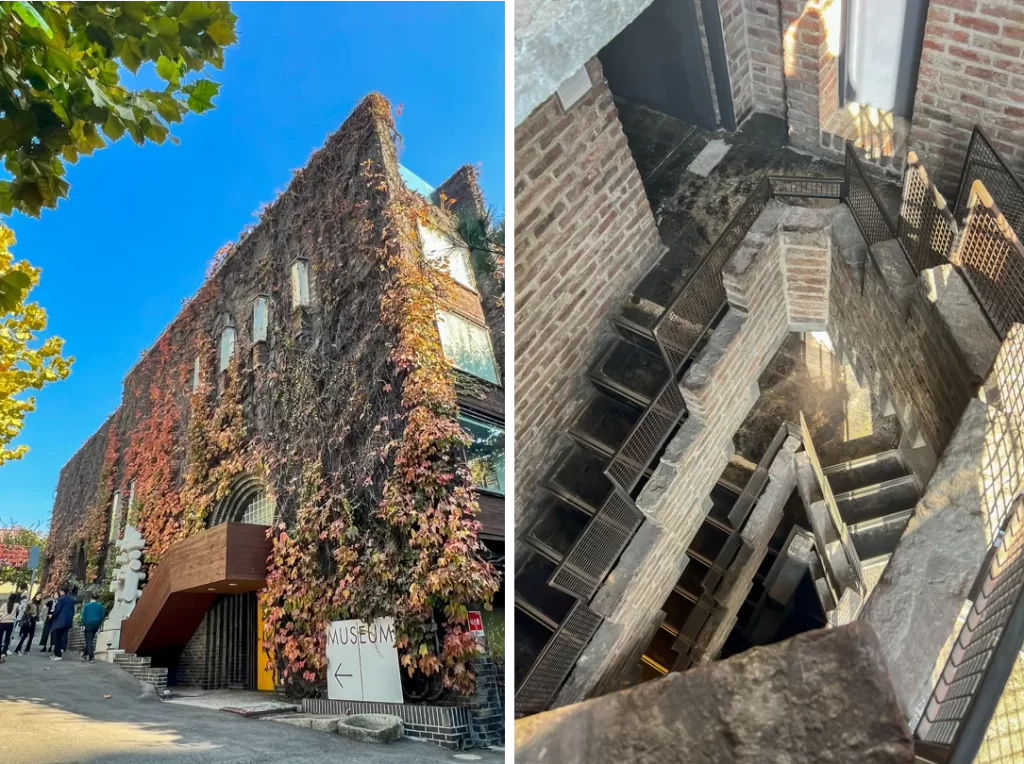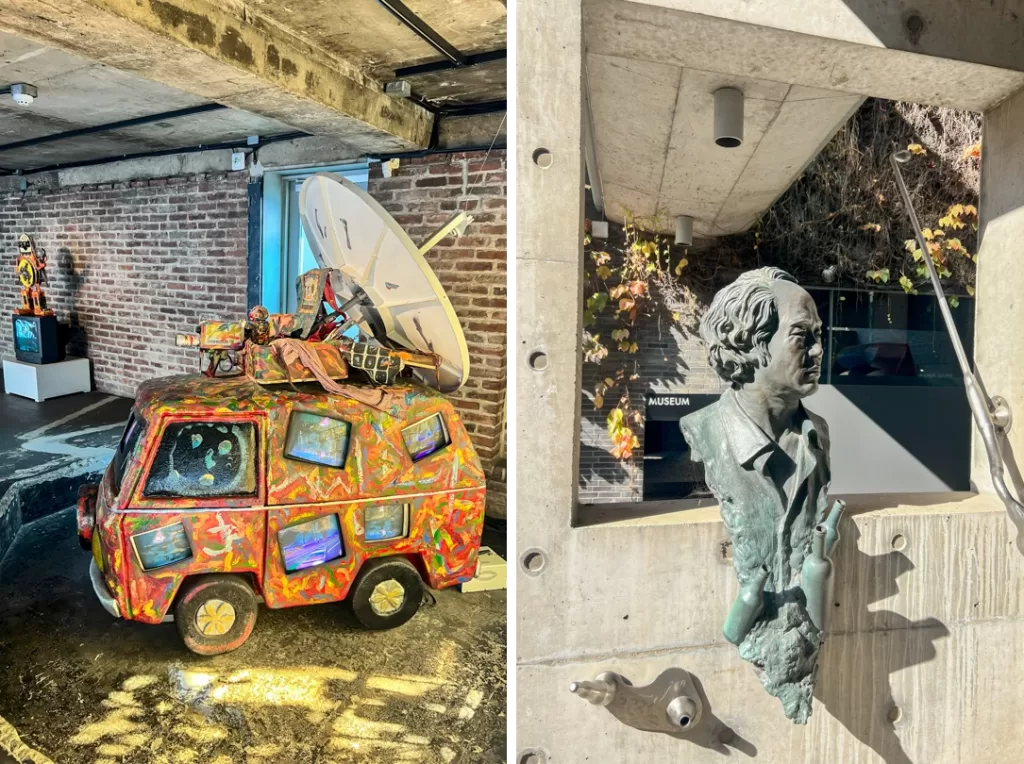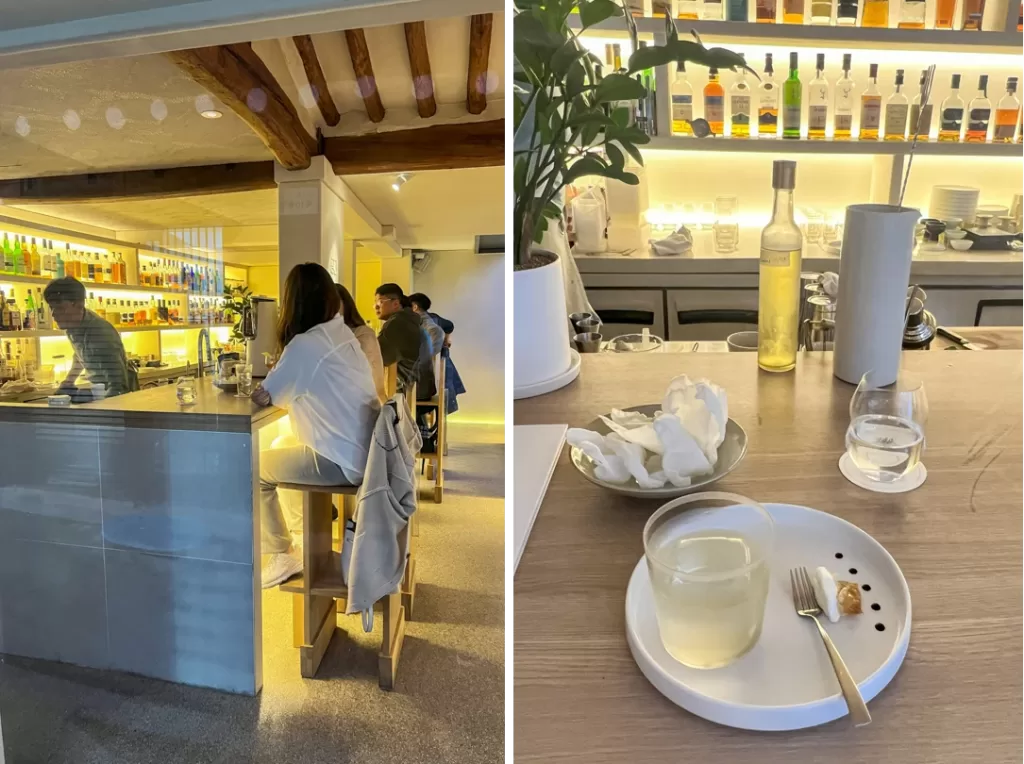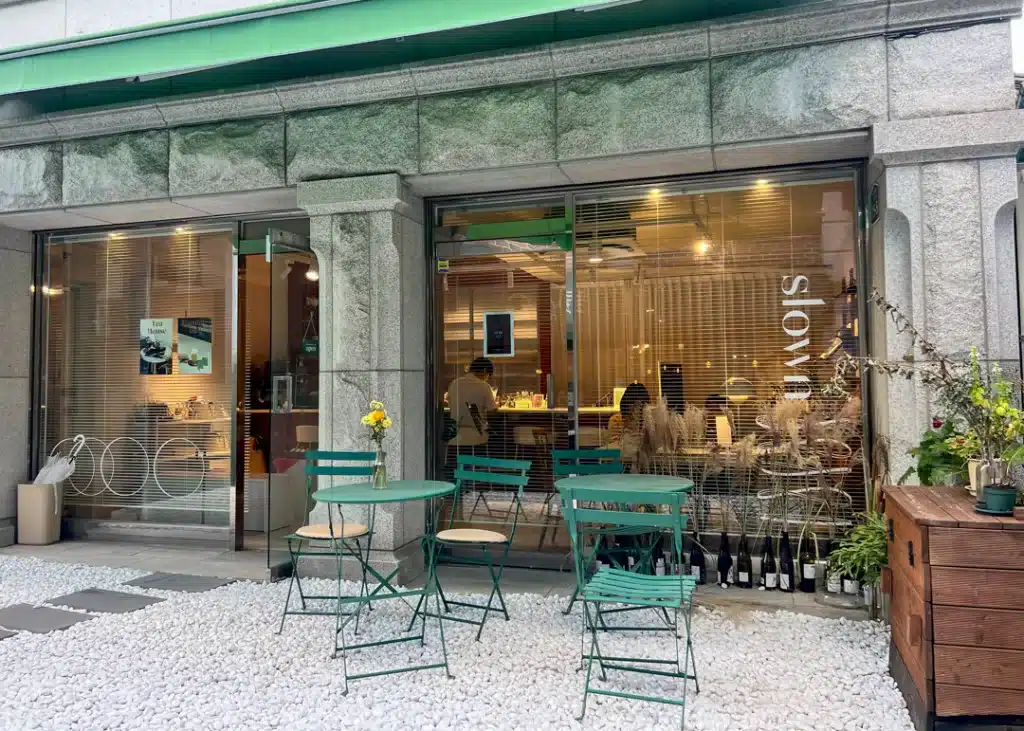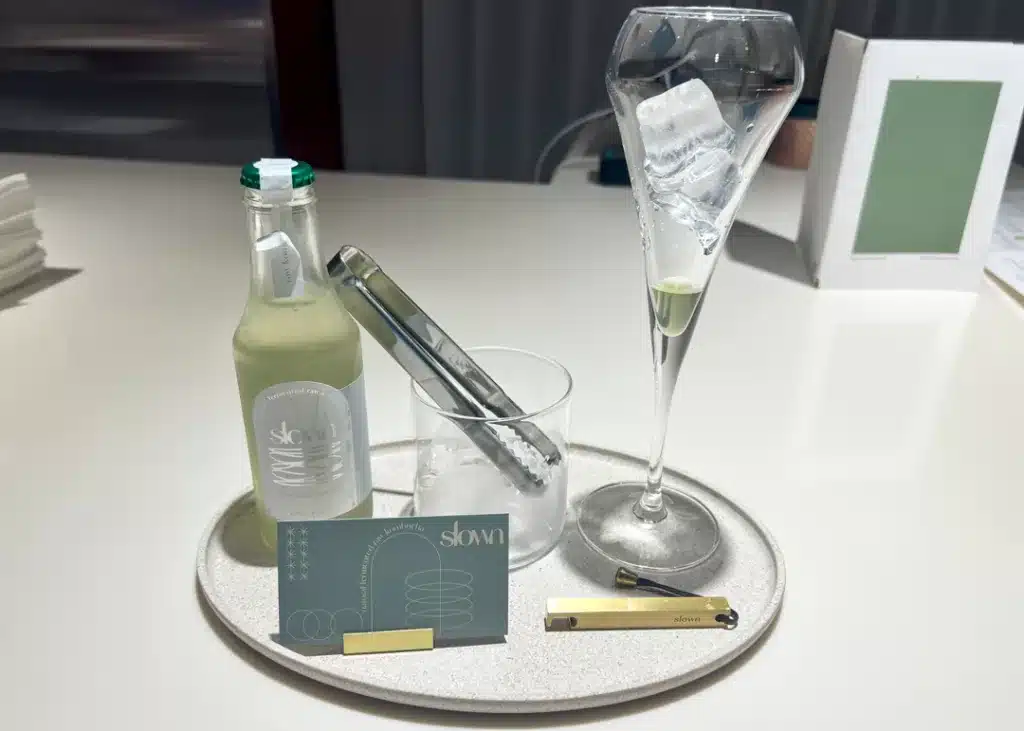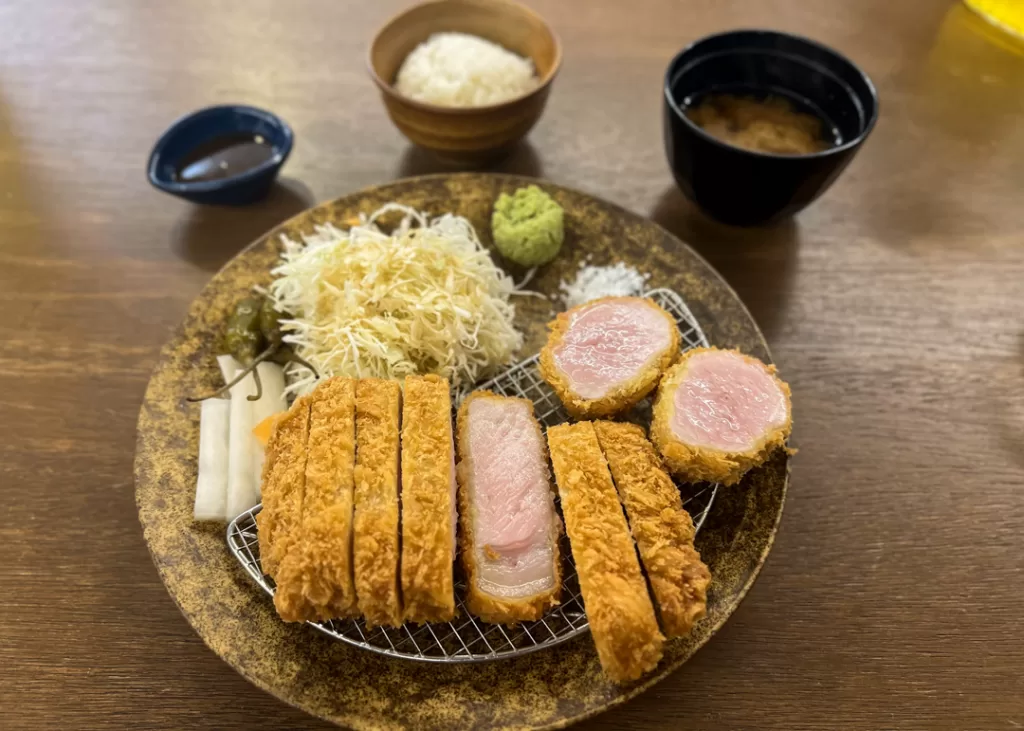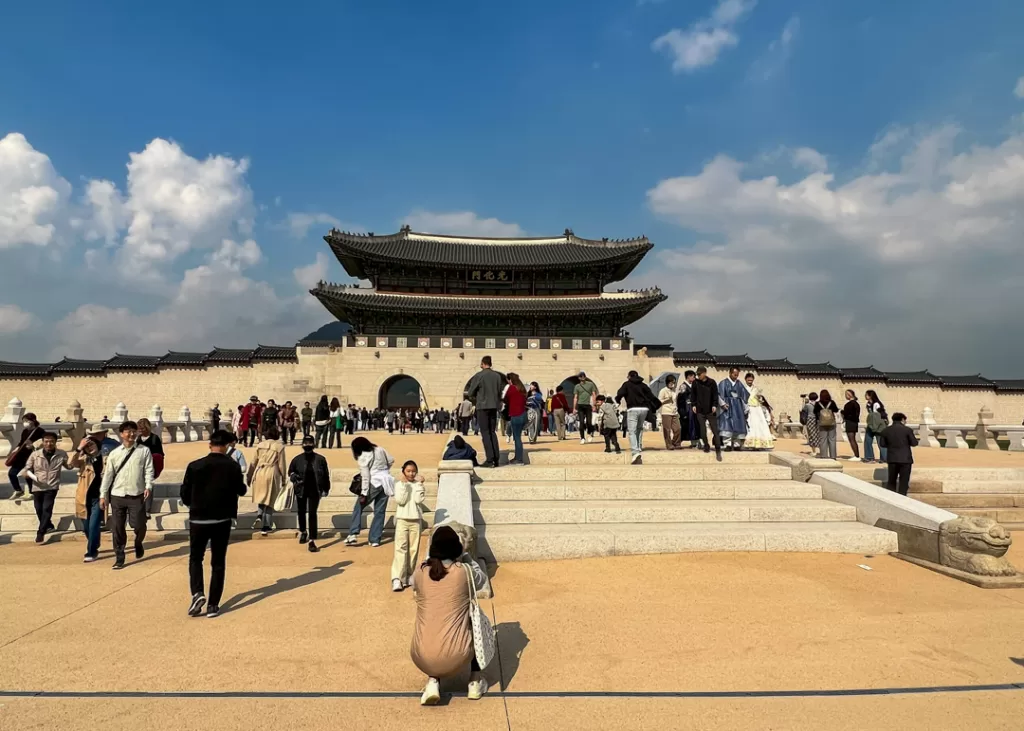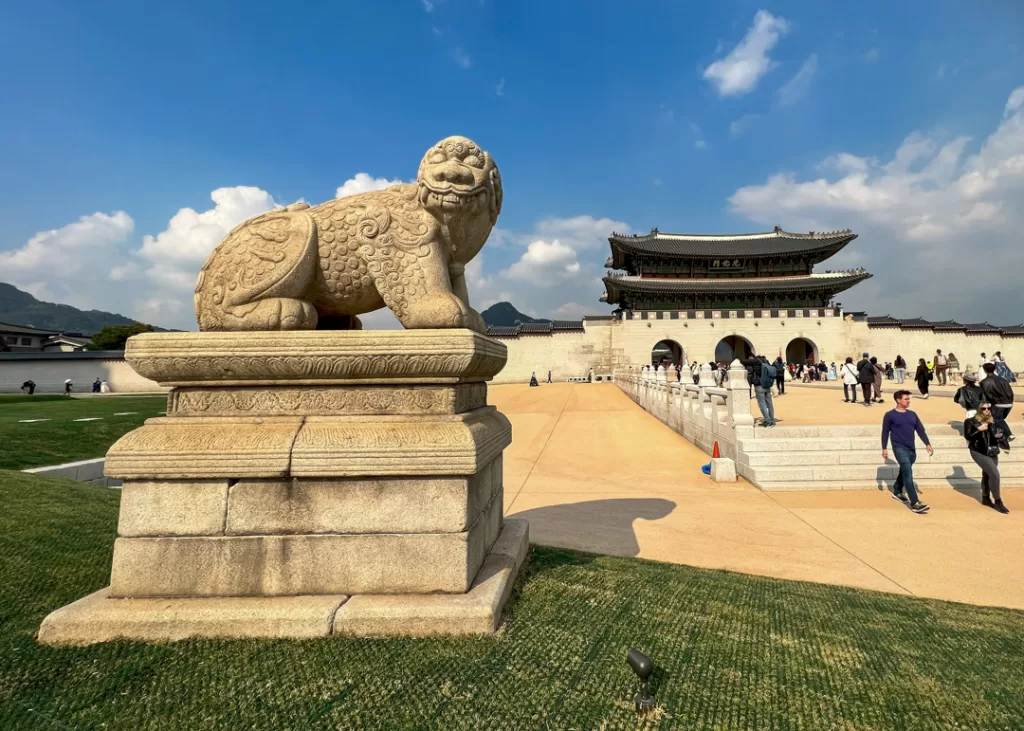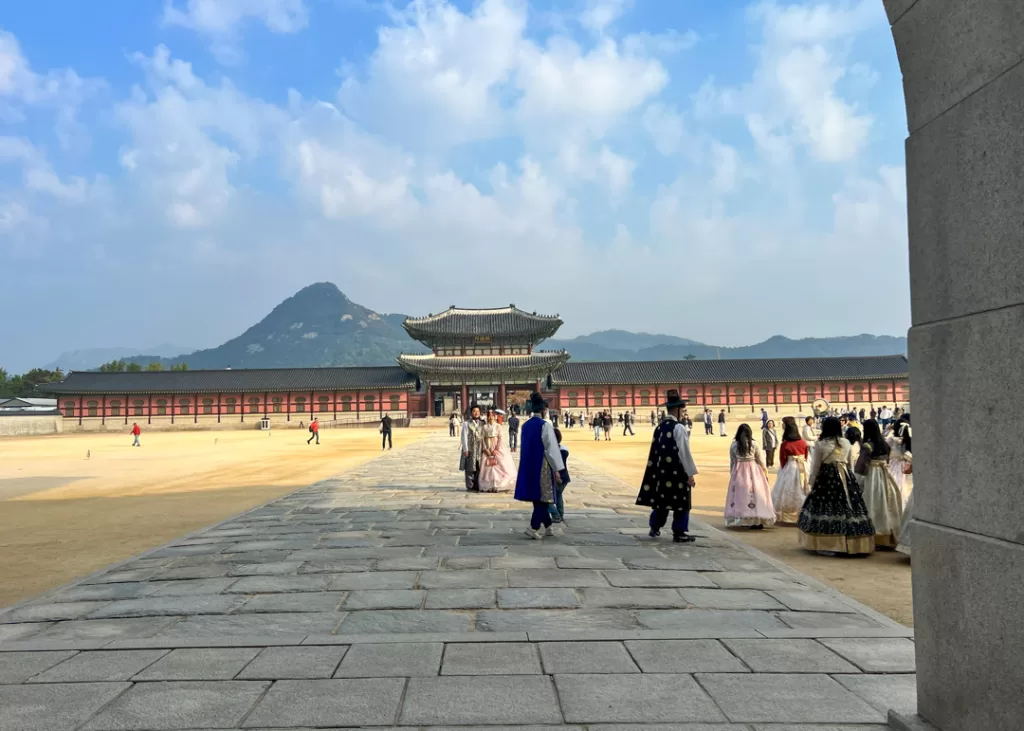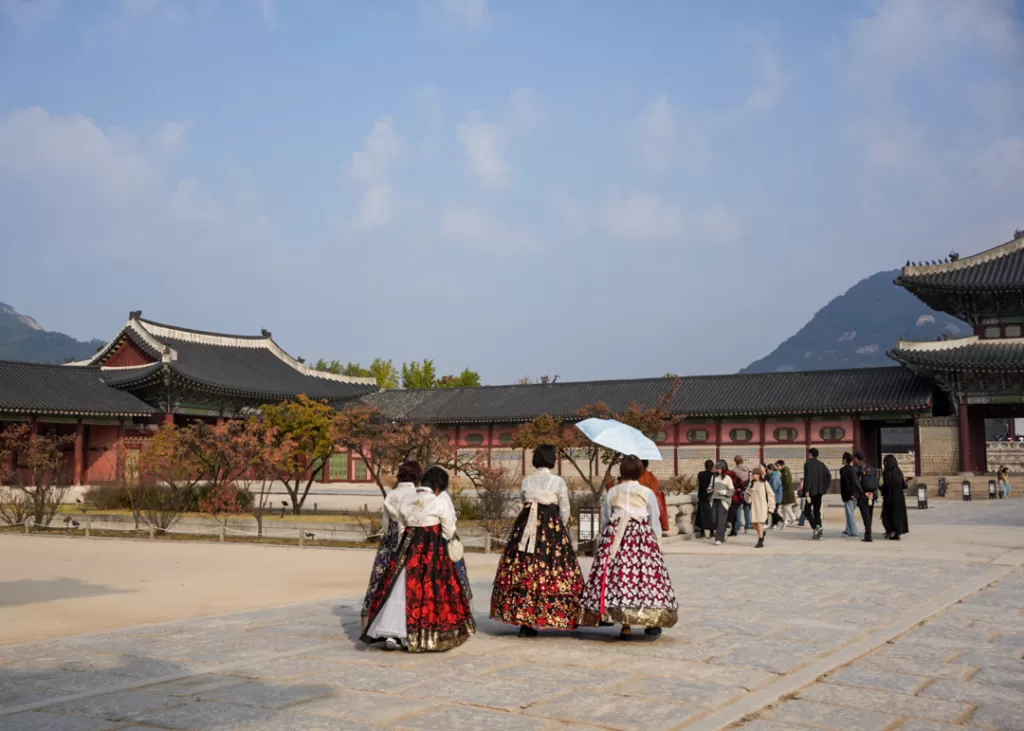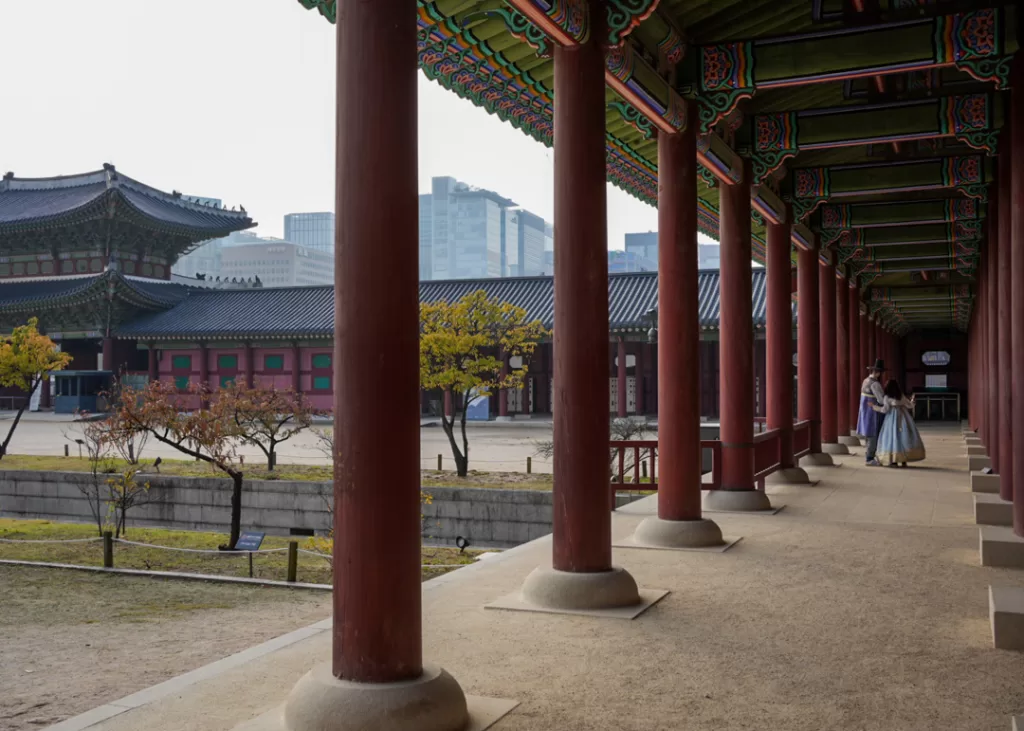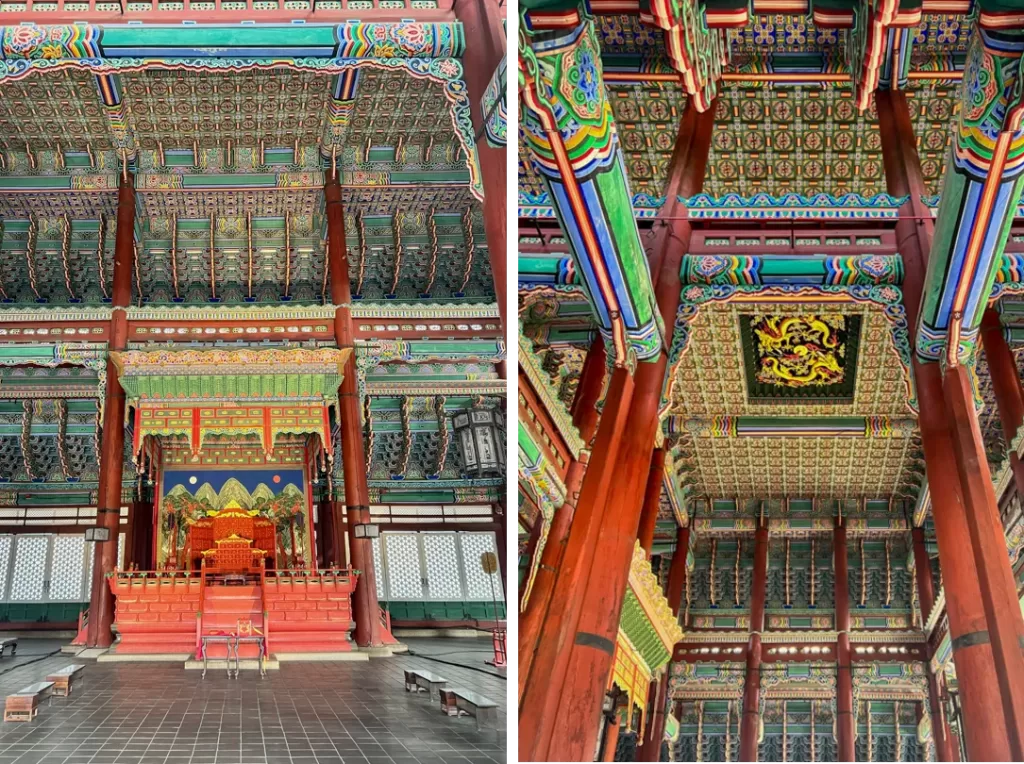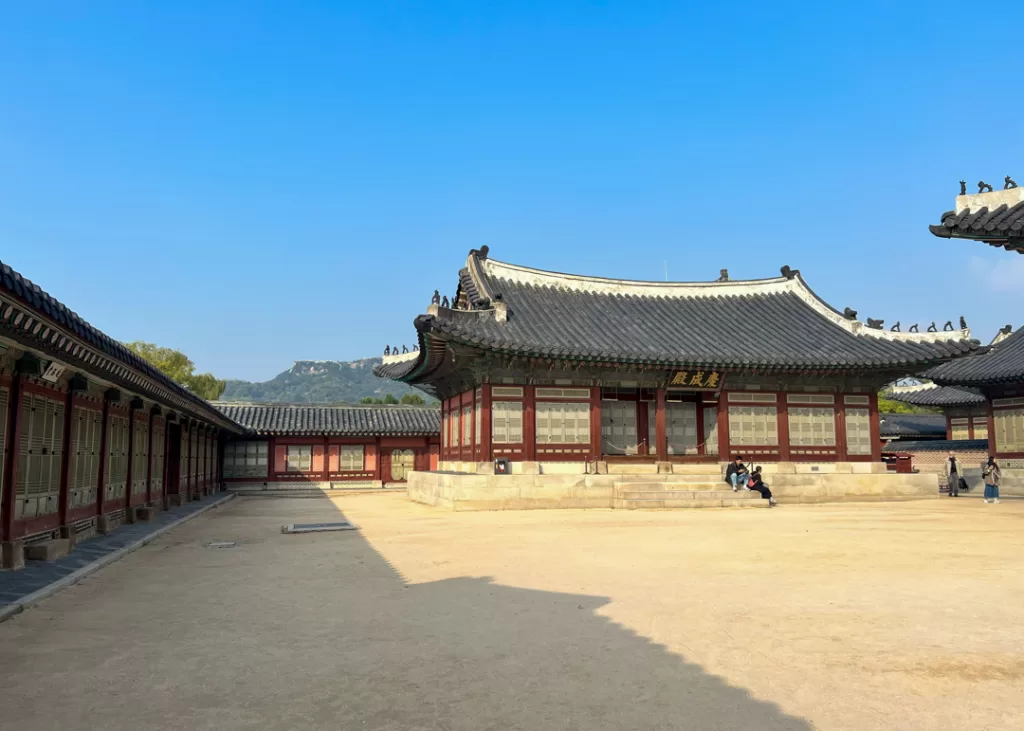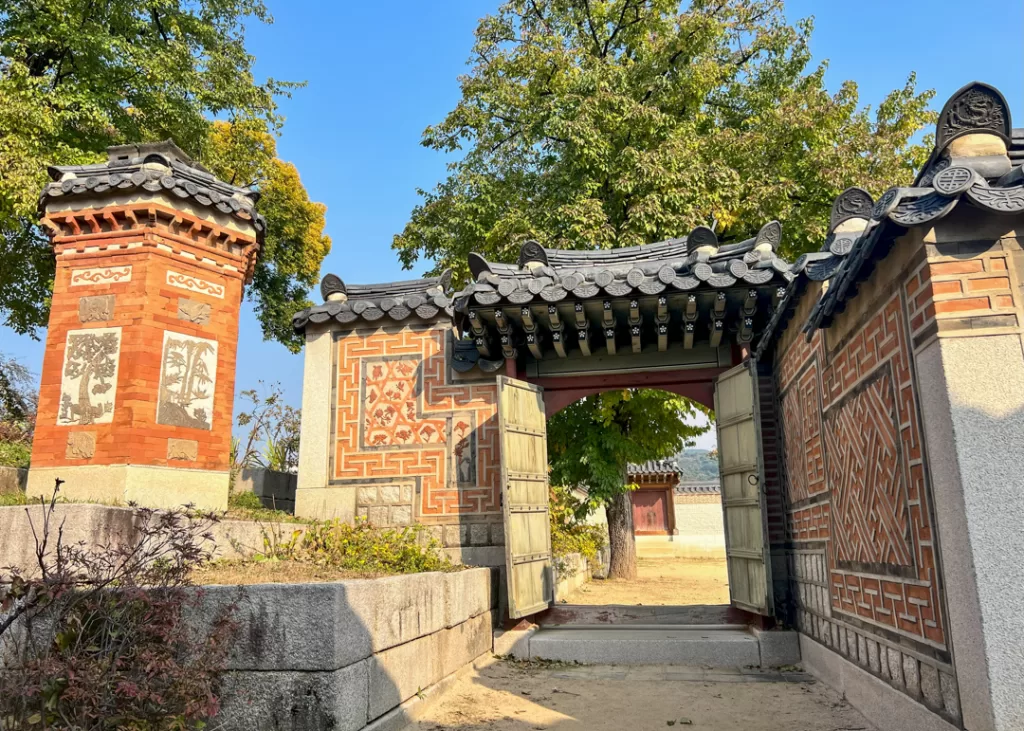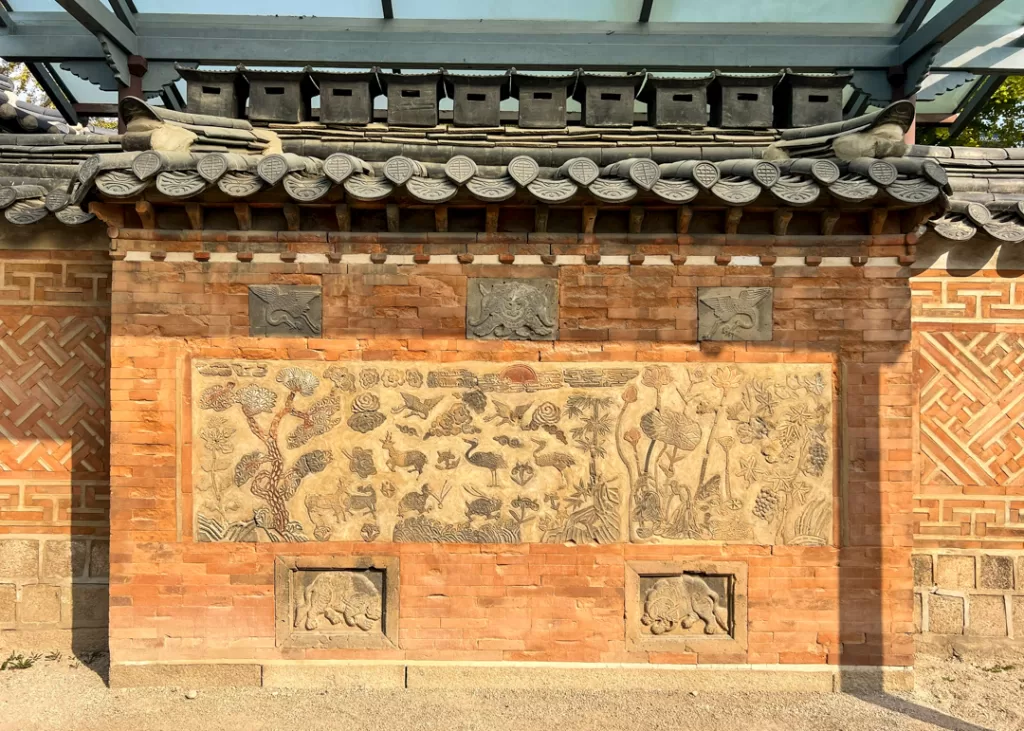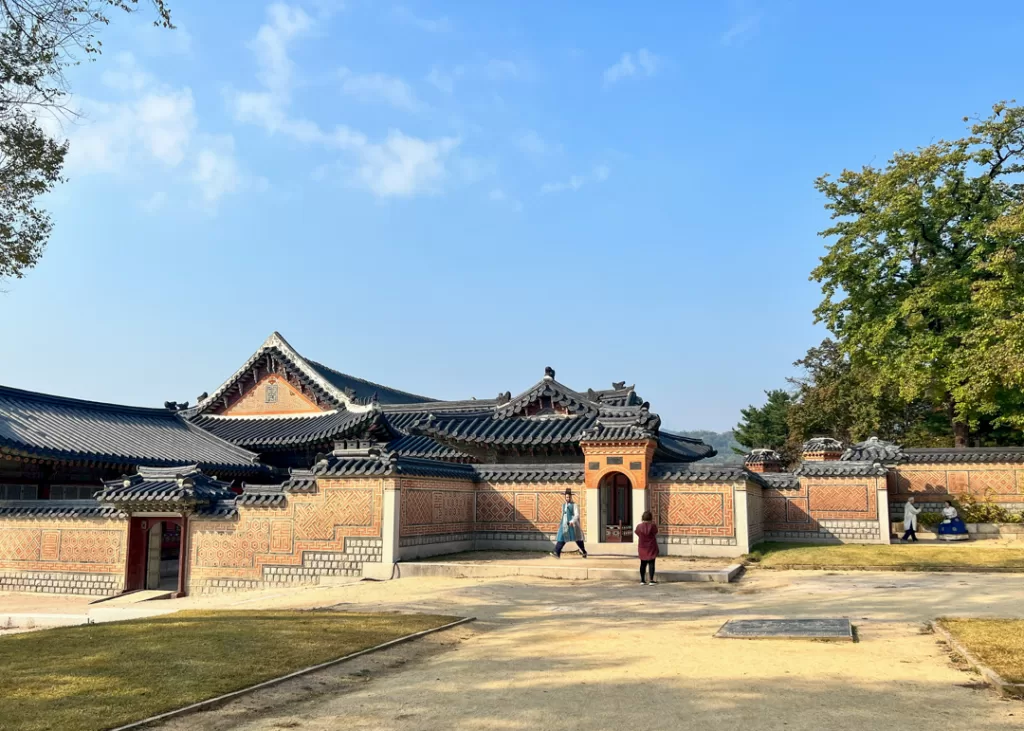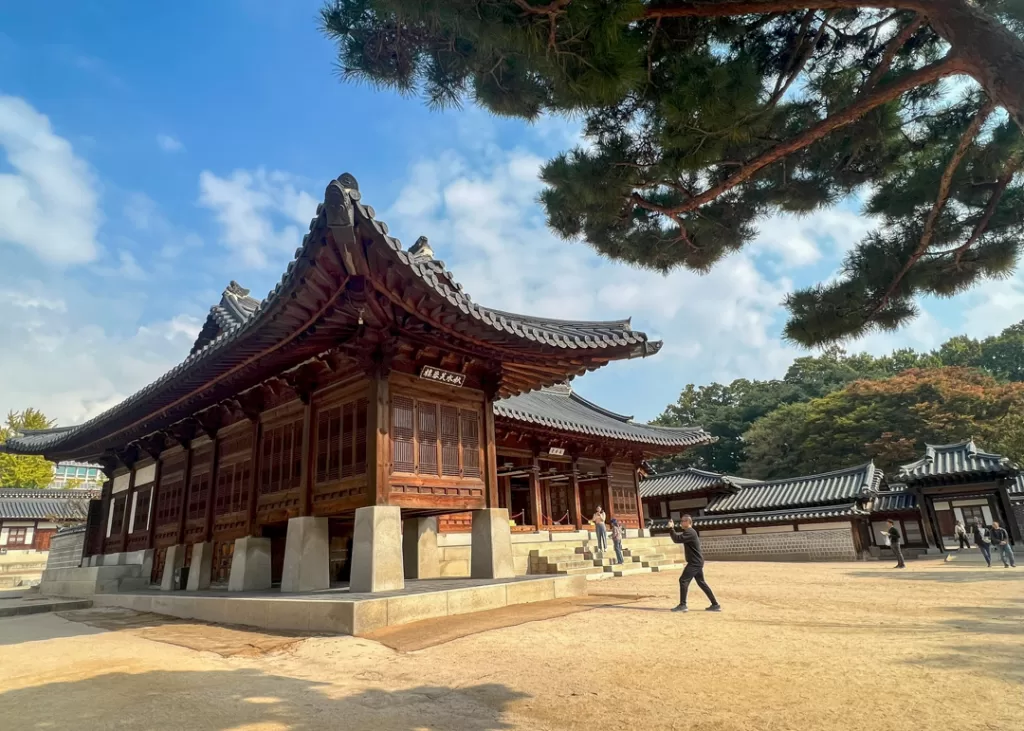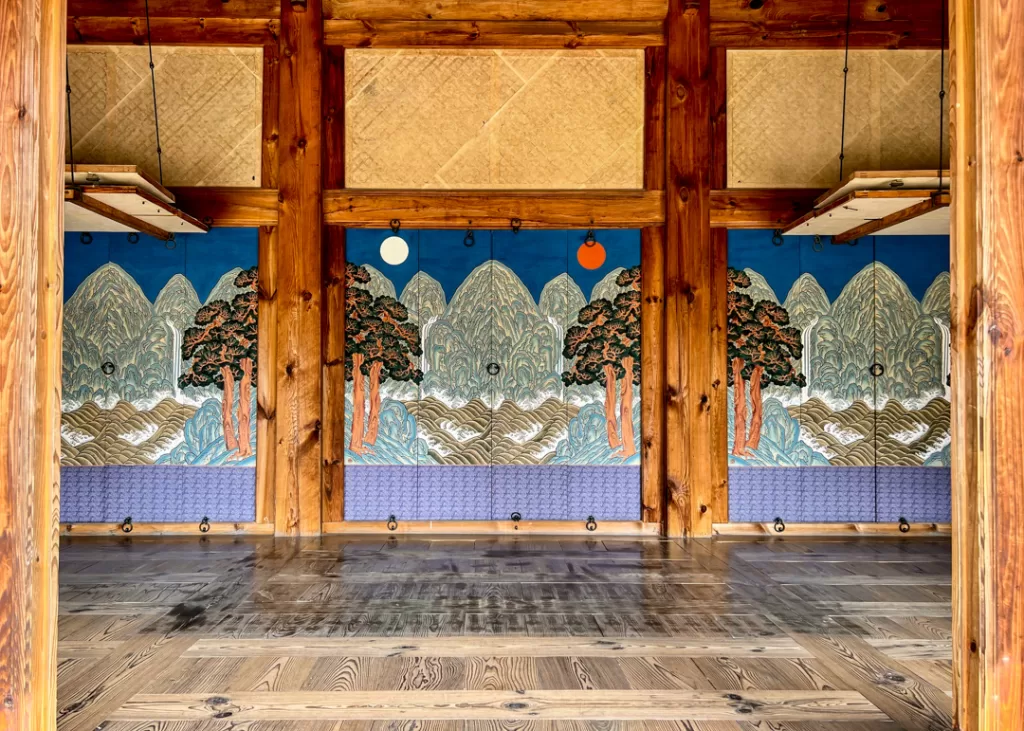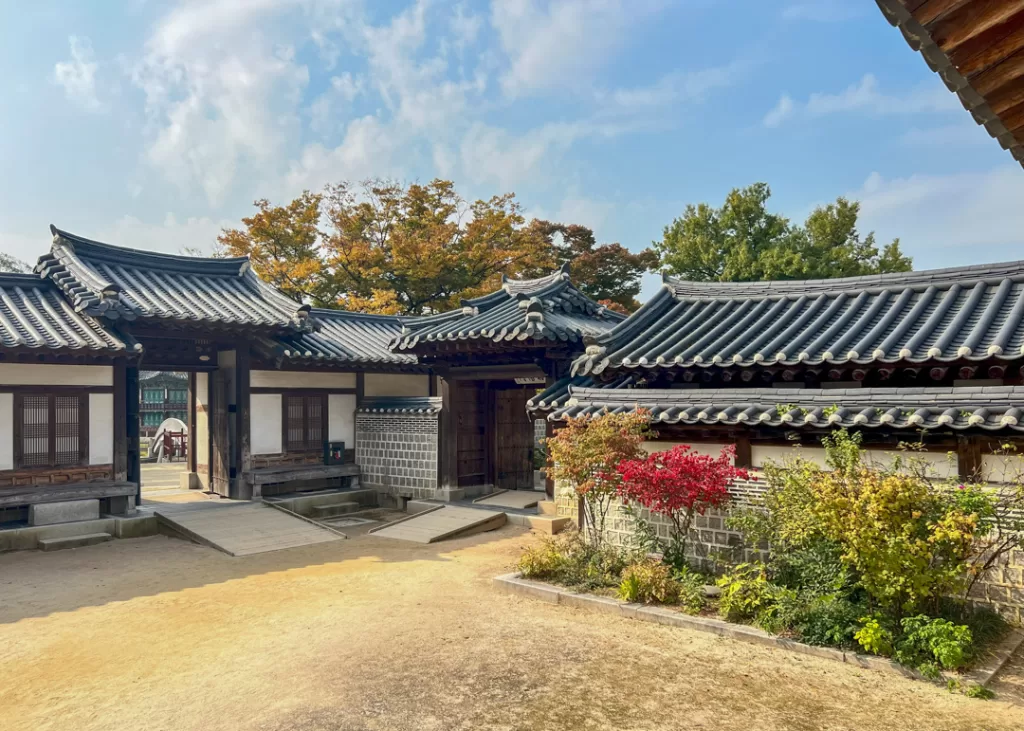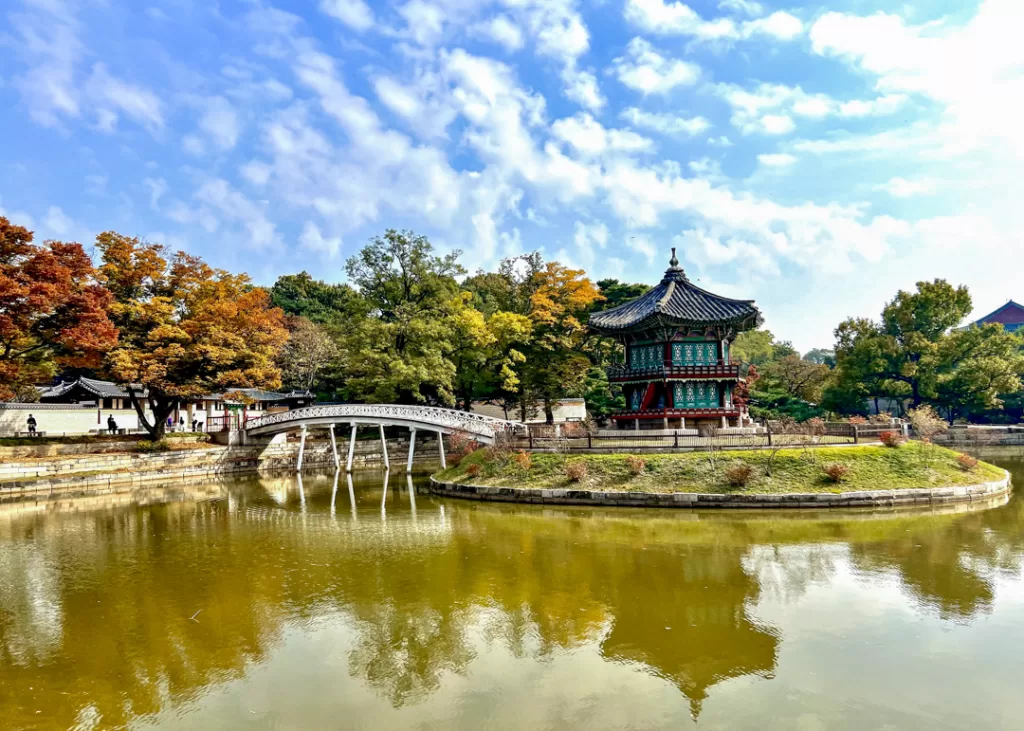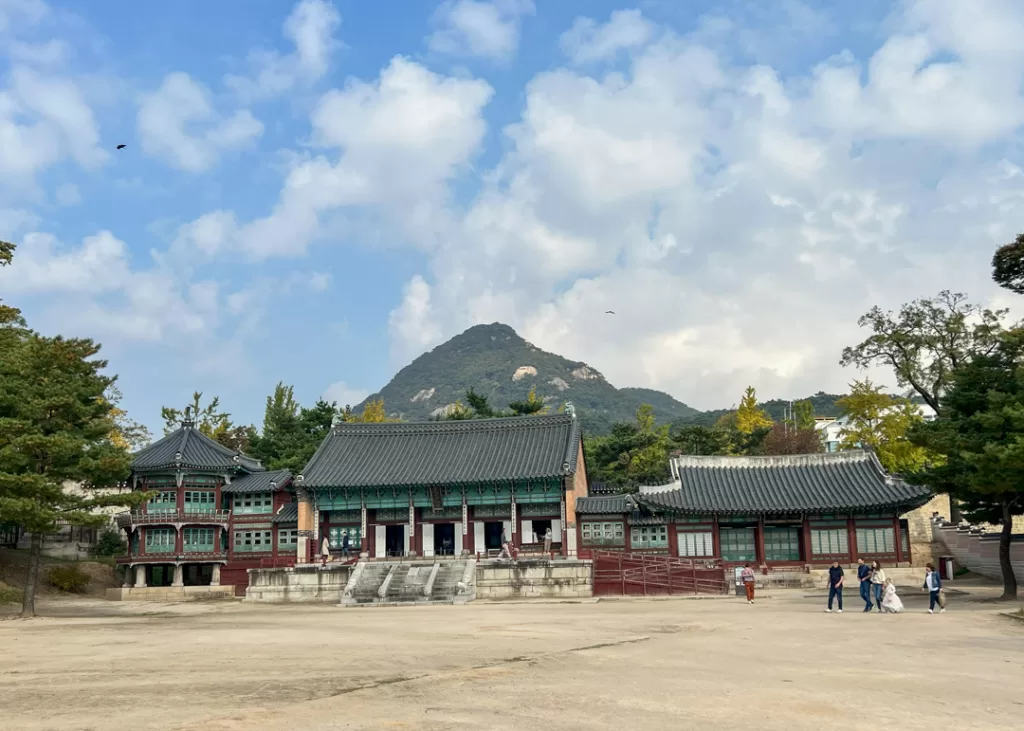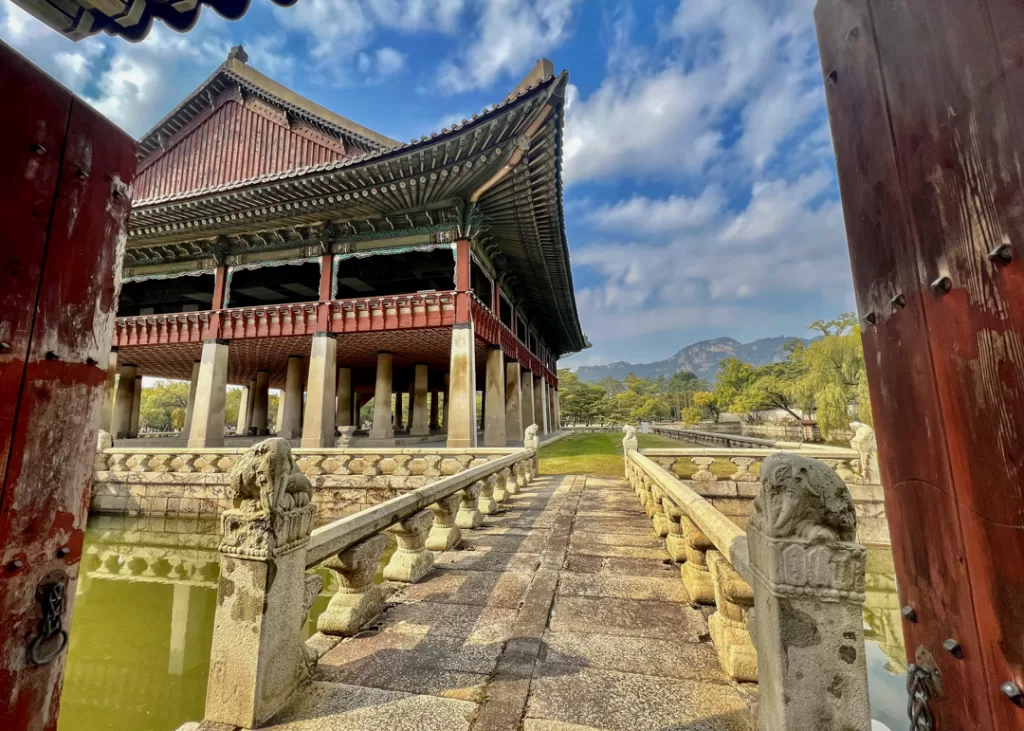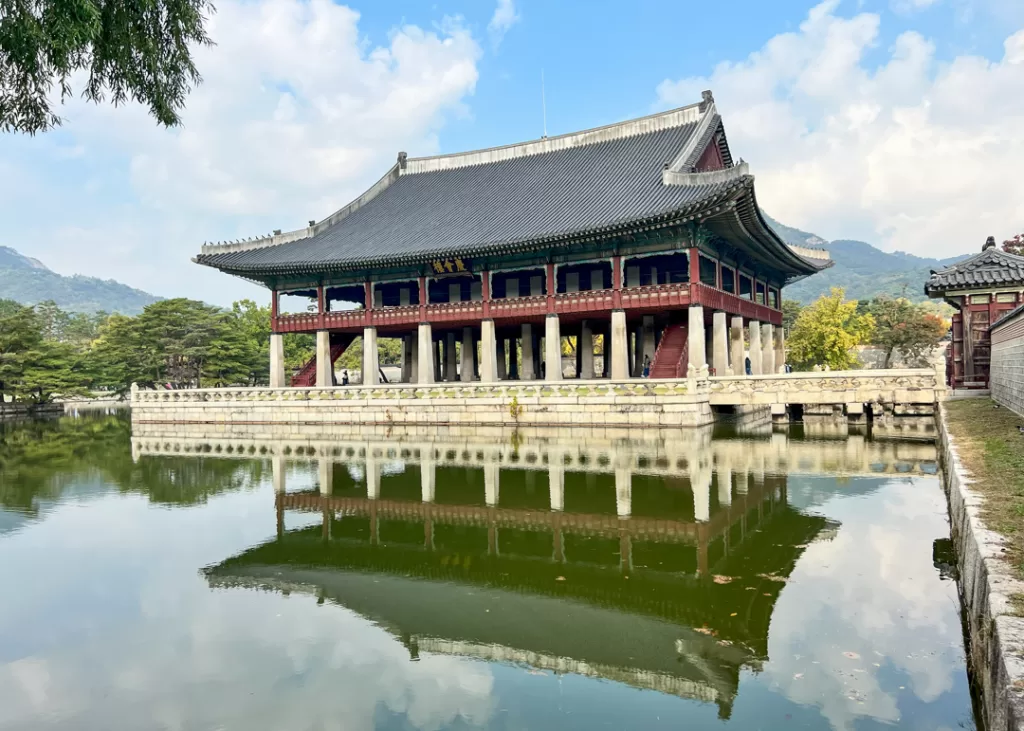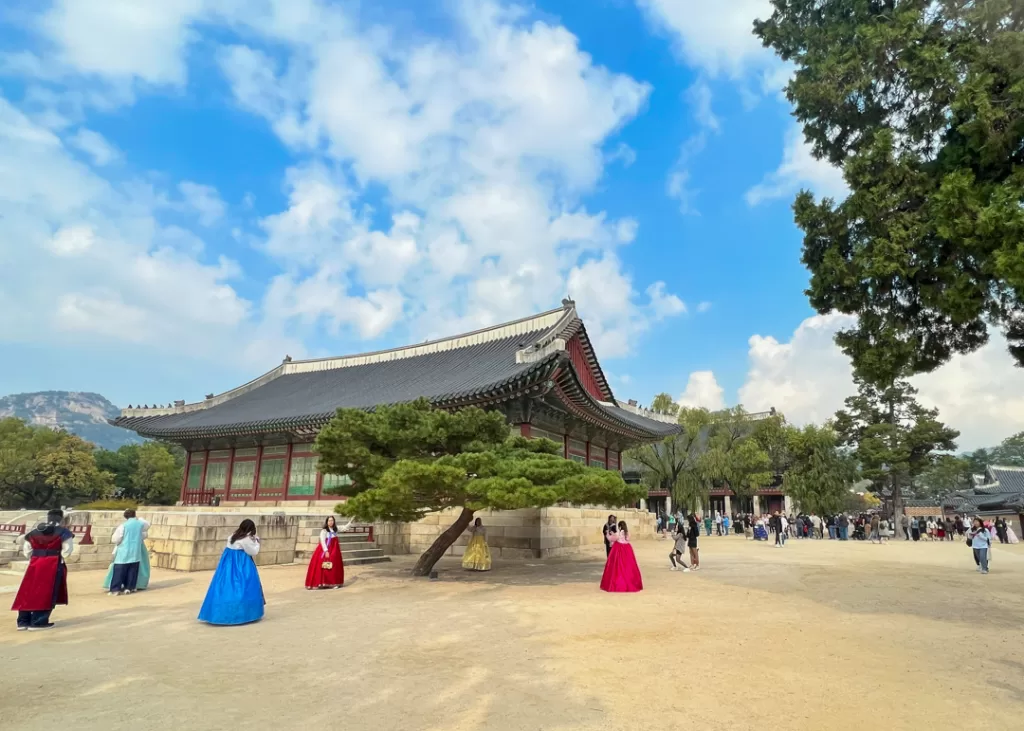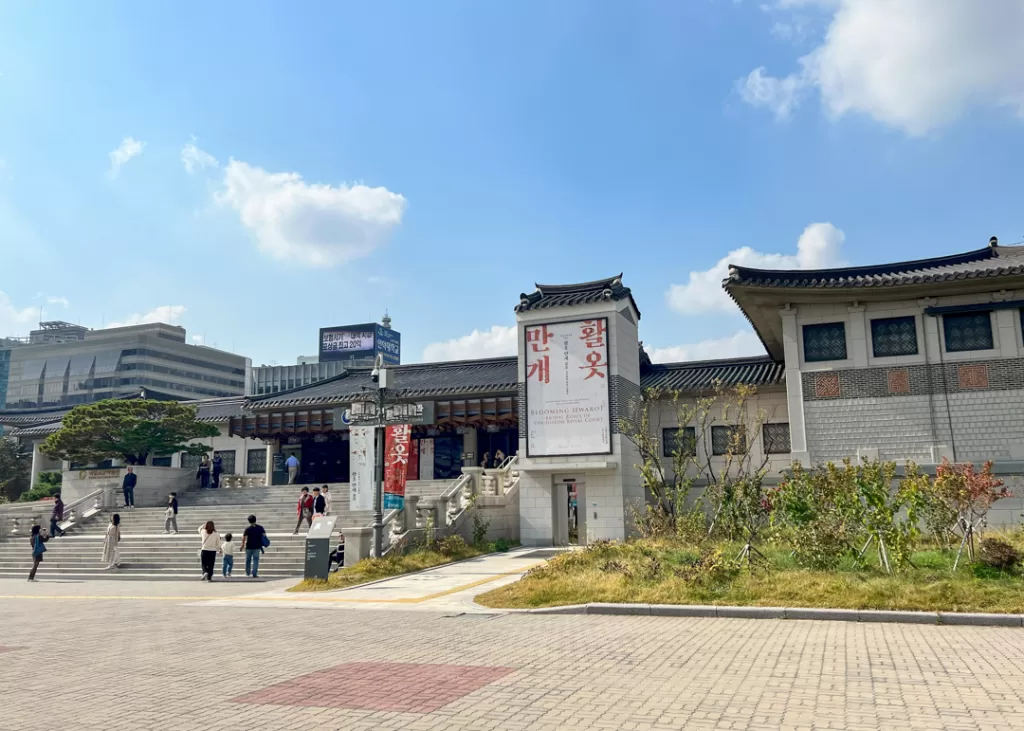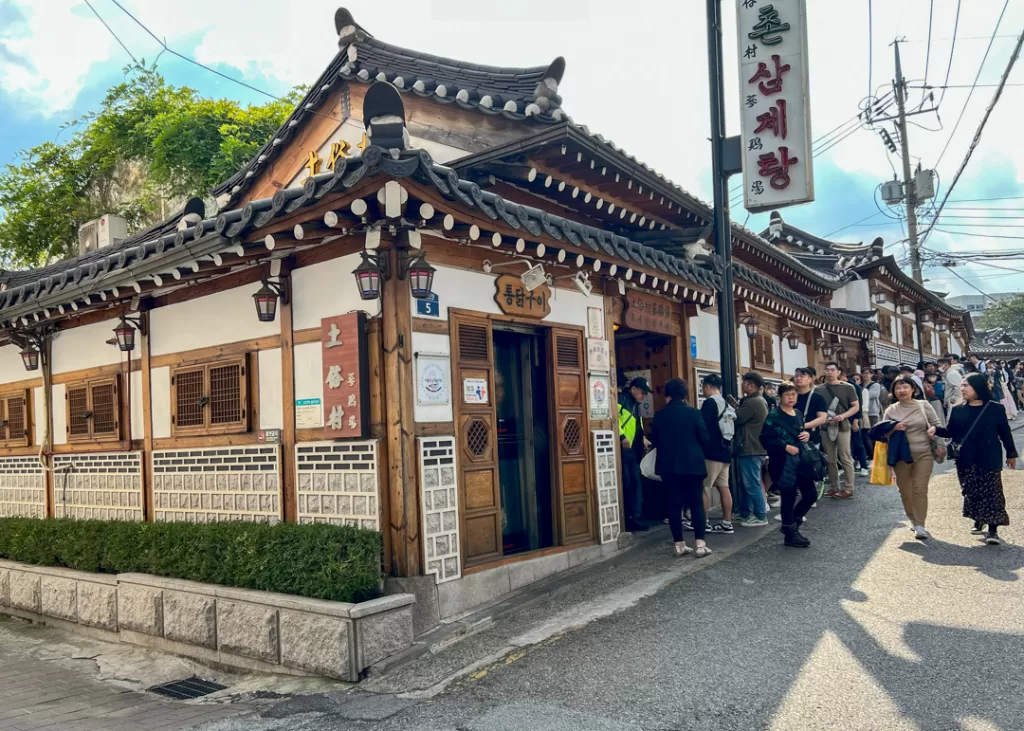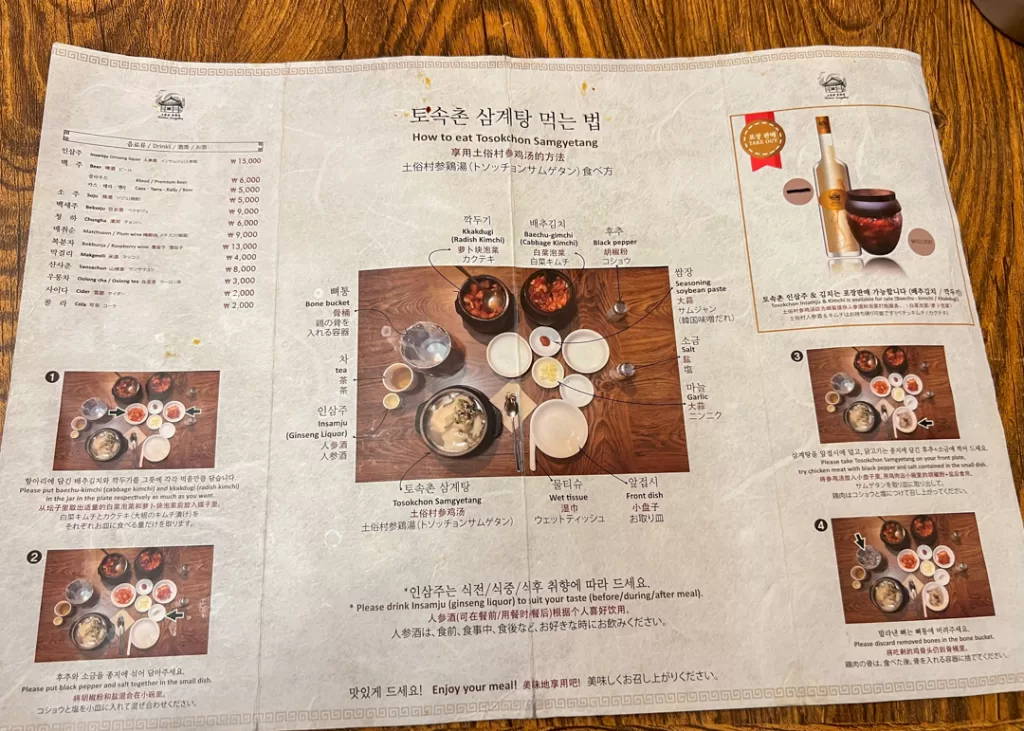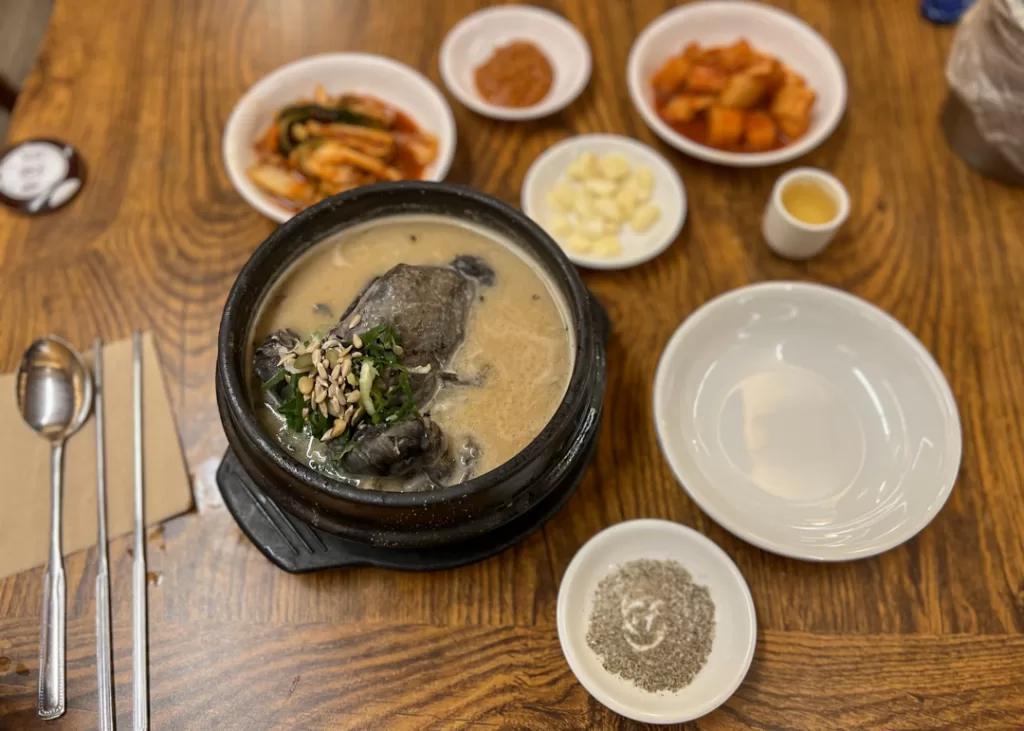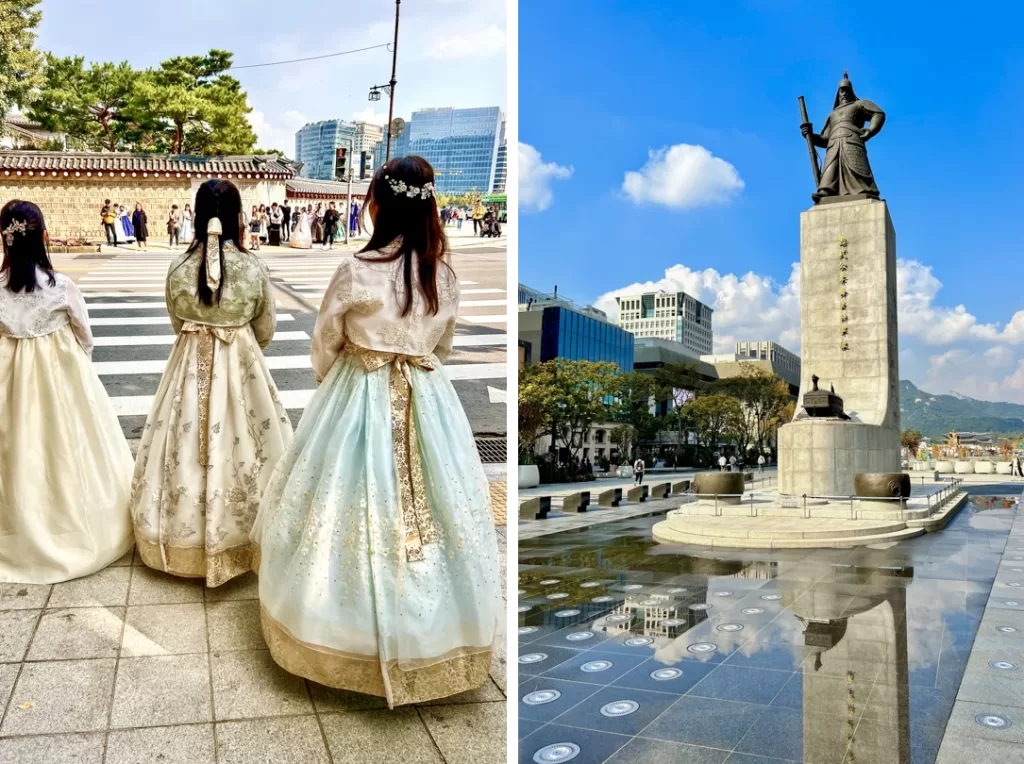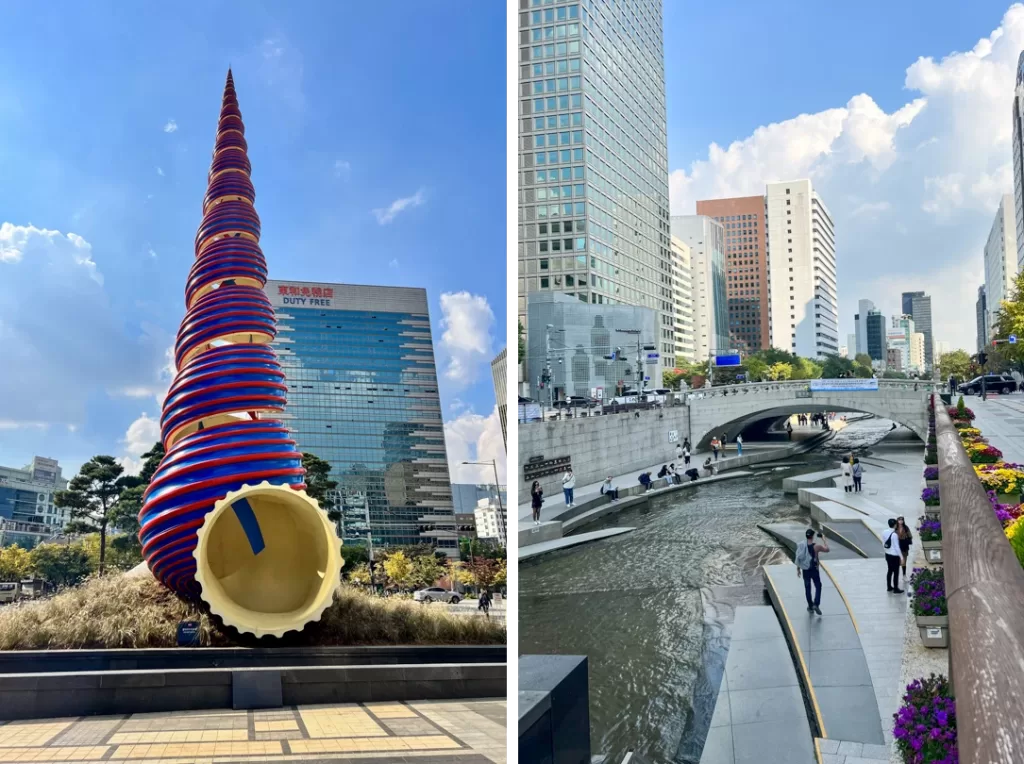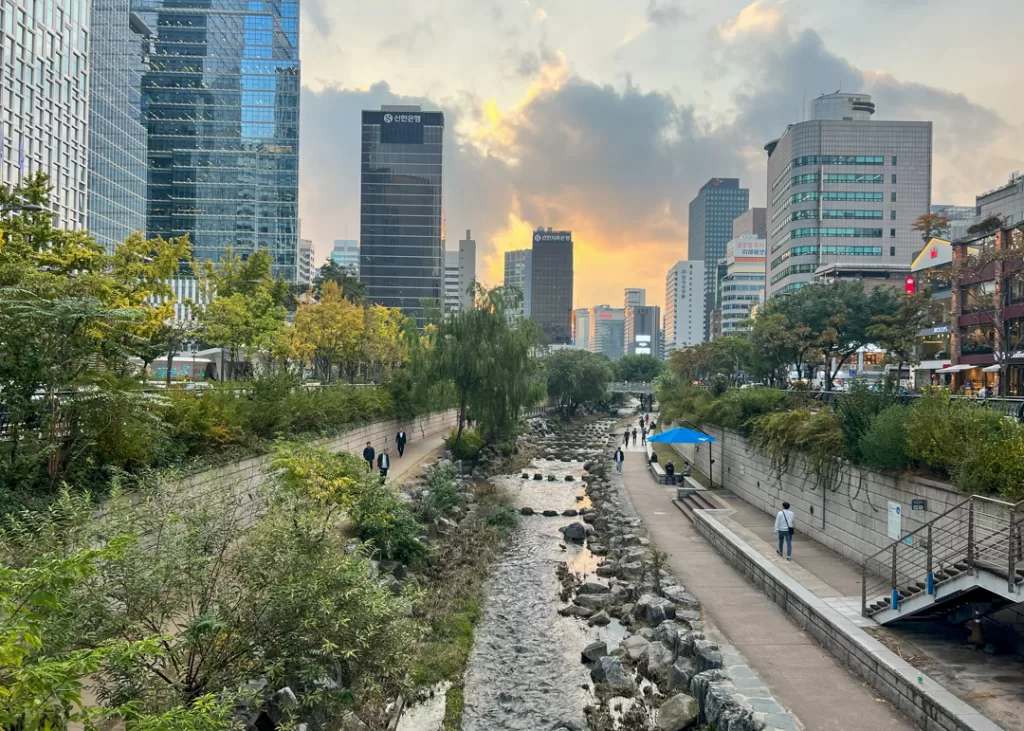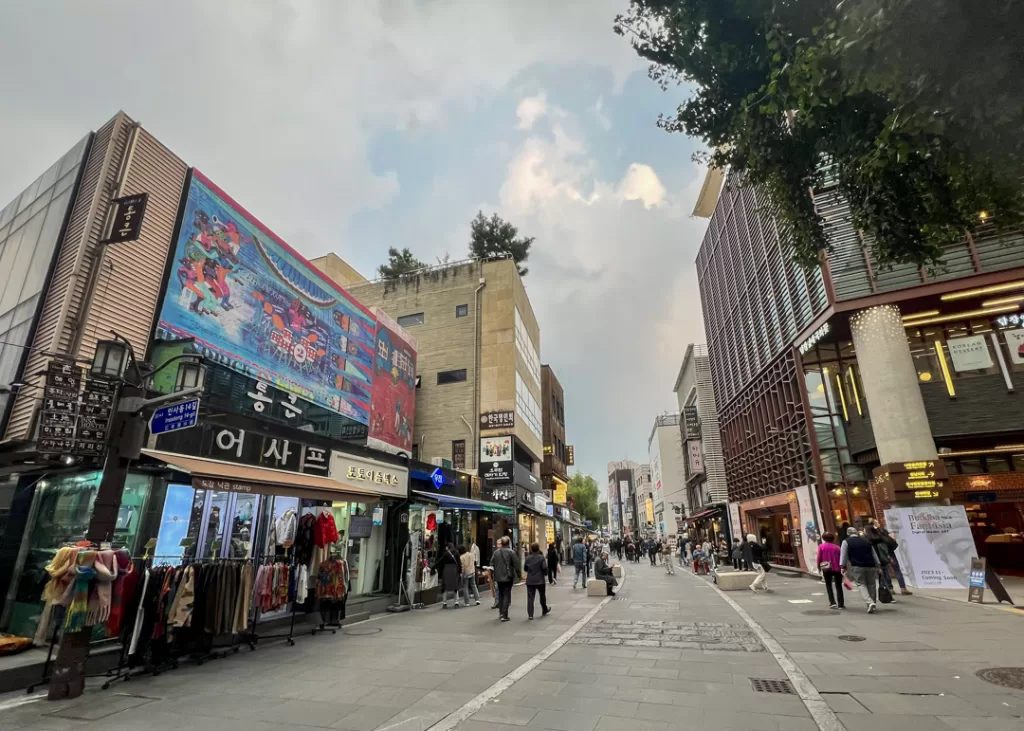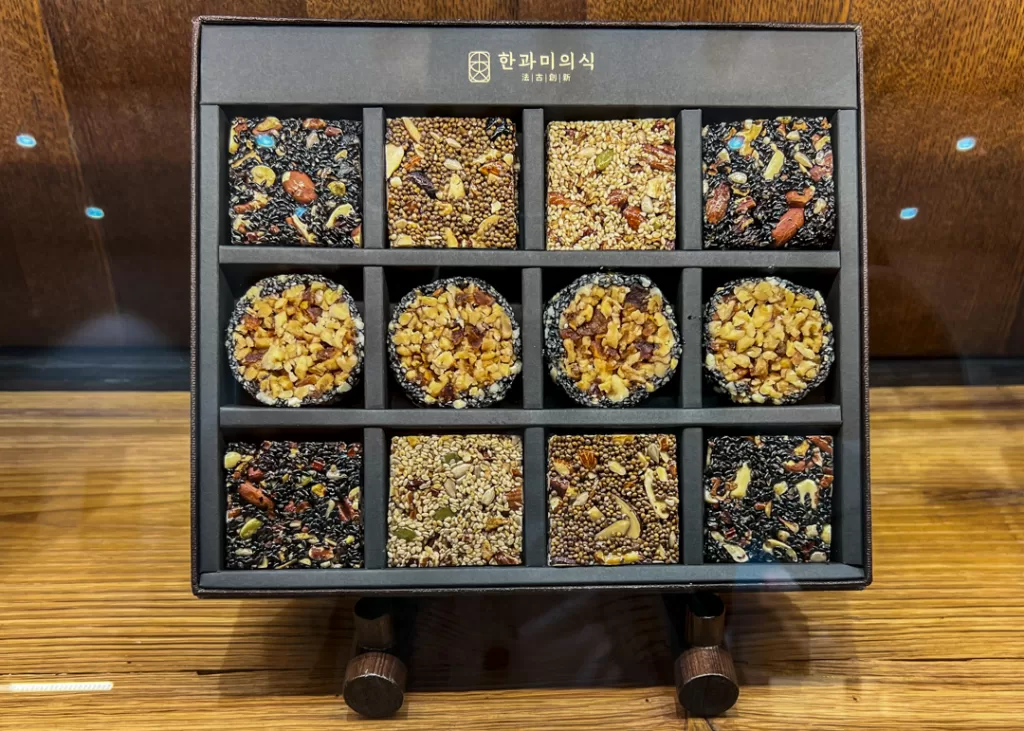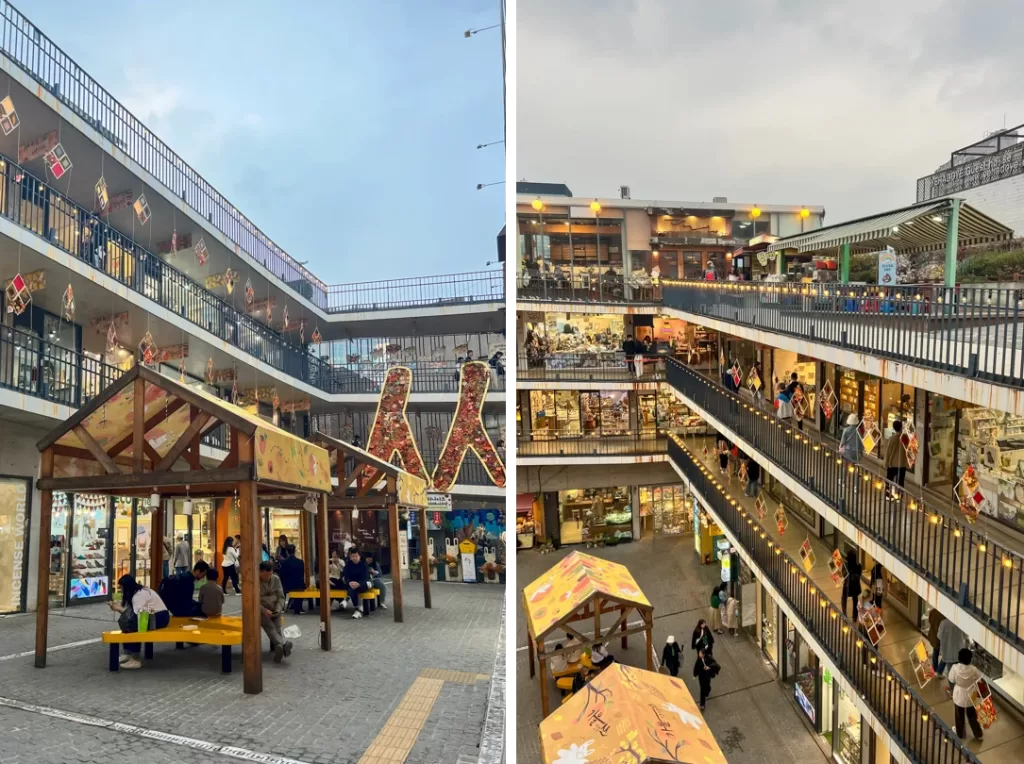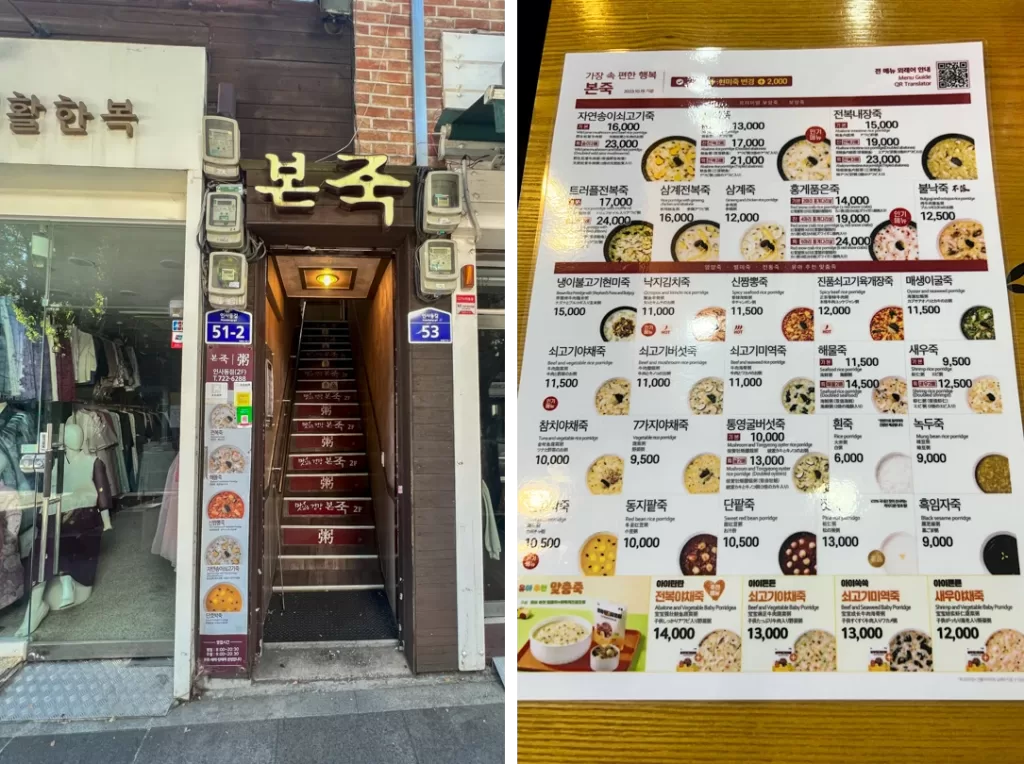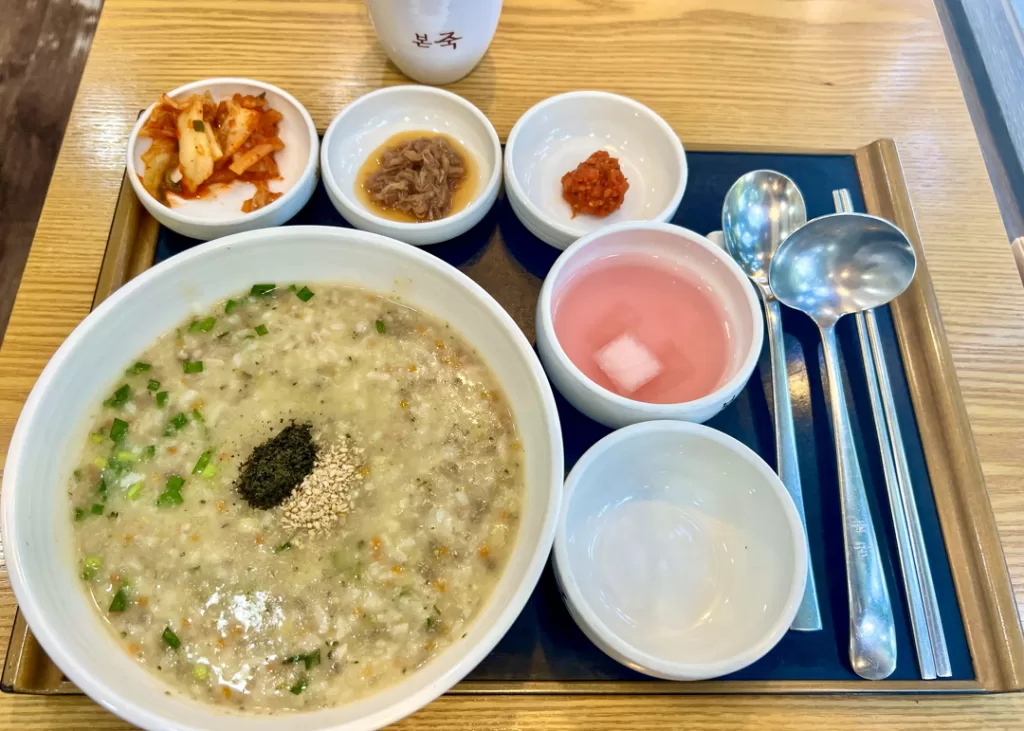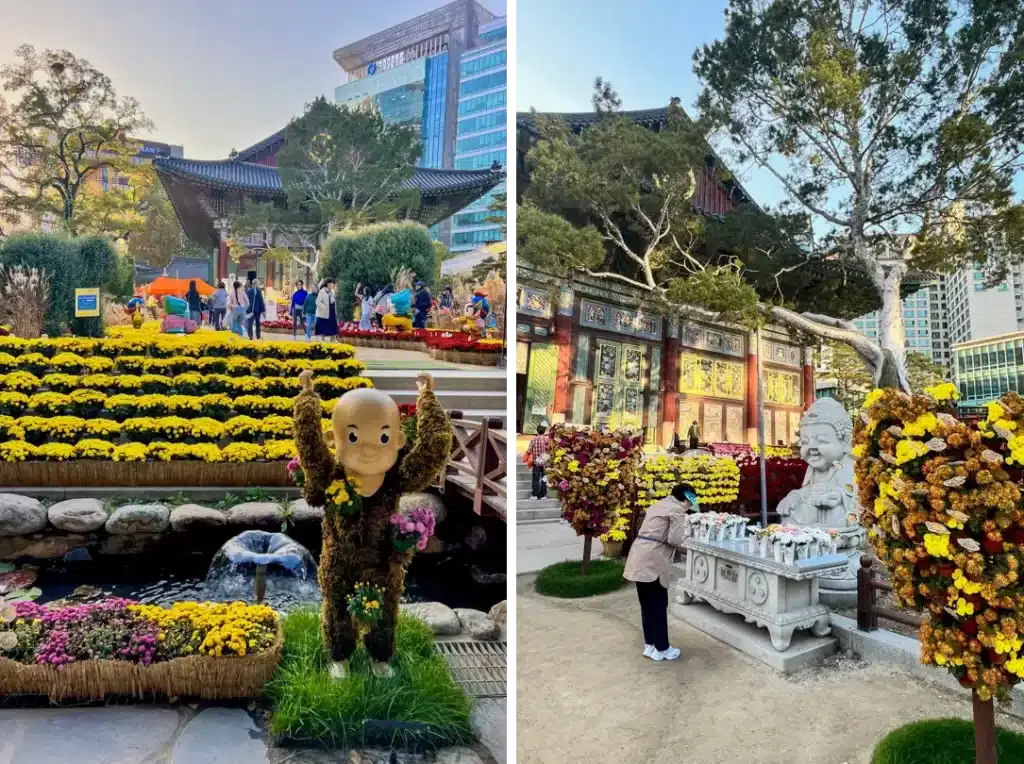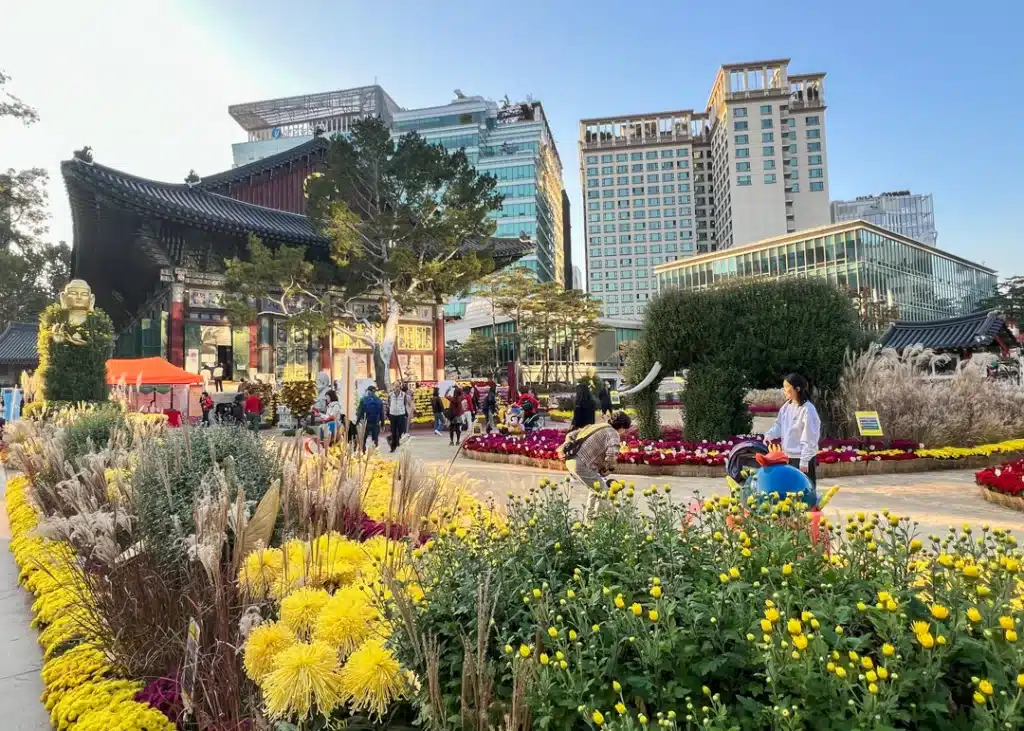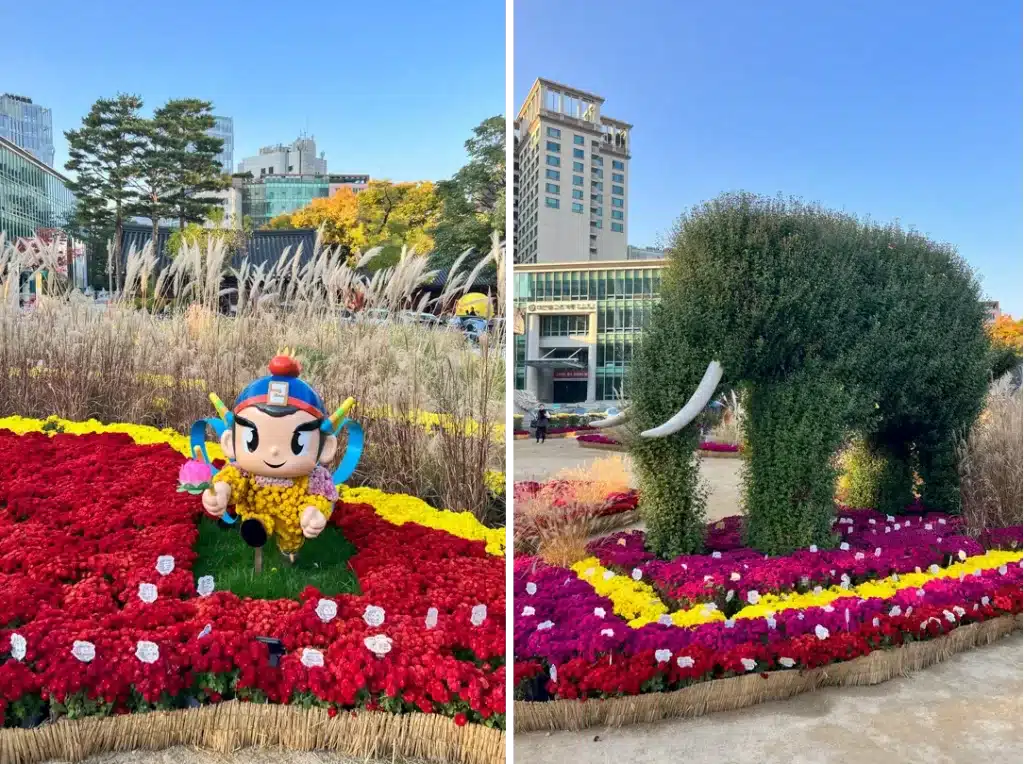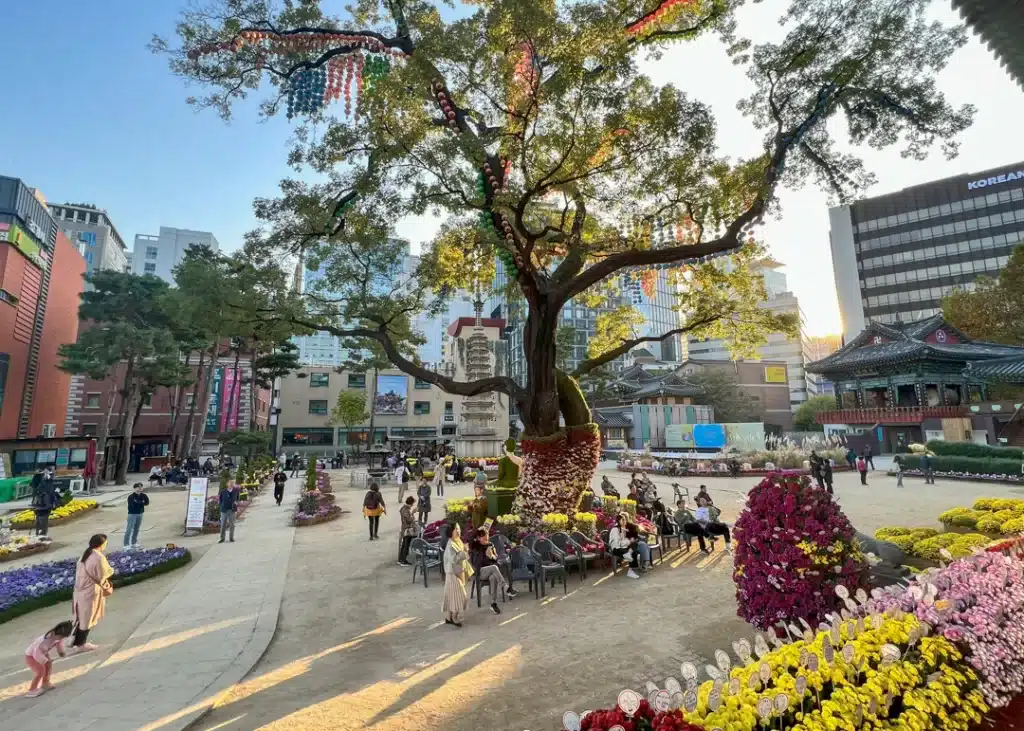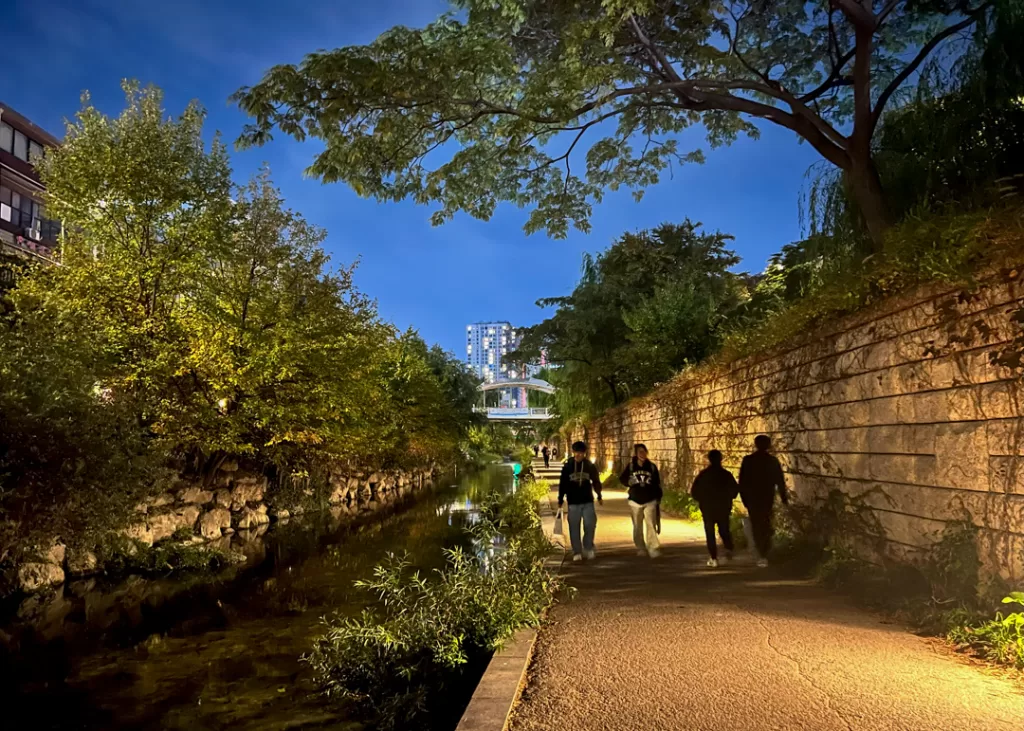This is probably my favorite day itinerary in Seoul as it packs in modern art, city life, traditional culture, and a hike in nature all in a wonderful (albeit long!) day. Start in the leafy neighborhood of Itaewon with a superlative green tea at Osulloc Tea House. This branch of the Jeju-based tea grower and producer is as artsy and rejuvenating as the area surrounding it.
Plan at least an hour just to wander around the commercial Itaewon-ro artery and venturing up any tempting side streets that hug the side of Namsan mountain in the back. You’ll stumble upon cool clothing and design shops (don’t miss the Yongsan Art & Craft Center), unique architecture, international eateries and the highest concentration of coffee shops I’ve seen in Seoul.
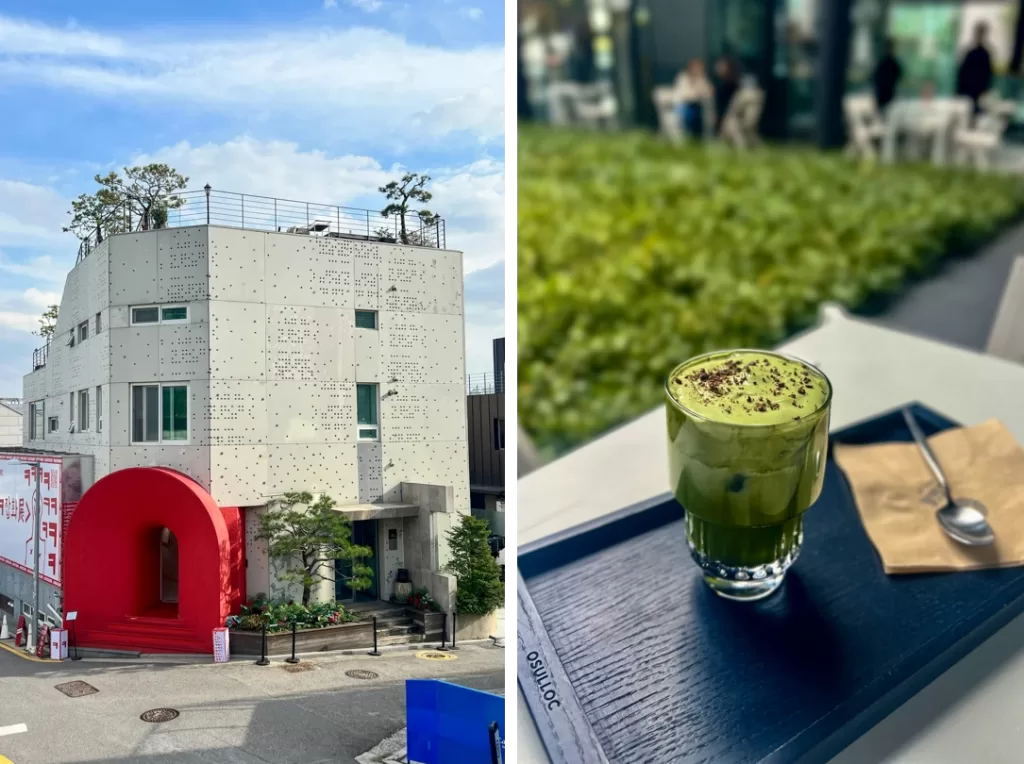
Stop by the Blue Square, if not to catch a performance at least to take a look at Book Park, its cafe/gallery/bookstore…
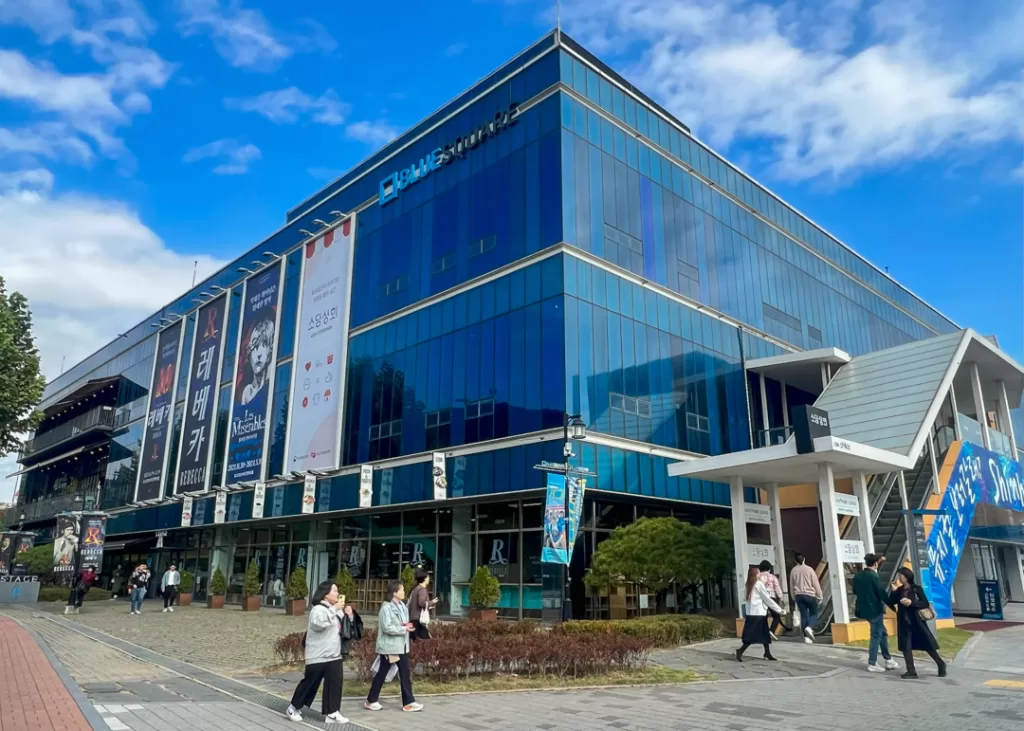
…two story filled with books stacked on never-ending shelves makes for a pretty special sight especially for any bibliophile.
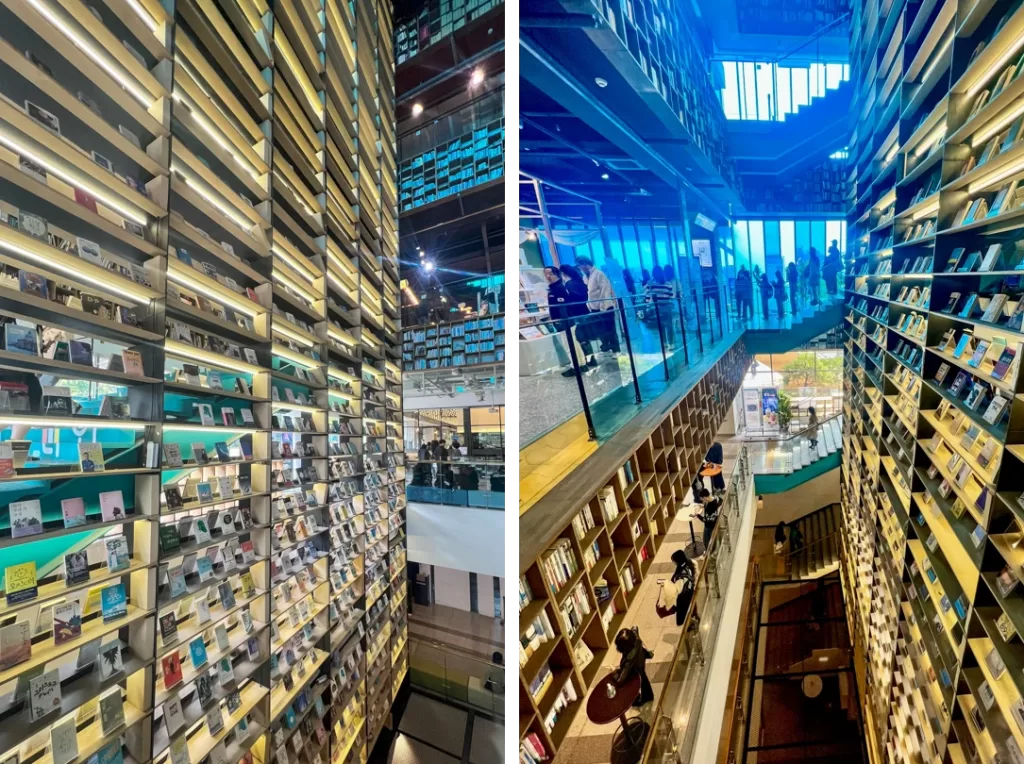
Mixing traditional and contemporary art at the Leeum Museum
Another visual marvel awaits a few blocks away at the Leeum Museum of Art, one of Korea’s leading private museums. Spend time on the art terrace admiring the monumental steel sculpture by Anish Kapoor and the three main buildings designed by star architects to distinguish between the traditional and contemporary collections.
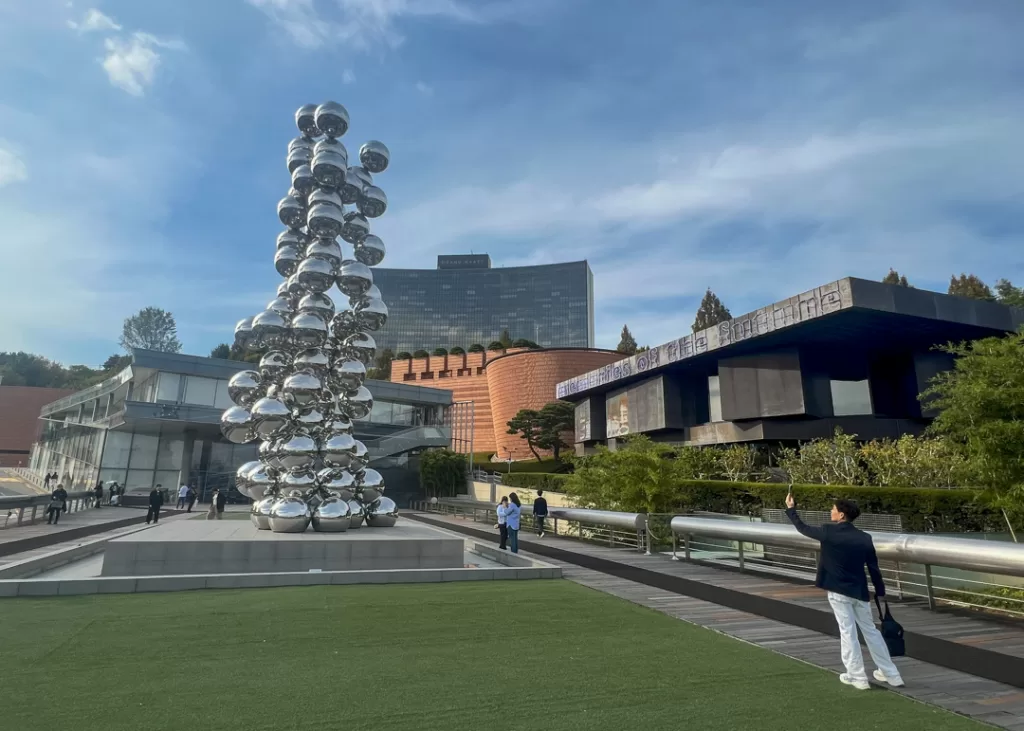
Beautifully laid out, it’s a joy to walk across all three distinct sections, admiring as much the art on display as the buildings themselves.
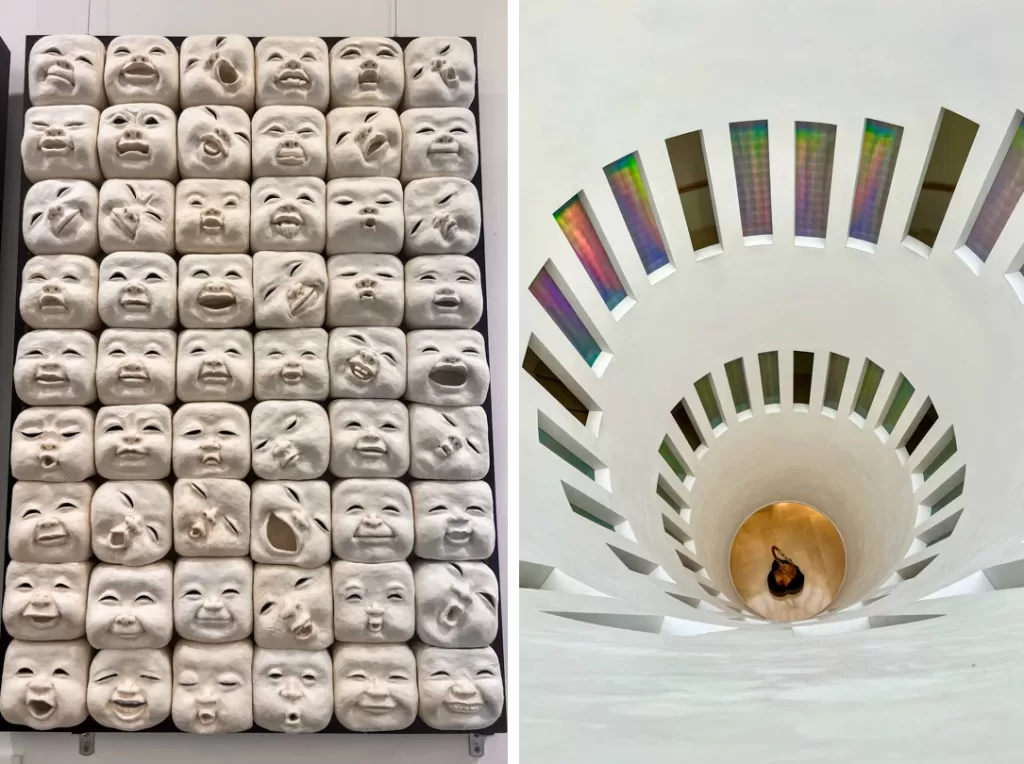
The big draw is M2, the contemporary wing made of rusted stainless-steel by Jean Nouvel. It showcases early and mid-century paintings, sculptures, and contemporary installations by esteemed Korean and international artists.
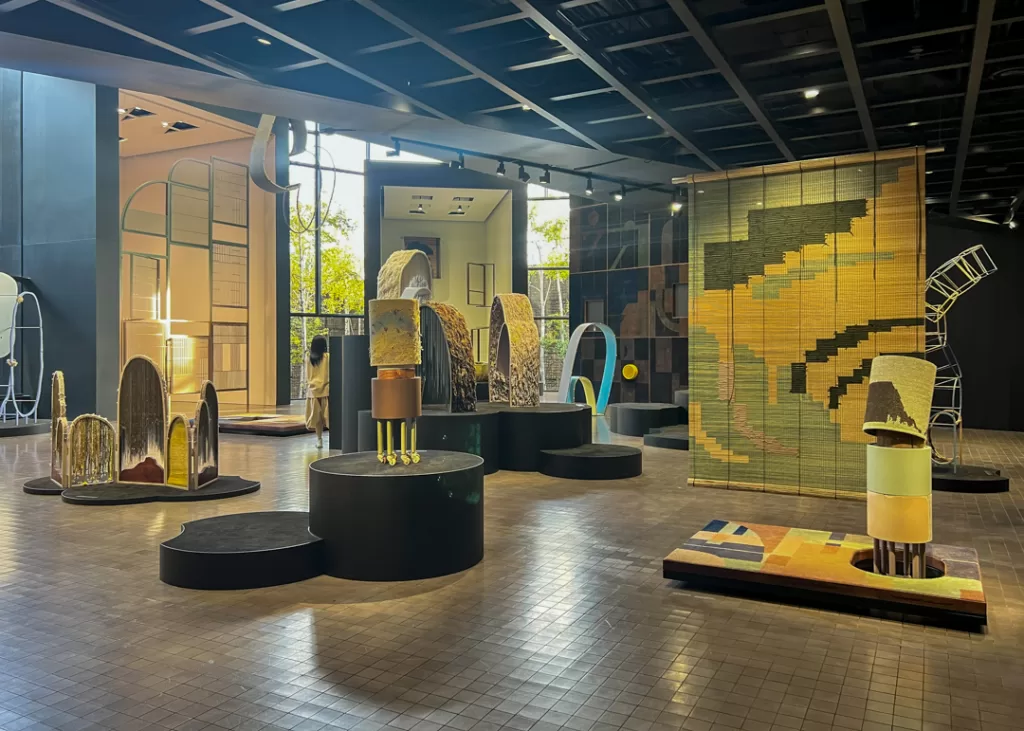
Immersive village tour
A quick subway ride will transport you to the other side of Namsan Mountain (you’ll get your exercise soon enough) and at the door of Namsangol Hanok Village.
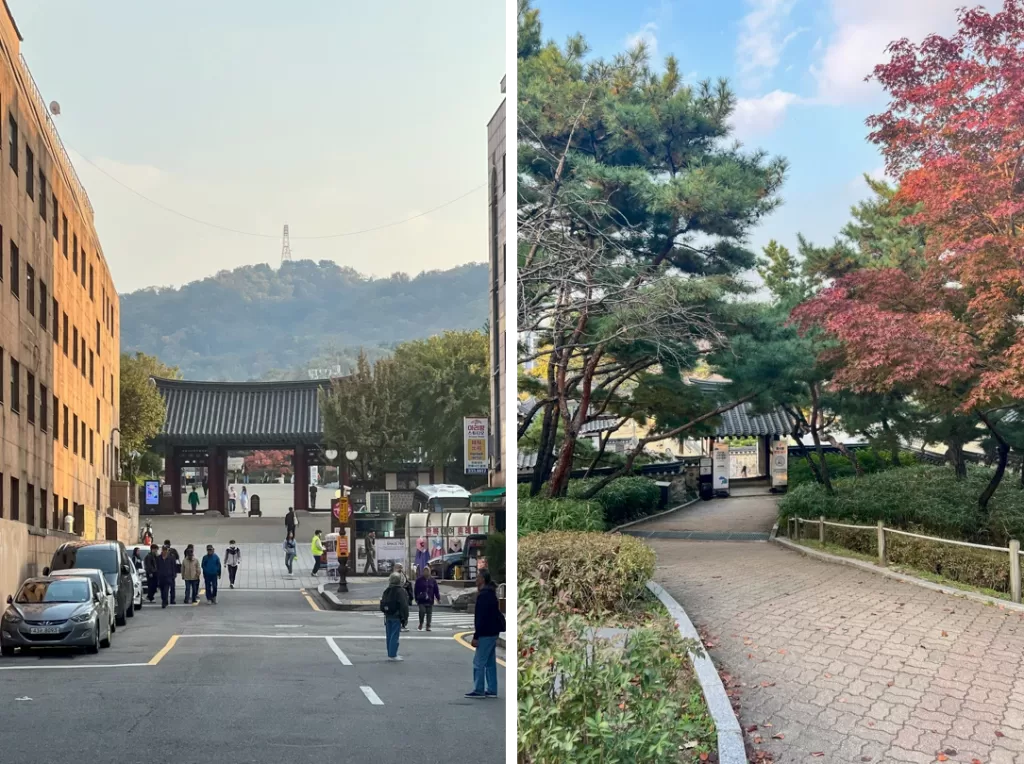
Located in a park at the foot of the mountain, this recreated village of historical Korean buildings provided the perfect backdrop for a peaceful afternoon walk.
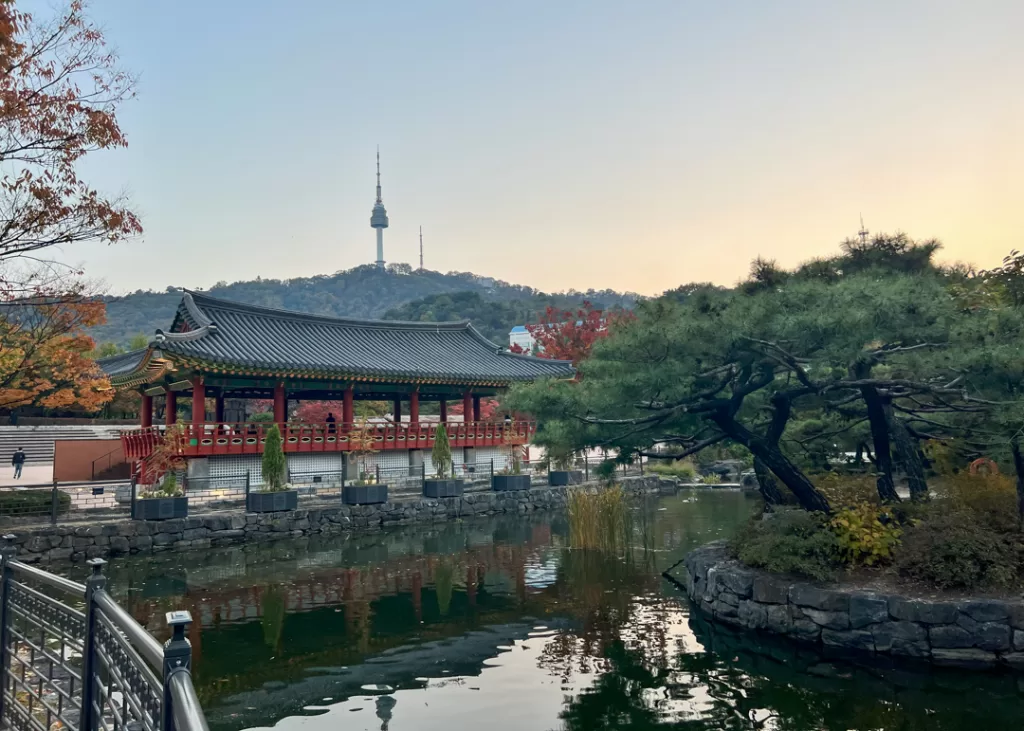
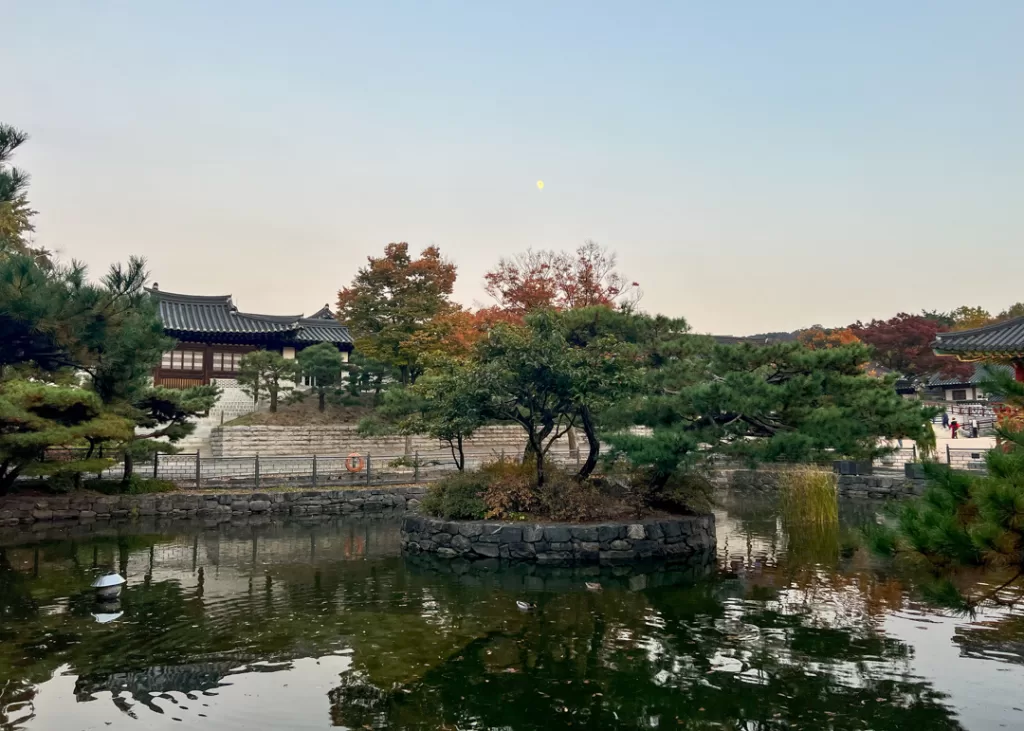
Follow the lush paths curving around ponds and clusters of buildings and sneak into courtyards for the real immersion of the village. Contrary to the private nature of Bukchon Village which is still occupied, here you can freely roam around five different traditional houses which have been relocated here from different parts of Seoul.
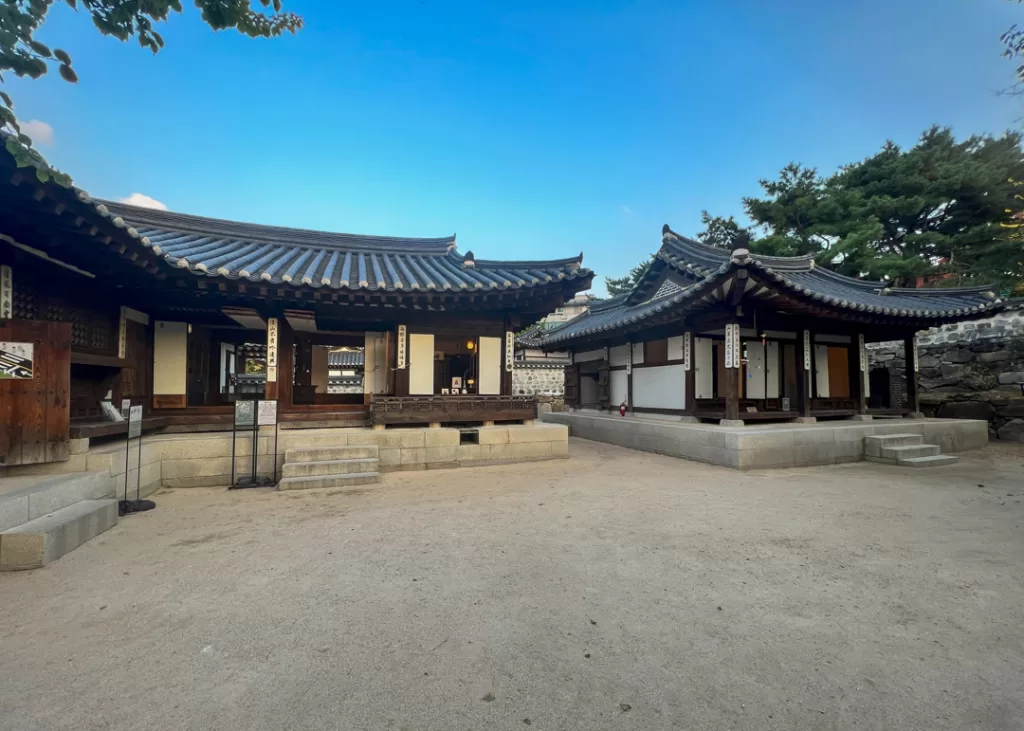
All the little details have been included to give you a sense of how the upper class lived in the Joseon Dynasty, from home decor to practical tools and original furniture.

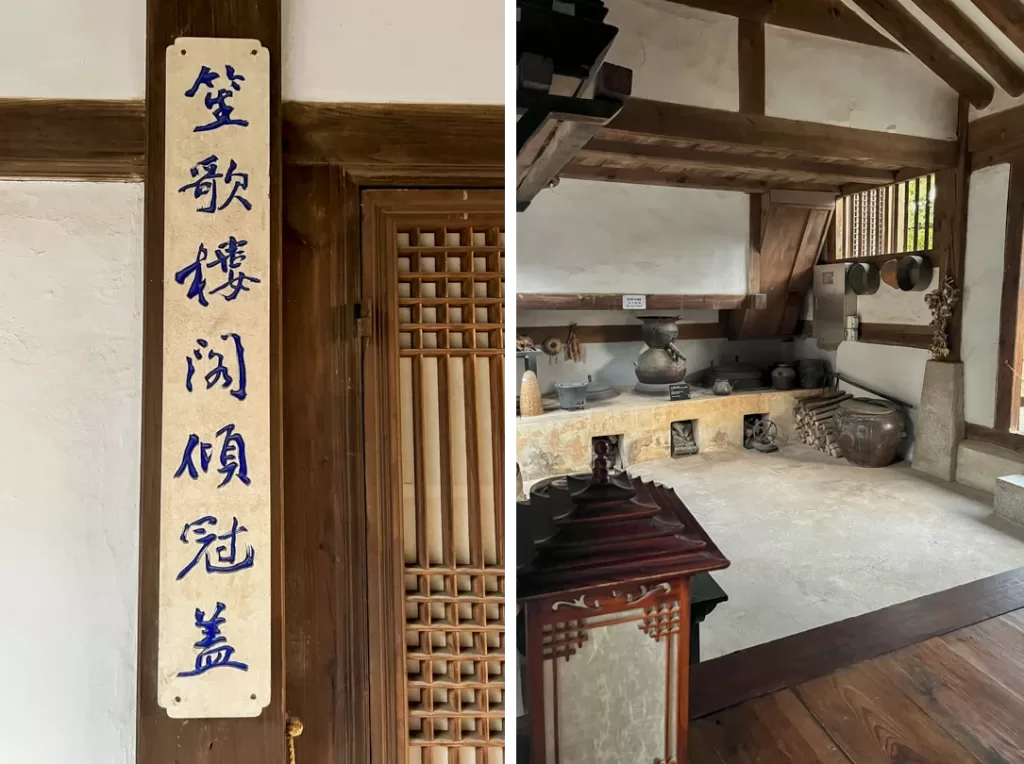
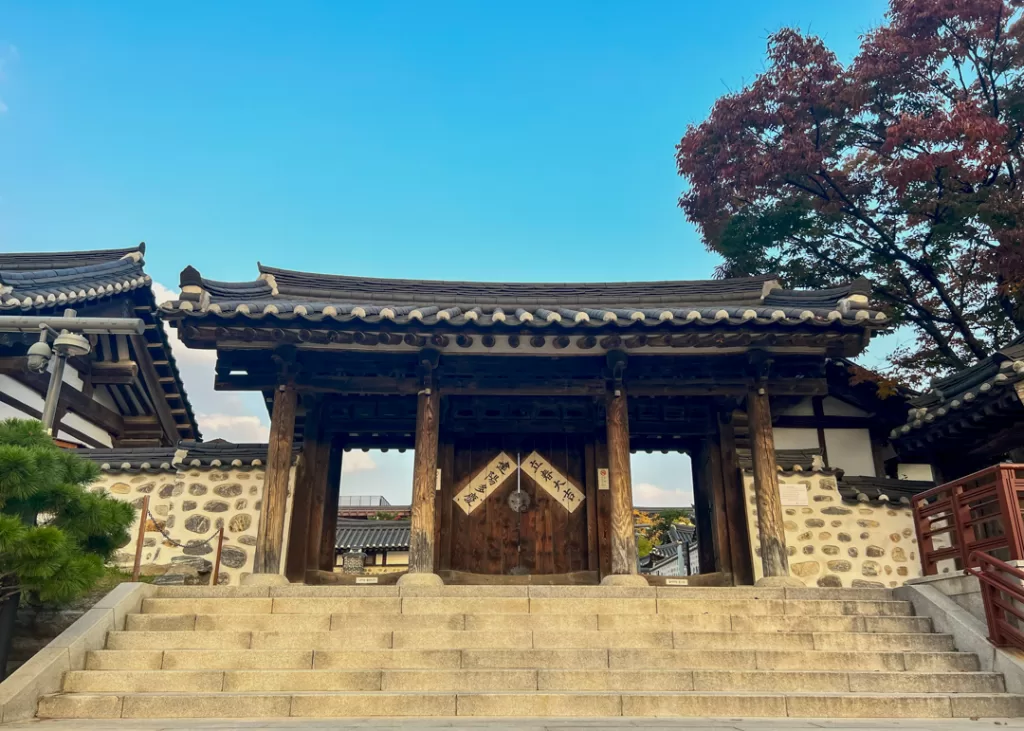
The village is refreshingly crowd-free and you’ll see locals just taking their daily walk since it’s free entry – what a lovely place to decompress!
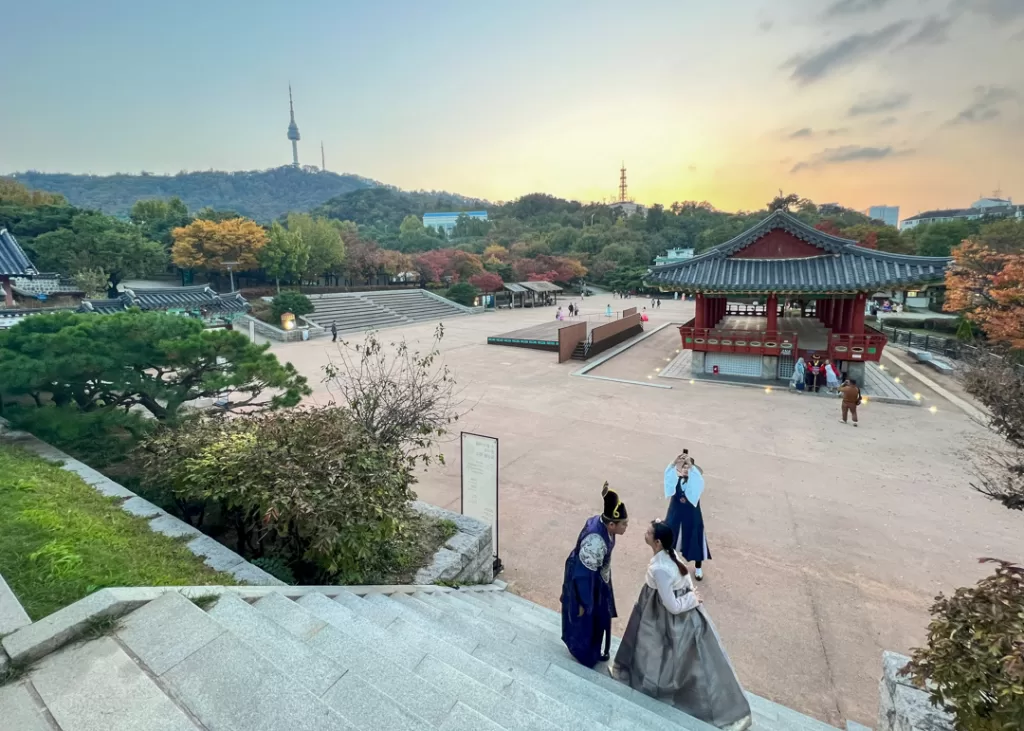
Native plants and trees add to the authenticity of the place and water channels have also been carved out following the way people used to access water back in the days.
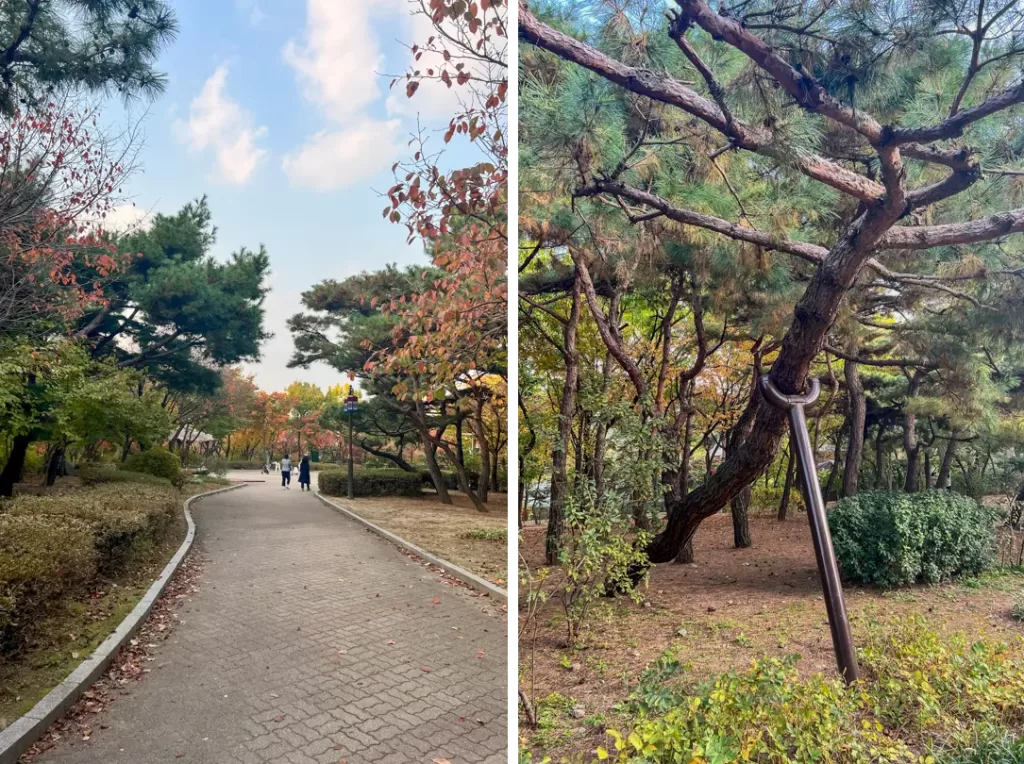
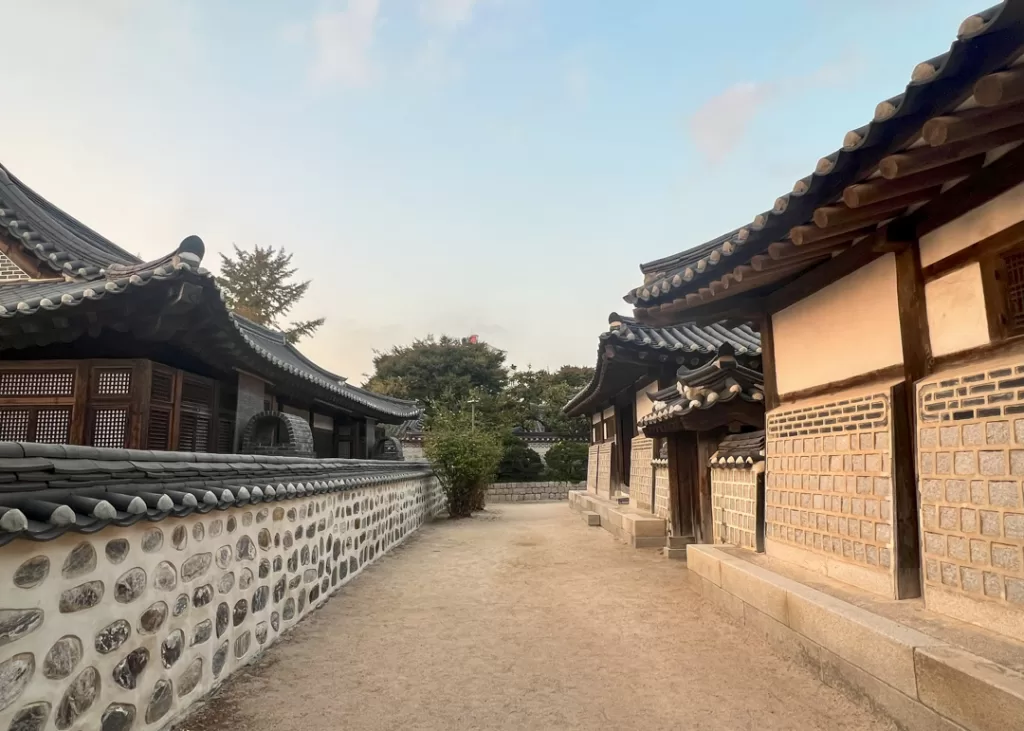
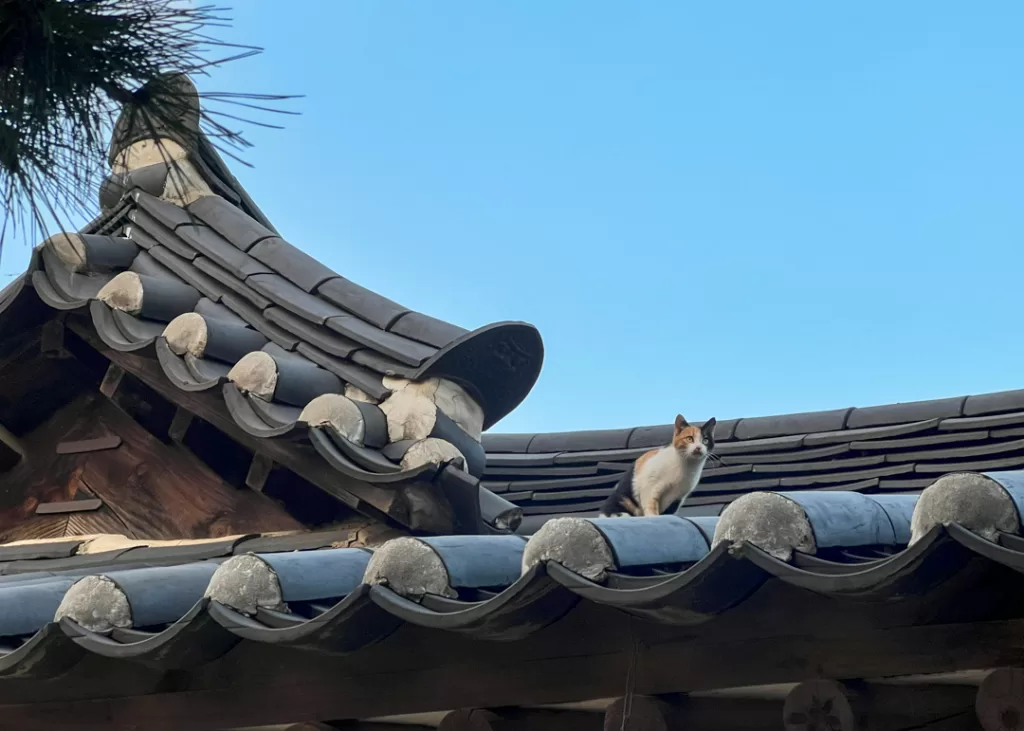
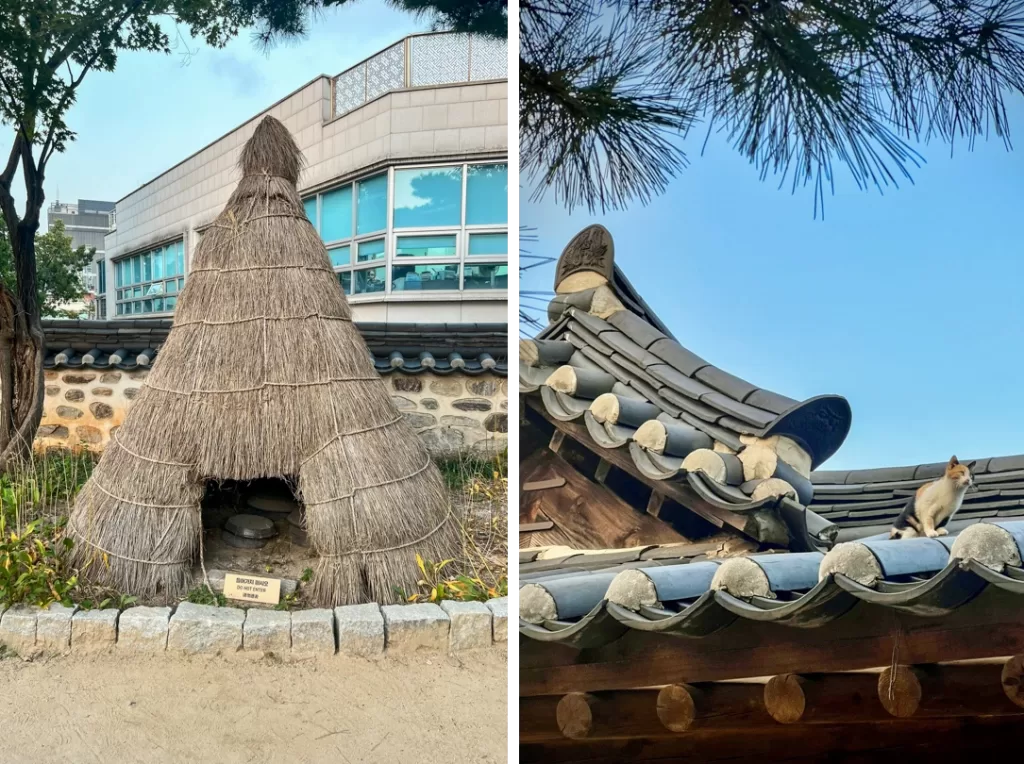
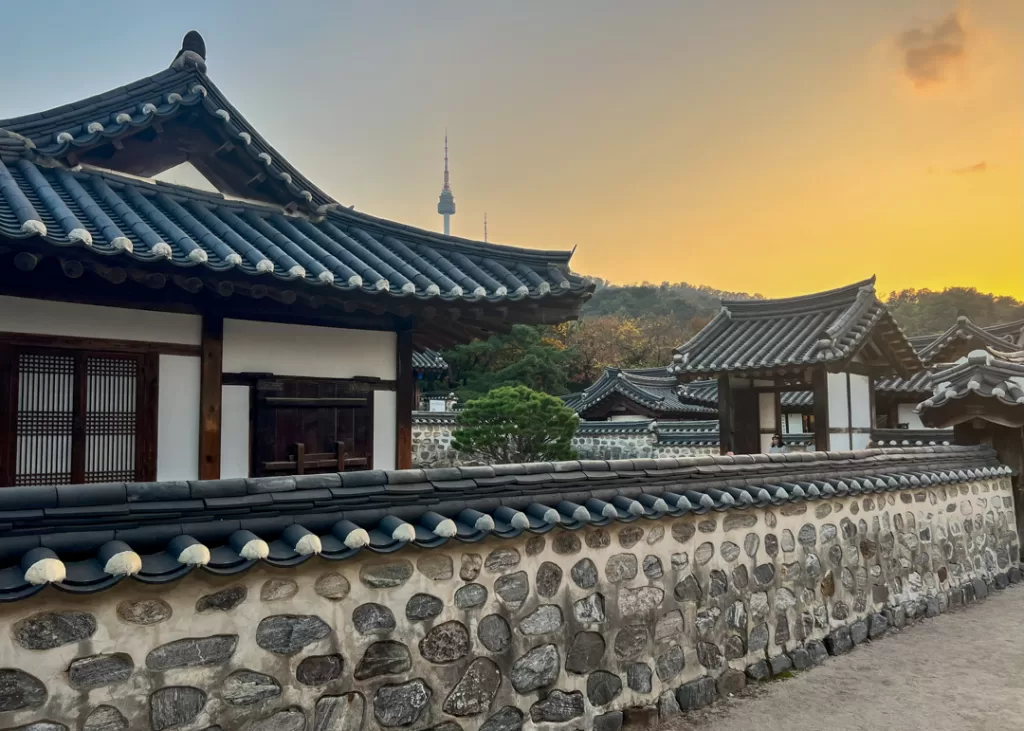
Backyards (or the likes of) held small gardens and most importantly large numbers of pots holding precious kimchi…
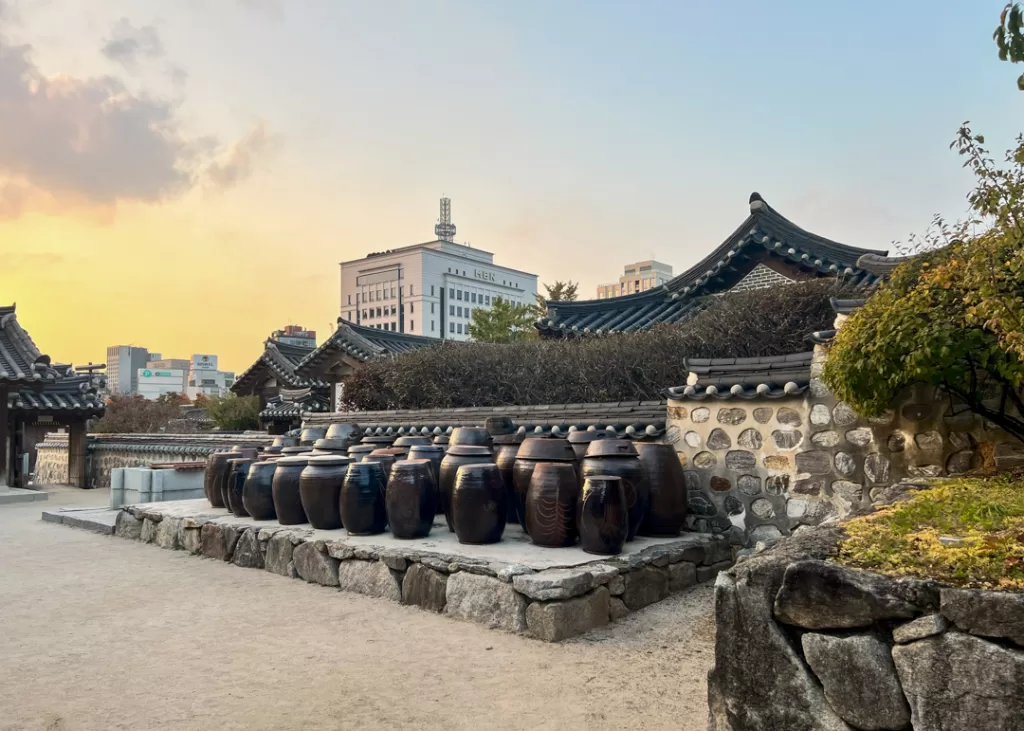
Time to get your glucose levels up as this was just the warm up before the day’s real exercise. For a late afternoon snack within a short distance you could do worst than pop into the vegan donut shop Overte.
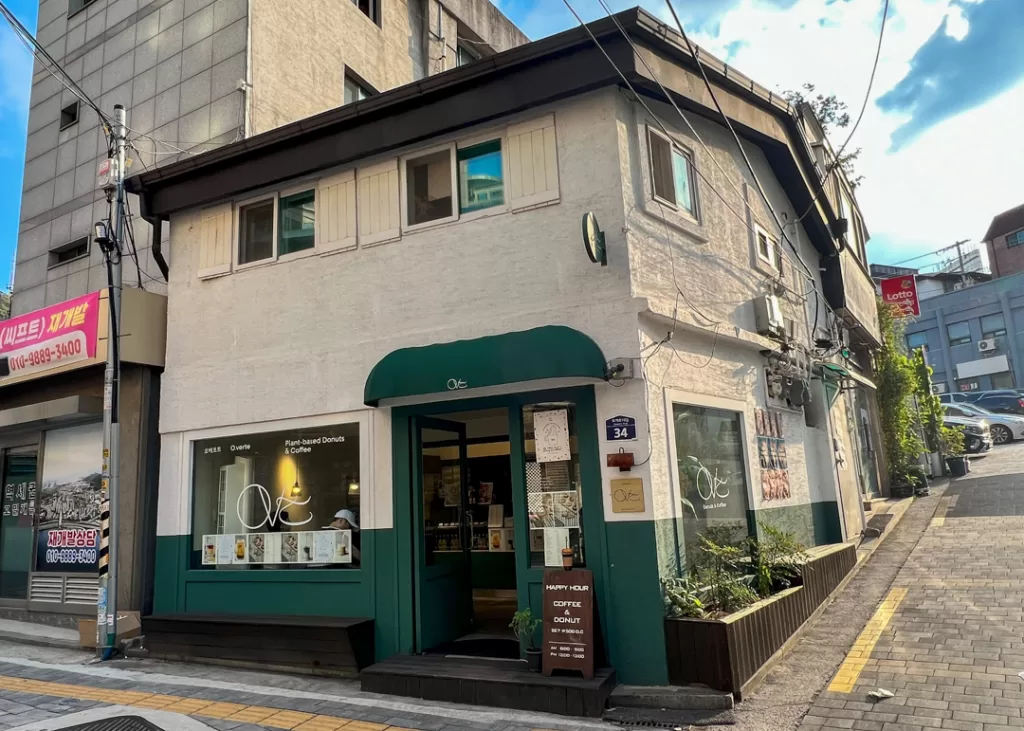
A strong coffee paired with a black sesame cream donut was just what I needed.
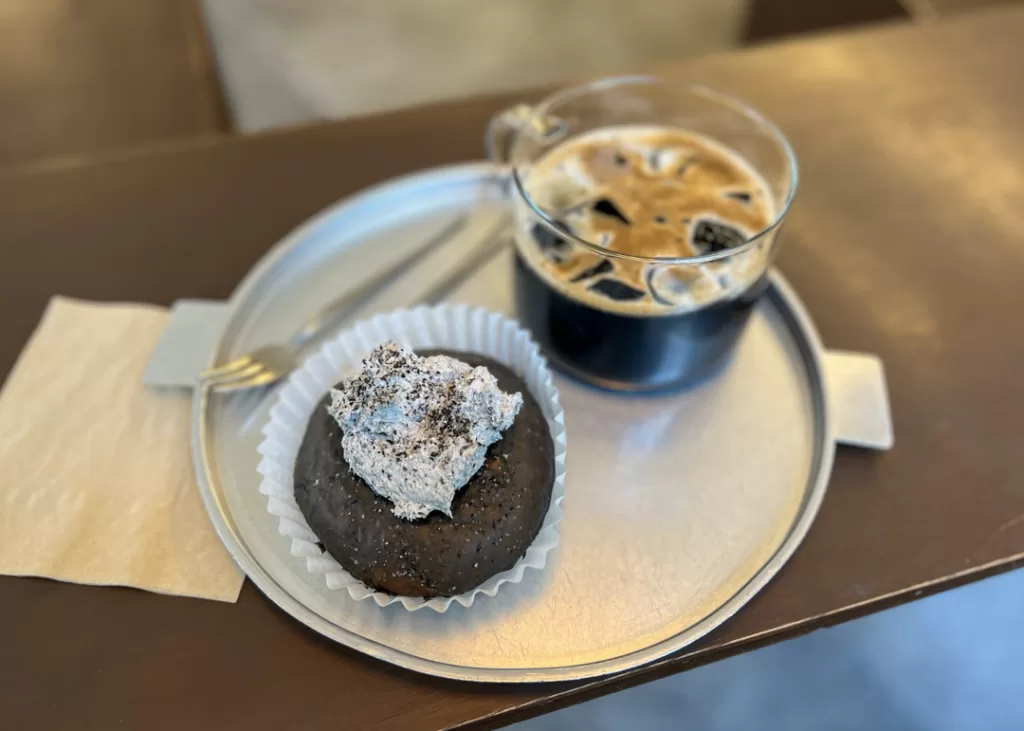
A hike to Seoul’s best views
Namsan Park is the largest park in Seoul and popular for hiking, the N Seoul Tower, and panoramic views of downtown Seoul. There is a cable car that can bring you to the top in a few minutes but the walk up is lovely and fairly easy. Try to go towards the end of the day to catch the sunset from the tower at the top. Just walk towards the park and you’ll see steps leading up near the cable car station (the ones I took were in the parking lot of the Seoul Education Research & Information Institute).
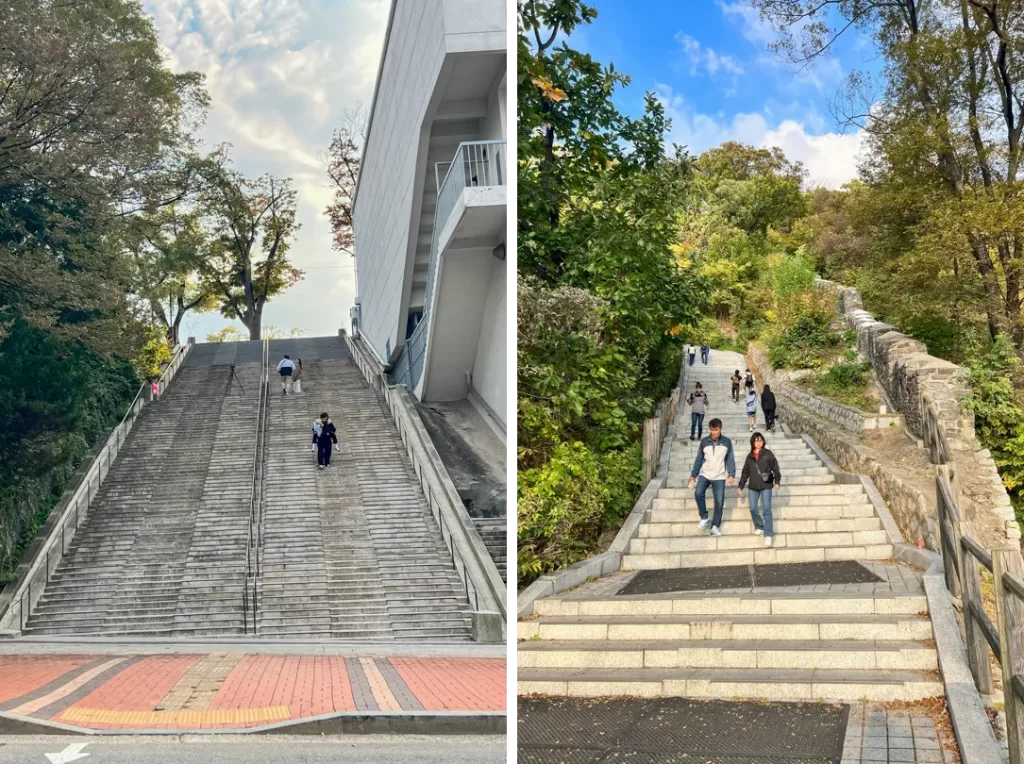
The pedestrian path and stairs wind through greenery and offer views of the city as you start climbing up.
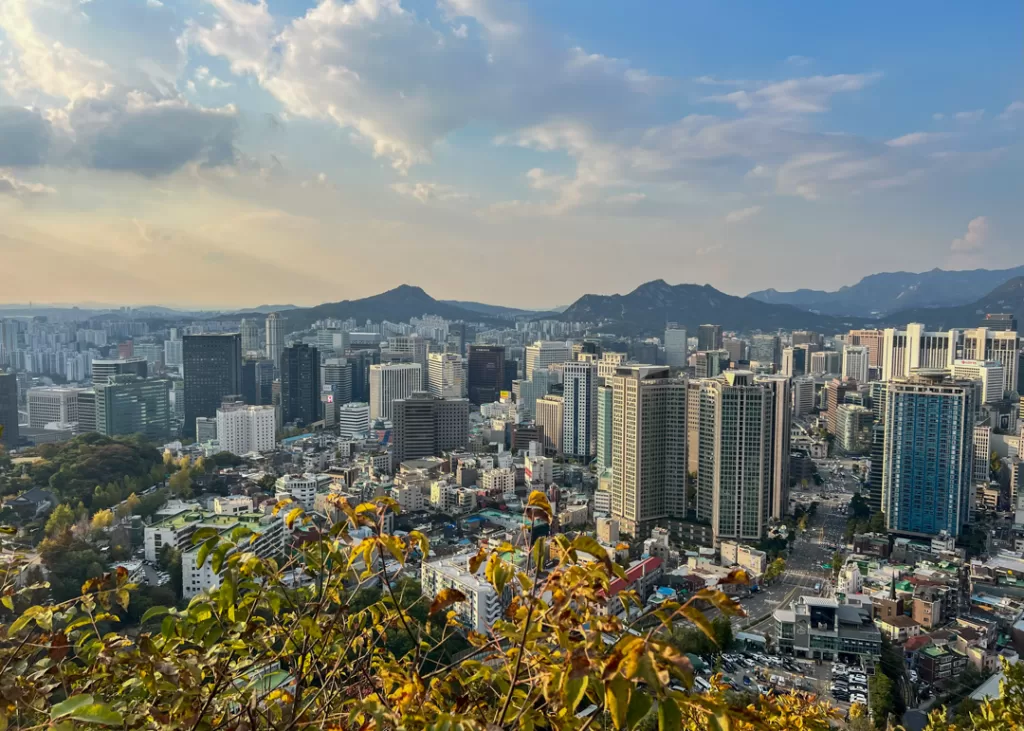
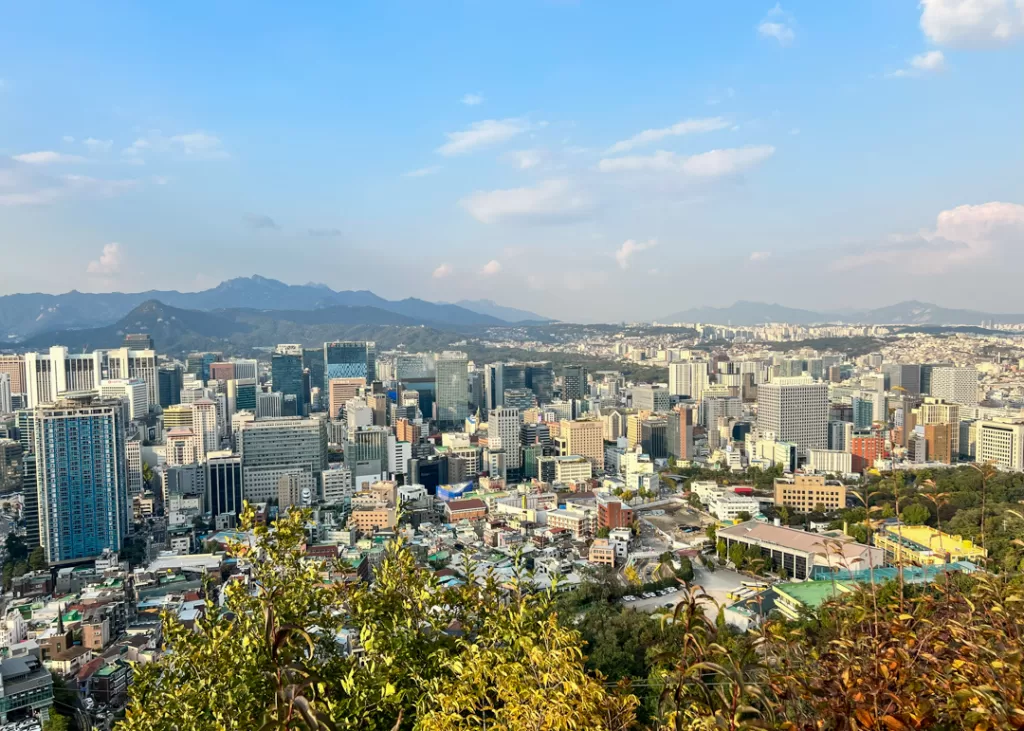
Soon you’ll have your goal right in front of you: the iconic N Seoul Tower.
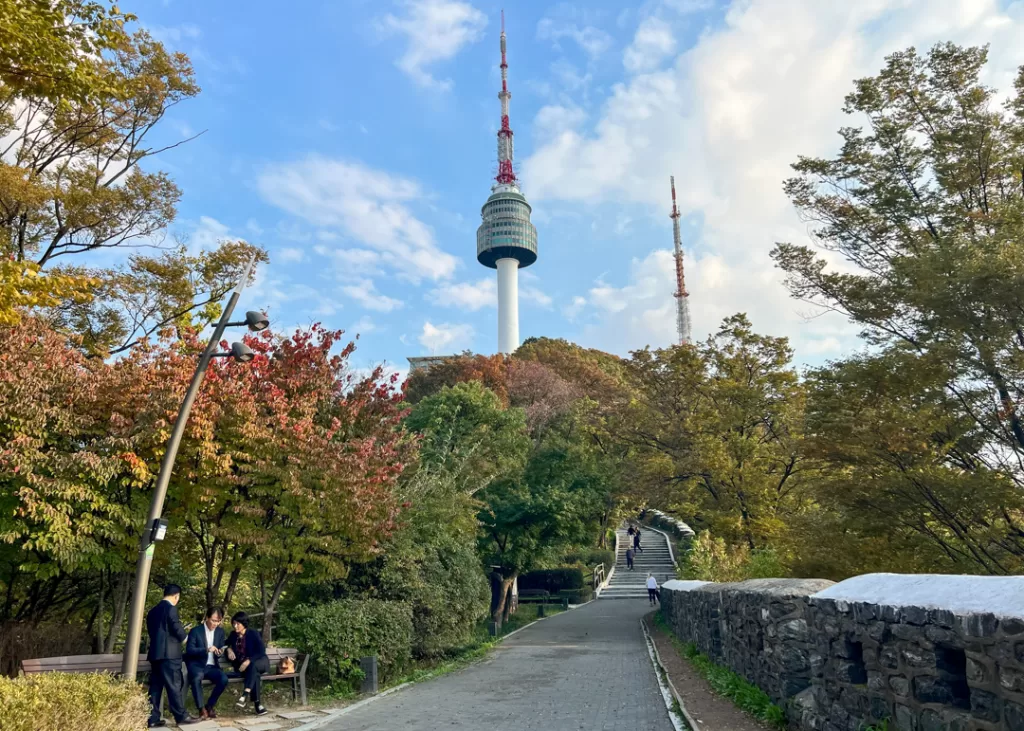
You’ll finally reach the summit after about 30 minutes or so of walking and now stand in the geological center of Seoul.
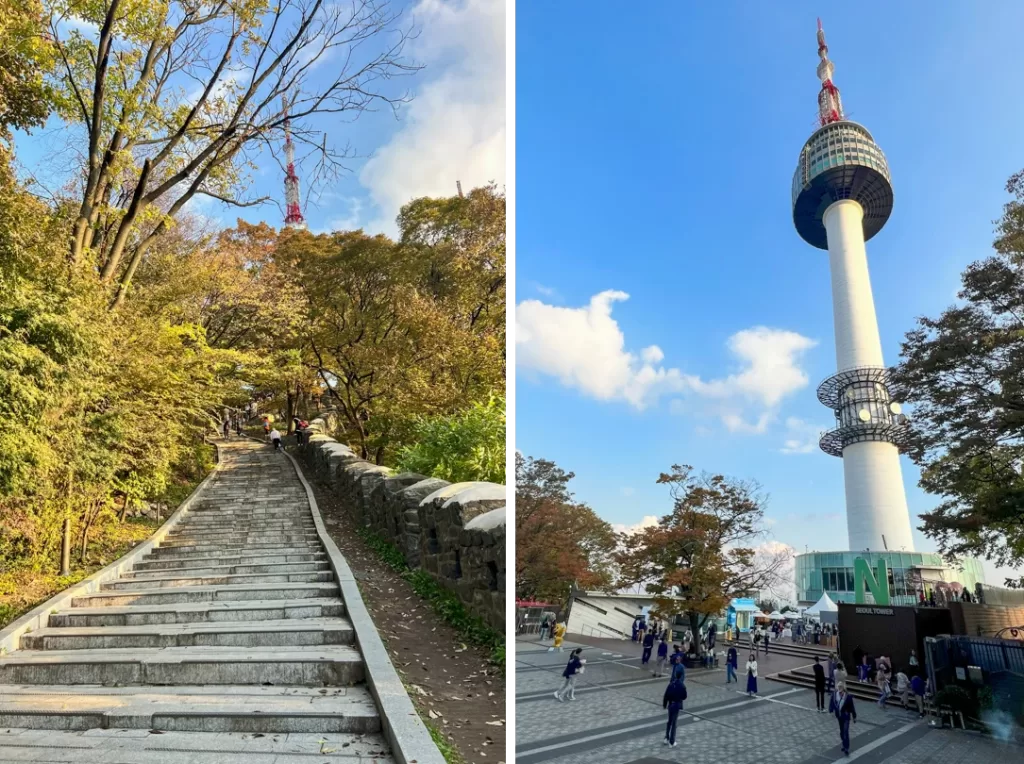
The peak of Namsan is at 262 meters (860 feet) and you’ll get some pretty good views of the city from the wide terrace.
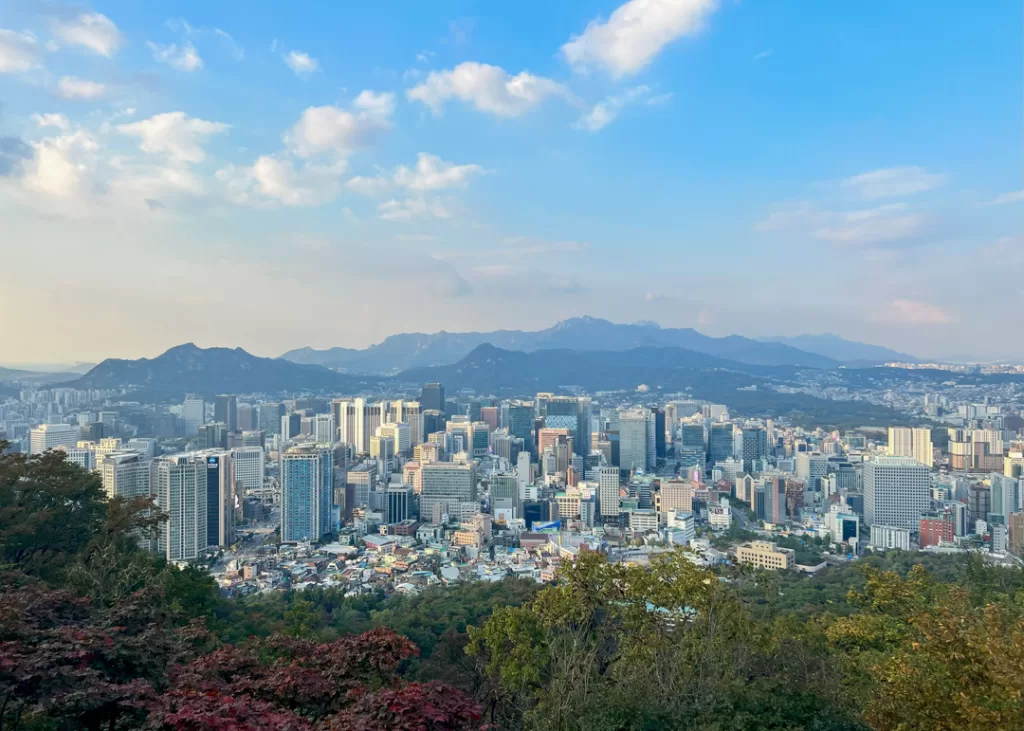
Go up in the tower though to gain an extra 237 meters (777 feet) in altitude and 360 views from the observation deck.
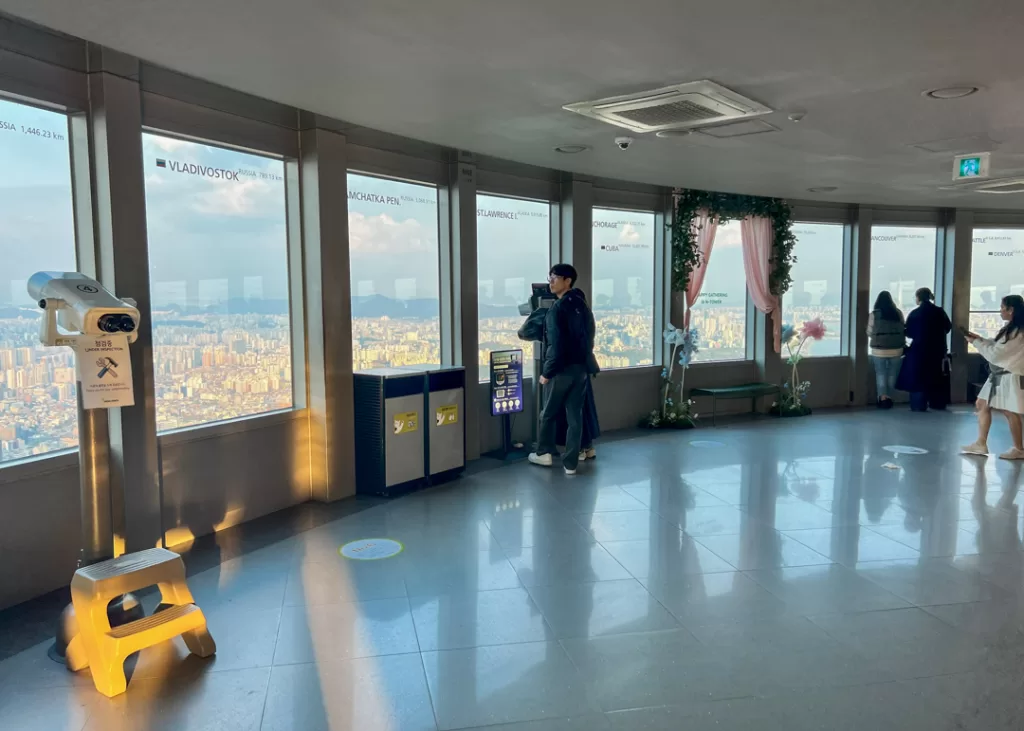
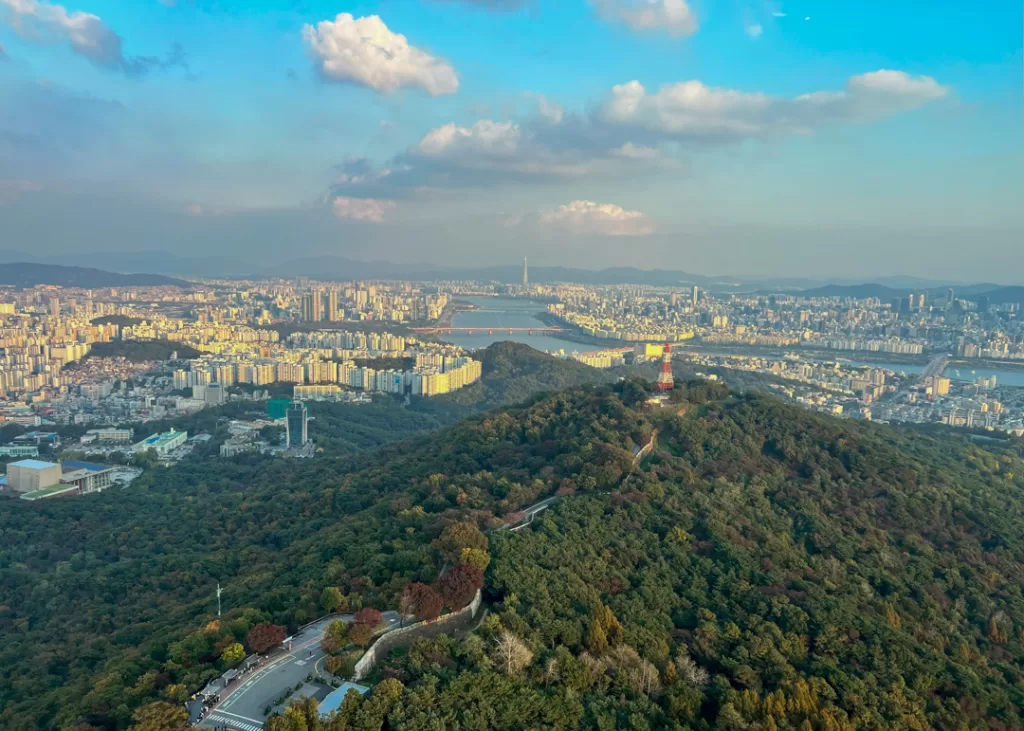
Try to time your visit with the sunset if you can for a spectacular panorama. There are a few restaurants (including one in the tower) and food stalls at the summit to kill time and watch dusk fall over the metropolis.
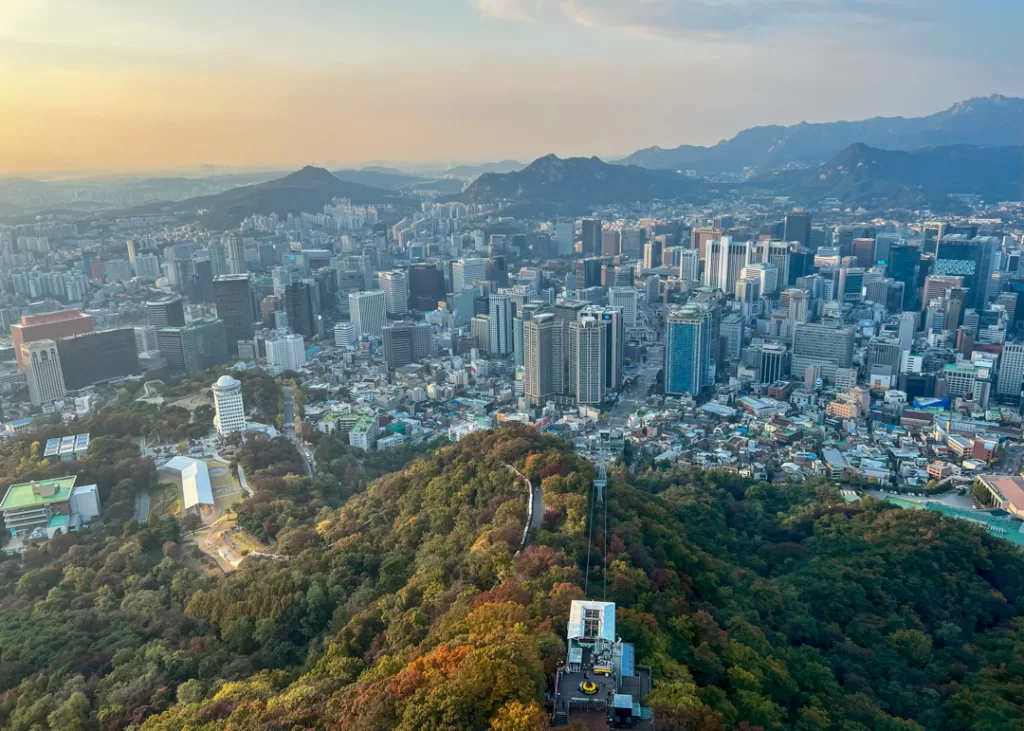
Once you’ve seen the city lights turn Seoul into a sea of twinkling stars, you can walk back down or take the cable car down and a short walk to the nearest subway station.
